














Chaos and uncertainty is buffeting retailers and manufacturers, forcing organisations to innovate their way to profit.

Sportswear giant Nike is running a global fire-sale, because it is facing a glut of inventory, caused by –among other things – earlier-than-expected ordering by retailers, delivery problems (both too quick and too slow) and cash-strapped customers reigning in spending.
Nike is not alone; many major retailers are facing the same set of issues. This has left retailers facing the perilously difficult task of managing inventory in a world of turmoil, while extending reach to customers.
While the digitalisation of inventory management can help here, we learn in this issue of Supply Chain that it is by no means a panacea.
Technology rarely is. In this instance, retailers-cummanufacturers such as Nike need to look beyond technology, to reimagine the traditional retail supply chain as far more network-based, more dynamic, and more customer-focused.
This is no small order, and is indicative of the complex problems facing many organisations in today’s uncertain world.


That space – where problems meet solutions – is where you will find Supply Chain magazine, asking questions and seeking answers.
SEAN ASHCROFT sean.ashcroft@bizclikmedia.com


“Retailers face the difficult task of managing inventory in a world of turmoil, while extending customer reach”







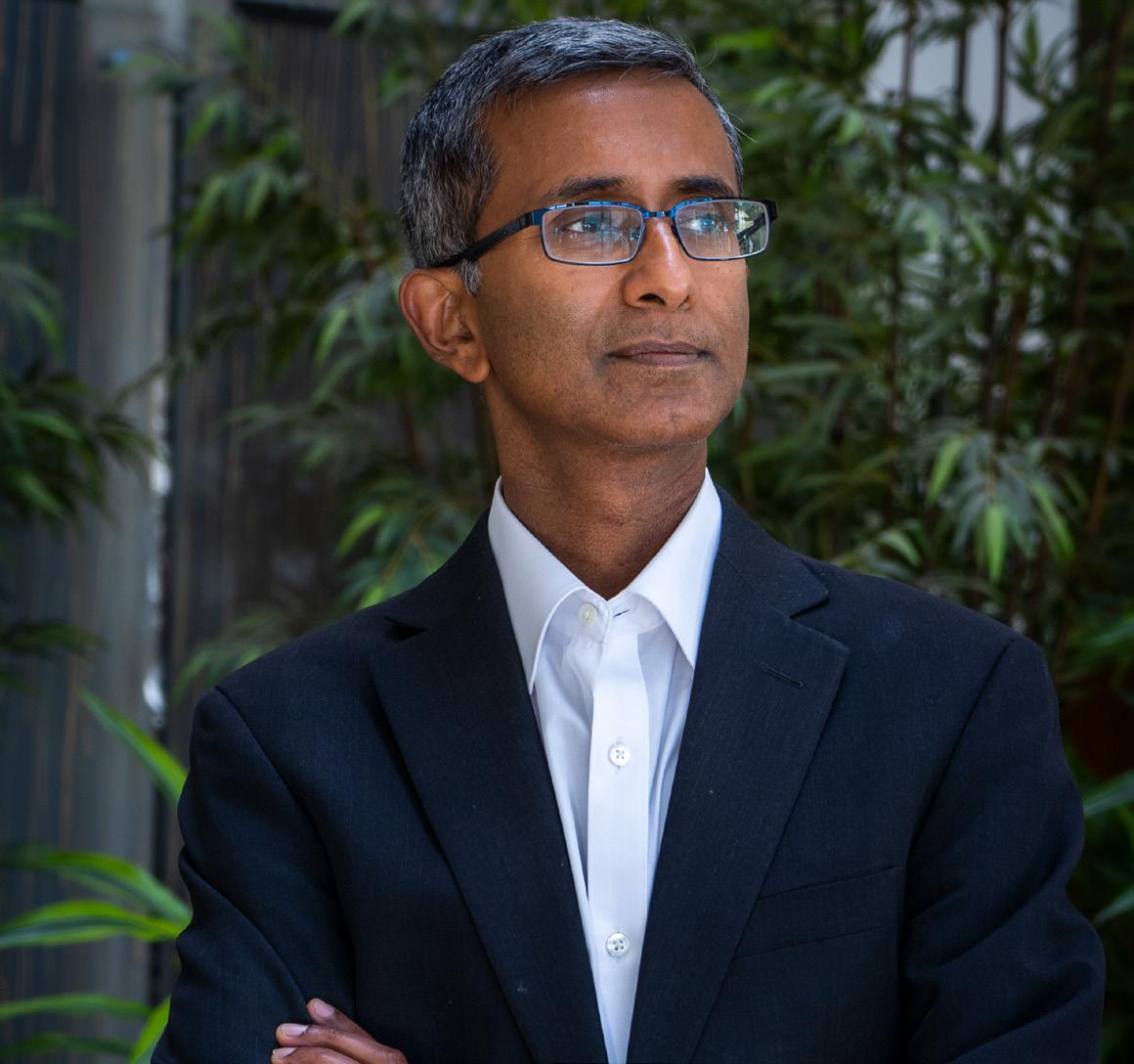



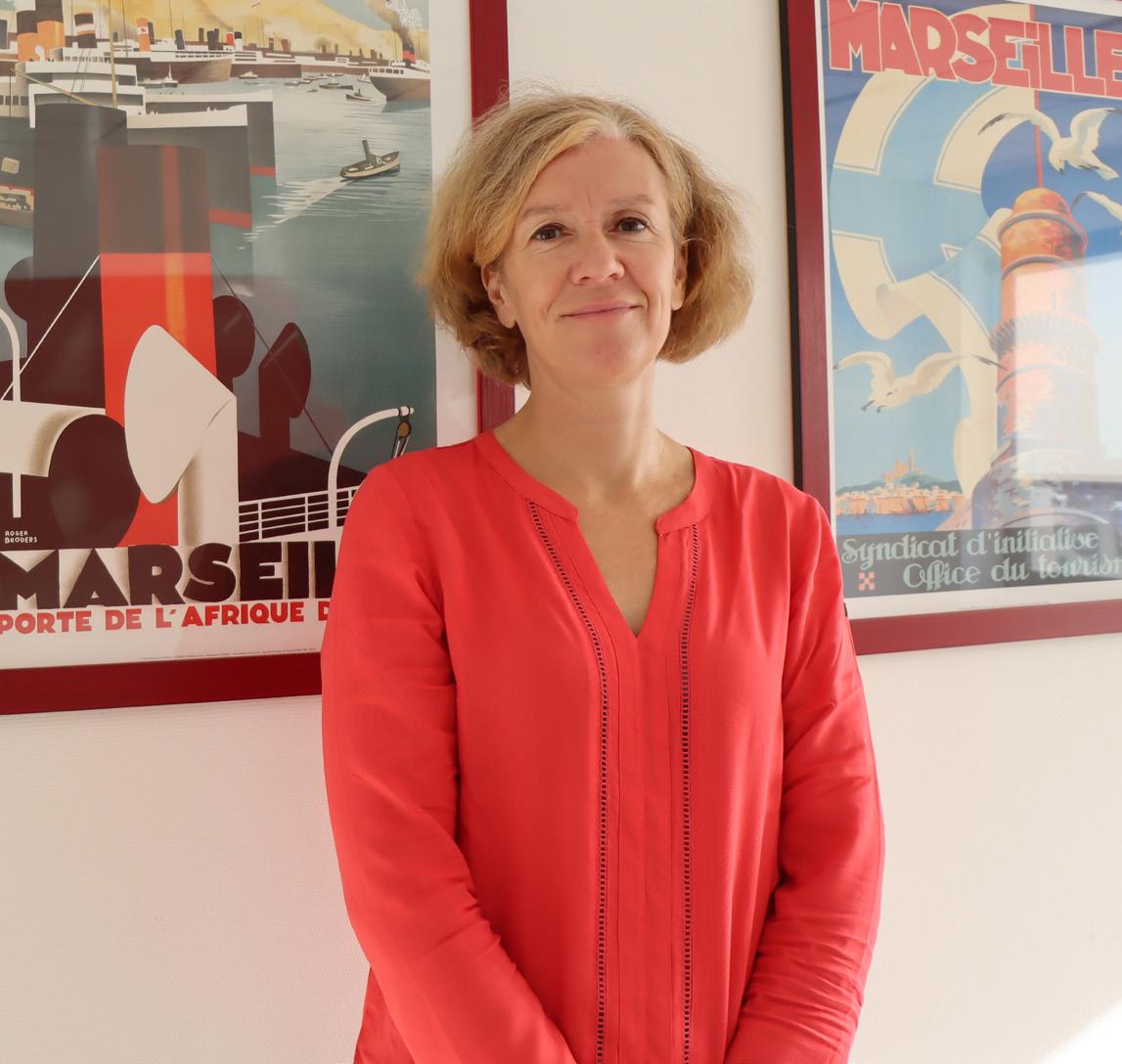



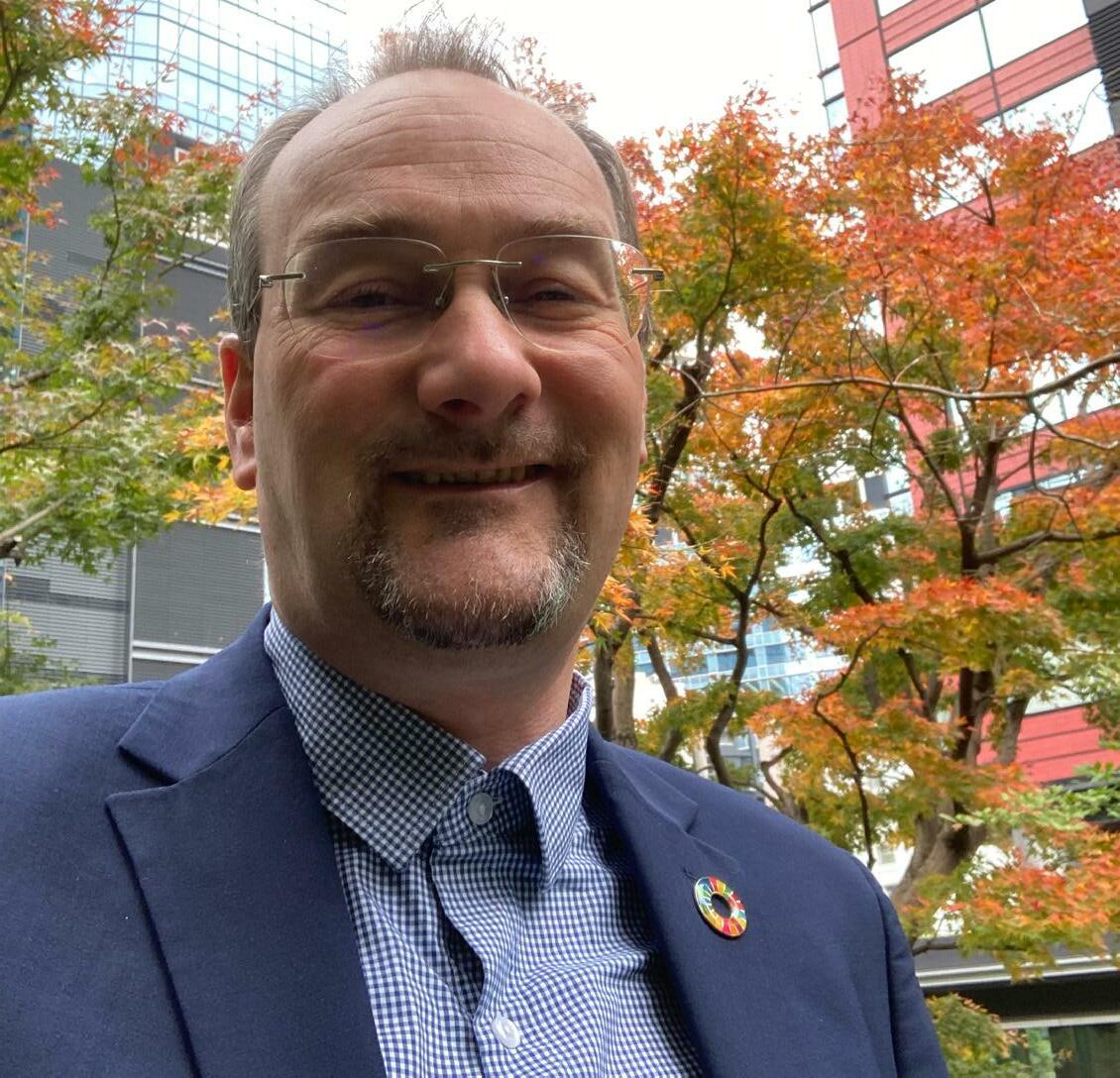

It’s no coincidence that the orange is a Christmas stocking staple: around this time, oranges – as well as tangerines, mandarins, and satsumas – are bang in season. And January is the month that sees citrus fruits at their most sweet and succulent.
In terms of growing, China (it always seems to be China) is the world’s top citrus fruit producer, growing 44.6 million tonnes in 2020, which was roughly 28% of the world's total. Guangdong Province is the country’s top producing region. The next top producers are Brazil, India, Mexico, and the US, who together account for 59.15% of the total.

Heathrow Airport
By 2050, clean hydrogen could help save seven gigatonnes (GT) of CO2 emissions annually, which is about 20% of current global emissions. Below are the areas that will offer the greatest C02 savings, in descending order of importance
Source: McKinsey
“What drives the overall culture at Rivian is a multigenerational purpose that goes beyond any one of us”
Brad Hood Director of Indirect Purchasing Rivian
“In the Middle East & Africa we have the sun to thank for the region’s access to renewable energy”
Ako Djaf VP Contract Logistics ME&A DB Schenker
“An airport is a city of services and the diversity of what we do is on a huge scale”
Amazon's plans to lay off around 10,000 corporate and technology jobs – 3% of its workforce – has sparked concerns it is set to begin axing roles in logistics.
The cuts include Amazon’s retail division, which is responsible for online shopping, physical retail and a chunk of the firm’s logistics operations.
Amazon has scaled back its logistics operations in recent months. The company has delayed, or is closing, 60 warehouses, as well as scrapping services like free Whole Foods delivery, and its Scout home delivery robot as it contends with slowing e-commerce growth.
Like many businesses, Amazon is struggling in the face of soaring inflation and rising interest rates.
There is concern in the wider logistics sector that Amazon’s shrinking retail operation might have a knock-on effect on Amazon Freight, a third-party logistics operation that in the UK and Europe alone, runs a network of 6,500 trailers and 13,000 carrier partners.
Ports worldwide are clogged with empty shipping containers as the readjusts to economic slowdown and a post-pandemic change in customer behaviours, says a company whose digital platform helps match container supply with demand.
The first rail bridge connecting Russia and China is finally up and running, having been first mooted in 2008. The Nizhneleninskoye-Tongjiang Bridge means the route to reach northern Chinese provinces from Russia will be cut by 700km.
DHL’s latest Airfreight State of the Industry report suggests soaring inflation is likely to see reduced purchasing power and demand for air freight going into 2023. It shows lower sales and high inventory are common across most sectors, with retail and manufacturing most affected.
Most organisations are failing to measure the environmental impact of their supply chains, a new report by CIPS and Deloitte has found. Just 26% of public and private sector organisations are monitoring greenhouse gas emissions in their supply chain.
The chip shortage is an ongoing global crisis that has seen integrated circuit demand massively outstip supply - a problem that continues to affect 169 industries
The COVID-19 pandemic caused massive disruptions in supply chains and logistics. This was coupled with a 13% increase in global demand for PCs as people worked from home. Chips were suddenly unavailable for the manufacture of a broad range of products, including vehicles.
As part of the economic conflict between China and the United States, the US Department of Commerce imposed restrictions on China's largest chip manufacturer, Semiconductor Manufacturing International Corporation (SMIC), which made it harder for them to sell to companies with American ties
Severe weather in Taiwan
Taiwan is the leading producer of chips, and severe droughts in the summer of 2021 affected output. The droughts affected production due to the lack of available ultrapure water that is needed to clean the silicon wafers used in microprocessors.
The increased use of cryptocurrencies requires a huge amount of data mining, all done with specialised computers. The high demand for cryptocurrency mining machines reduced the availability of chips for other uses.
Russia invades Ukraine
Neon is critical for the lasers used to make chips, and Ukraine's two leading suppliers of neon produce about half the world's supply . Both halted operations when Russia invaded, causing further disruptions to supplies of chips
Robert Martichenko is a supply chain business leader who has turned his attention to improving the very nature of work
Robert Martichenko is a business leader, author, speaker, educator, and strategic advisor who was founder of the LeanCor Supply Chain Group, spending 15 years as its CEO.
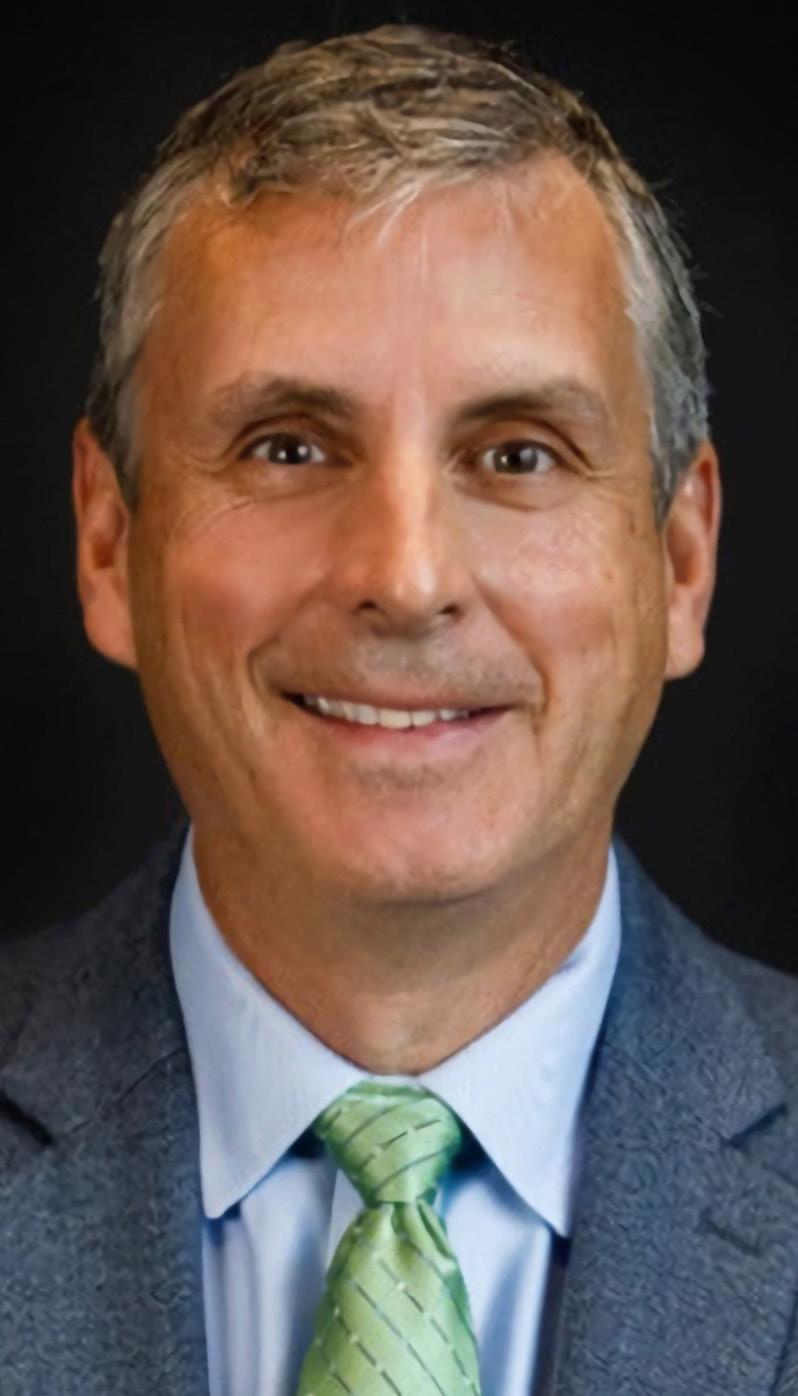
Martichenko has spent 25 years learning and implementing lean operational excellence, with a focus on end-to-end supply chain management across a wide array of industries.
LeanCor was acquired by Uber Freight in 2020, triggering Martichenko to transition to advisory work early in 2022.
These days, his mission is to embrace the role of the “Human CEO”.
He defines this as being someone “who believes that respect, empathy, relationships, education, courage, and critical thinking matter to remain both relevant and competitive”.
To this end, he created TrailPaths, an online venture to promote workforce development and “promote advances in workplace dynamics”.
Martichenko says of TrailPaths: “Technology, the pandemic and disruptive business models are fundamentally changing the nature of work as well as the relationships between people and the work we perform.”
North America, he says, “is struggling with workforce issues relative to workforce engagement at many levels”. He adds that the key issues “are with all the people that actually get stuff done – the people that add true value and are a critical part of the team”.
“Yet, do organisations even see these people as an important part of the team? Blue Collar workers? Front line workers? Now, the tables have turned and such people have decided to take things into their own hands – and we’ve learned that this isn’t simply an issue of compensation. This is about people not being part of a meaningful work environment.”
Martichenko says people “need to see meaning in what they do and who they do it for”, and that this goes to the heart of what TrailPaths is about. “It’s a community that
wants to help develop these meaningful environments,” he explains.
In this way, Martichenko’s thought leadership has seen his influence spread beyond the sphere of supply chain.
As a professional speaker, he addresses topics as diverse as: building cultures of continuous improvement; the power of narrative leadership; discovering hidden profit; and making work meaningful.
Martichenko also volunteers on multiple advisory boards and educational institutions, including the American Logistics Aid Network and the Association for Manufacturing Excellence.
He has also received many prominent industry awards, most notably the Distinguished Service Award by the Council of Supply Chain Management Professionals – the highest recognition available for supply chain professionals.
Writing is another of Martichenko’s accomplishments. He is the author of several business books, most recently of Discovering Hidden Profit, which he says is for CEOs and executives “who are dealing with continuous industry disruption and increased complexity”.
He adds: “It offers an actionable methodology to extract hidden profit by removing organisational masks while connecting people and business processes in order to maximise customer value at the lowest possible total cost”.
His other books include Everything I Know About Lean I Learned in First Grade, written to educate the entire organisation on the fundamentals of lean thinking, and in which he shows how to identify and eliminate waste.
» 1NCE is an IoT company – the only one to offer IoT connectivity and software service at a lifetime flat-rate across the globe. I’ve worked in IoT and the mobile industry for 20 years. Previously, I was SVP at T-Mobile and CEO of IoT at Vodafone. I suppose you could say I’ve been in IoT since its infancy. In my current role, I lead the company operationally and oversee its expansion into the Americas and Asia.

» An IoT telecoms network handles the communication and management of a device with its software environment in the cloud. There are sensors on one side that want to communicate with software on the other side, providing intelligence that helps companies decide how to adjust resources and optimise their supply chain, smart city utilities or any one of a million uses the IoT can offer.
The sensors collect data via integrated sensors on things like temperature and position, and the software then processes it.
In between them is 1NCE: we connect the sensor with the local telecom network via cellular technologies and forward the data to the cloud. We also handle security and authentication processes, protocol conversion, device management and much more.
The plumbing of the IoT has nothing directly to do with what a supply chain manager is using IoT for, yet 75% of IoT projects fail largely due to these complex requirements.
» Supply is dependent on synchronisation across borders, currencies, measurement systems and time zones. Billions of IoT devices keep it all together, which is why 80% of IoT projects are international in nature. But there aren’t global mobile operators that can bring IoT together.
For supply chain managers, it’s a pain – to put it very lightly – to deal with devices that use different operators in every country.
We have strategic relationships across the globe to provide seamless, easy connectivity everywhere.
.
» 1NCE is very fortunate to have some large investors like Deutsche Telekom, with whom we have a unique partnership to deliver connectivity to every type of IoT network. Deutsche Telekom's global networks are designed for the requirements of global communication between humans and devices – driving the evolution of IoT in Europe and the USA with state-of-the-art networks.
The Internet of Things (IoT) underpins much supply chain connectivity, but holding IoT together is an unseen telecoms network managed by 1NCE
1NCE helps Deutsche Telekom and others like it meet the full spectrum of IoT network needs.

» There’s limitless potential for 1NCE to be that behind-the-scenes company you’ve never heard of – the backbone that keeps every part of the supply chain’s IoT network running smoothly.
We are already building the network of the future. It will have lifetime connectivity for low-data sensors and unlimited data for highbandwidth sensors.
Simply put, we’ll make connectivity electricity-ready for consumption, so you can focus on what you want sensors to capture.
» If you want you to scale, be conscious of your limitations and hire the best possible team, and then give them the freedom to act with confidence. Confidence can only have two sources: expertise and experience. Every other form of confidence is just cockiness.

» The person I admire I will not name, for the very good reason that his philosophy is that business is not about yourself.
This person was once the CEO of an airline that, for several years in a row, was recognised as the most customer friendly. When asked why customers rated his company so highly, his answer was brilliant: “Because we realise that people don’t want to fly.”
This is deeply insightful. He realised that it was not about the flight, the plane or even the journey, but about making people forget they were travelling and making them enjoy the moment with whatever they were doing.
“IF
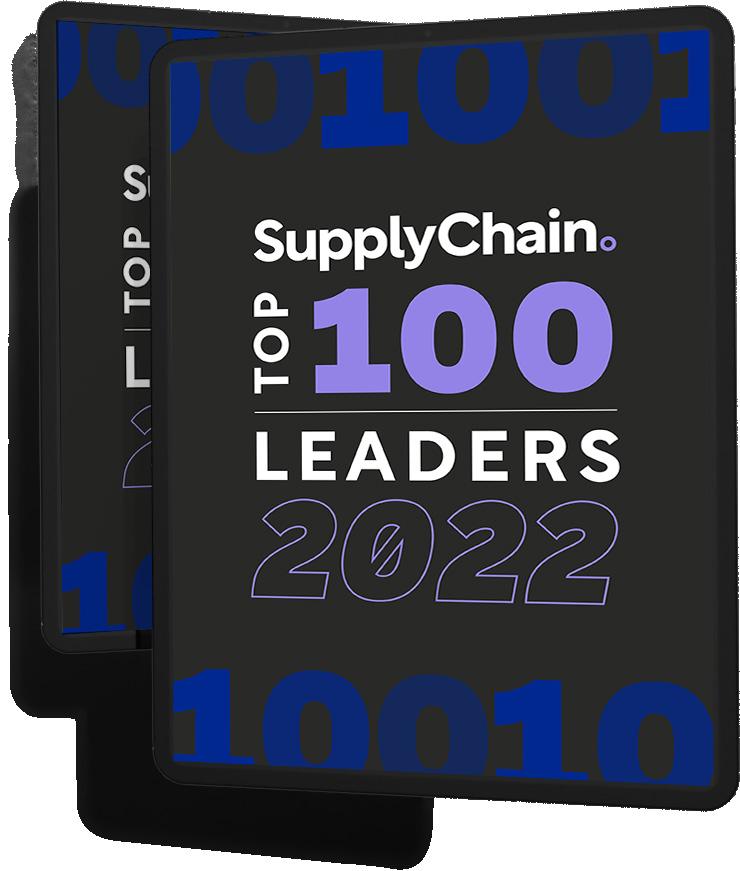



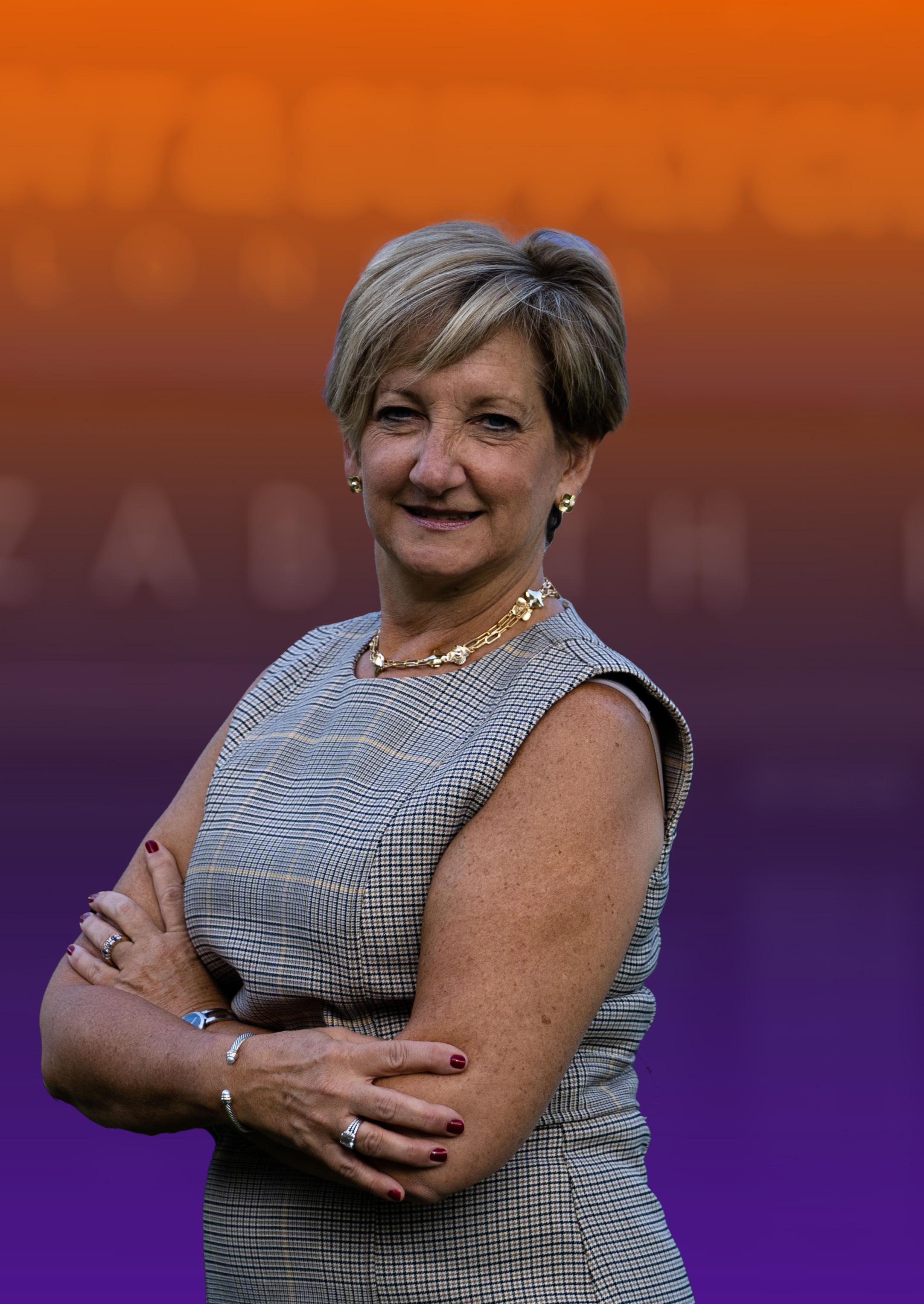

Brutally honest. That’s a phrase that springs to mind when talking procurement transformation with Sue Spence – Vice President, Global Sourcing & Procurementat FedEx Corporation.

Drafted in by the shipping and transportation giant a little over nine years ago to build a centralised sourcing and procurement operation from scratch, straight-talking Spence wasted little time in making a big impression.
“One of my favourite phrases is ‘begin with the end in mind’,” she says. “My approach to designing the future state of sourcing and procurement at FedEx was to first define what world-class looked like for our function. We came up with seven characteristics of a bestin-class organisation and then gave ourselves a brutally honest assessment (red, yellow, green) on how close or far apart we were from those characteristics. There was a whole lot of red back in 2013, but by 2018, it was a whole lot of green.”
Let’s just put the scale of the task Spence faced into perspective. In fiscal year 2022, FedEx delivered 3.1 billion packages. That is almost 8.5 million packages per day, delivered globally, by plane, train and truck. Over 550,000 people work for FedEx, literally juggling billions of moving parts, schedules and itineraries.
FedEx Corporation, on driving the organisation’s procurement
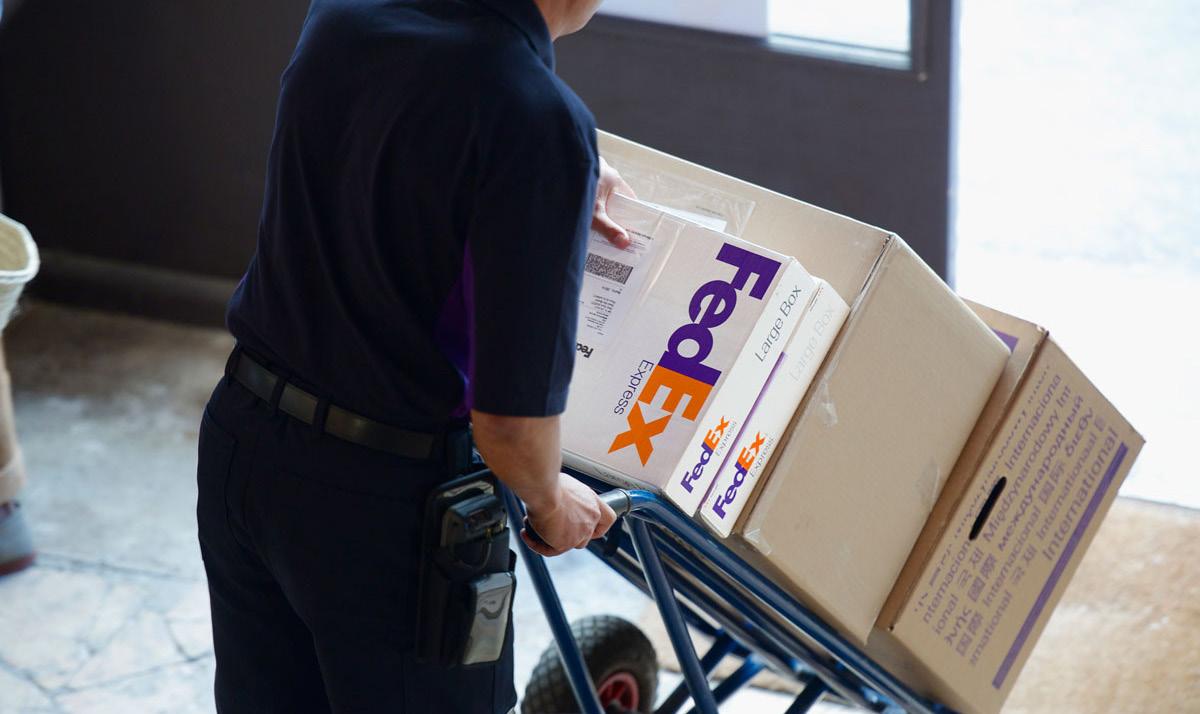 SUE SPENCE VICE PRESIDENT, GLOBAL
SUE SPENCE VICE PRESIDENT, GLOBAL
A great deal of that US$17bn annual Spence spend goes on fuel, and when there is disruption in the supply chain, like during the Colonial Pipeline cyber attack, it would be easy for FedEx operations to slowly run out of gas – were it not for robust risk assessment in the organisation’s supply chain. This is where Spence – and the sourcing and procurement team she has shaped – really shows her value.
Prior to joining FedEx, Spence had a 28-year career with United Technologies Corporation, in positions of increasing responsibility at the aerospace divisions of Pratt & Whitney, Hamilton Sundstrand and Sikorsky Aircraft as well as a key leadership role in Sourcing at the UTC Corporate office. She had multiple roles of traditional procurement, strategic sourcing as well as managing continuous improvement for both the assembly and maintenance and repair operations at Pratt & Whitney – experience that has proved invaluable in her FedEx role.
“Take a leap of faith and be more confident in your abilities. There is never a perfect time to go for the big job or challenge”
SOURCING & PROCUREMENT, FEDEX CORPORATION
“My time managing continuous improvement taught me the criticality of the measurement system as well as ‘learning to see’ through process mapping, root cause and corrective action, and especially in business processes where there is so much opportunity to streamline,” she says. Spence brought that methodology to FedEx, which proved an extra challenge as she was an ’outsider’, but also gave her the distance from the company to see a clearer route forward. But when you are tasked with building a world-class procurement team, what are you looking for? Spence is quick to list: demonstrating category expertise; managing effective stakeholder relationships; making decisions based on data, not emotion, and monitored by a robust measurement system; focusing on process improvement to increase productivity; raising the bar on performance for both suppliers and employees; and leveraging spend across the entire book of business you have with your suppliers. Recognising that this is a Herculean task for an organisation as complex and vast as FedEx, it’s also essential to proactively develop and manage the existing talent on your team. And that’s just for starters.

TITLE: VICE PRESIDENT, GLOBAL SOURCING & PROCUREMENT AT FEDEX CORPORATION
INDUSTRY: FINANCIAL PACKAGE FREIGHT DELIVERY
LOCATION: UNITED STATES US$17bn
Joining FedEx in October 2013, Sue leads a team managing US$17bn of spend, systems and policies governing the global sourcing and procurement process. Sue serves as a member of several Supply Chain Industry and University councils and advisory boards, and in 2020 was honored with the Institute of Supply Management’s J. Shipman Gold Medal Award, a recognition of individuals whose career accomplishments have advanced the supply chain management profession. Prior to FedEx, Sue spent 28 years at UTC in positions of increasing responsibility in Supply Management and Operations Transformation at Pratt & Whitney, UTC Headquarters, Hamilton Sundstrand and Sikorsky Aircraft.
Company
“In order to drive such a large transformation, you need to understand what you are getting into and do not underestimate the level of energy it will take,” says Spence. “This isn’t just referring to hours in the day, but mental energy to drive toward something new, especially in an organisation where outside executives are unusual.
“Be an evangelist about the mission and transparent with your team as much as possible; give frequent feedback and always explain what the accomplishment of the team’s goals can mean to their career. Be decisive, once you have allowed for multiple points of view to be heard. Don’t be afraid of the stretch goal and ensure when you ask for resources (both people and budget) you have a solid business case for your request.”
So just how did Spence achieve the sourcing and procurement transformation FedEx was hoping for? She says it was down to a number of what she calls guiding principles – five pillars that delivered the desired results. Lucky for us, she is happy to share:
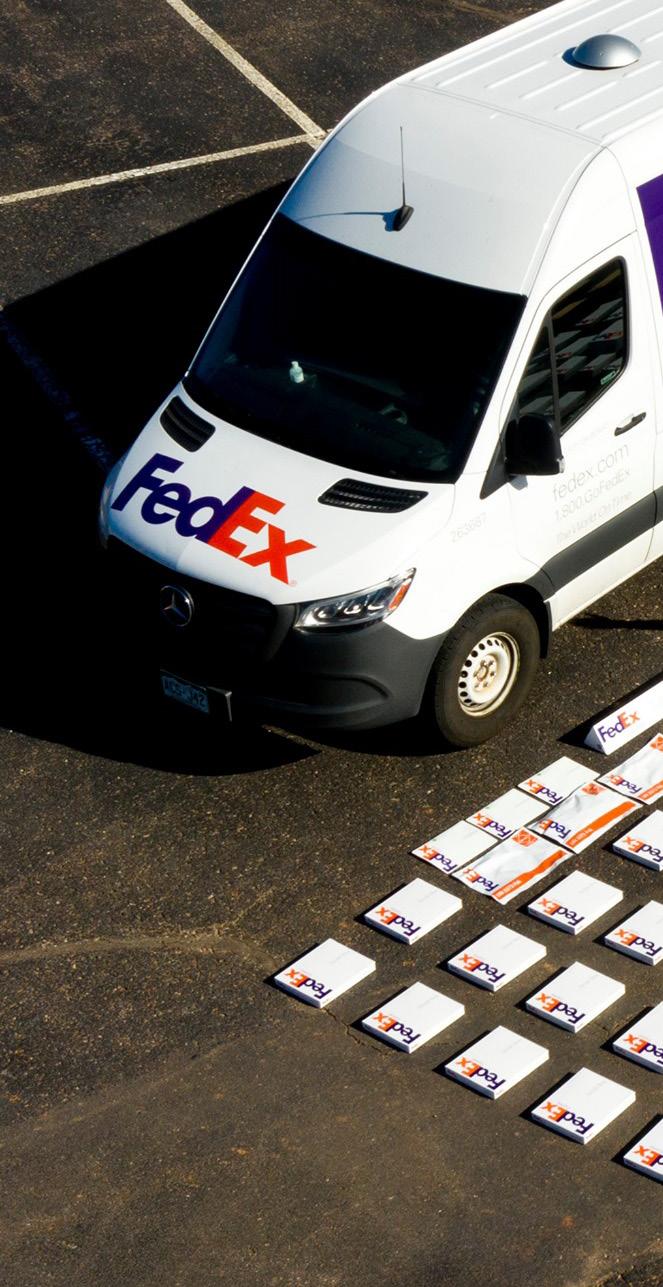
• INCLUSION – include every one of our managers and their teams in creating the enabling initiatives that would help us accomplish the best-in-class characteristics, and allow those ‘future state teams’ to lead the execution of these projects.
• ALIGNMENT – socialise and gain alignment with our key stakeholders inside the company so they understand WHY we were undertaking the journey, HOW we would measure success, and WHAT service levels they could expect from us. In the first six months I was there, I met with 100 of the top
SUE SPENCE VICE PRESIDENT, GLOBAL SOURCING & PROCUREMENT, FEDEX CORPORATION“Don’t be afraid of the stretch goal and ensure when you ask for resources (both people and budget) you have a solid business case for your request”
executives of the company personally to explain the mission and gain their support for it.
• COMMUNICATION – frequent updates to my entire team about the progress of each of the initiatives and over communicate why they were important, how they contributed to the mission and how our value would connect and contribute to FedEx’s overall value for our stakeholders (employees, customers, and shareholders).

• ACCOUNTABILITY – commit to the team to train and coach them as much as possible so they could become worldclass sourcing and procurement members but hold them to a very high level of accountability.
• TRANSPARENCY – create measurement systems for our team, both qualitative and quantitative; act with data and drive relentlessly to root cause and corrective actions for issues we uncover as we perform our work and deliver our value.
“Take a leap of faith and be more confident in your abilities. There is never a perfect time to go for the big job or challenge. Read all the time, research anything that seems interesting whether it is business related or not (satisfy the curious mind). Never, ever think you have to choose between your family and your job.
“Family/kids, if you are lucky enough to have them, always come first. Providing for them by working hard and accelerating your career is not choosing the job first. You are providing a role model for them and having your own professional satisfaction, wherever you are in your career, is important to them because you will be happier.”
In 2020, Spence won the coveted Institute of Supply Management’s J. Shipman Gold Medal – recognition of her advancement of the procurement and supply chain management profession. She is suitably modest about her achievement, saying her grown daughters now believe “mom may have a good idea or two every now and again” while also saying it has helped boost her LinkedIn connections. But don’t be fooled for a second – Spence appreciates the gravitas of the award, and her position as a role model both within procurement and in general.
“I attribute that to a diversity of experience within procurement – from the beginner level all the way up to the Chief Procurement Officer role, both on the direct as well as indirect side in very different industries,” she says.
“In business generally, I attribute that to working for my first 29 years in a very male-oriented environment that was also engineering focused. I am an economics and political science major with an MBA, and learning the technical side of the business presented quite the challenge.
As you can probably tell by now, as you would within five minutes of sitting face to face with Spence, her leadership style is inclusive, transparent, decisive and what she calls “biased for action”.
“My team will tell you I push like hell and am always digging for more info, more achievement, what’s next,” she says. “I love the debate and will switch sides of the debate to hear how they will defend their positions; I want them to be confident and anticipate as many questions as possible. I’ve often said if you can get by me, you are ready for anyone!”
“A non-technical female in a maleoriented engineering-focused industry…. success took grit, resilience and asking a whole lot of questions. Being curious was/ is a critical skill that has helped propel my career.”
Speaking at Procurement & Supply Chain LIVE London in October, Spence had the audience riveted both in her keynote session and the closing panel discussion. Respected and revered by her peers and the next generation of procurement professionals alike, she is a warm, honest, and supremely talented leader that other leaders can learn from. Which is just one reason why we expect Spence to continue

“My team will tell you I push like hell and am always digging for more info, more achievement, what’s next”
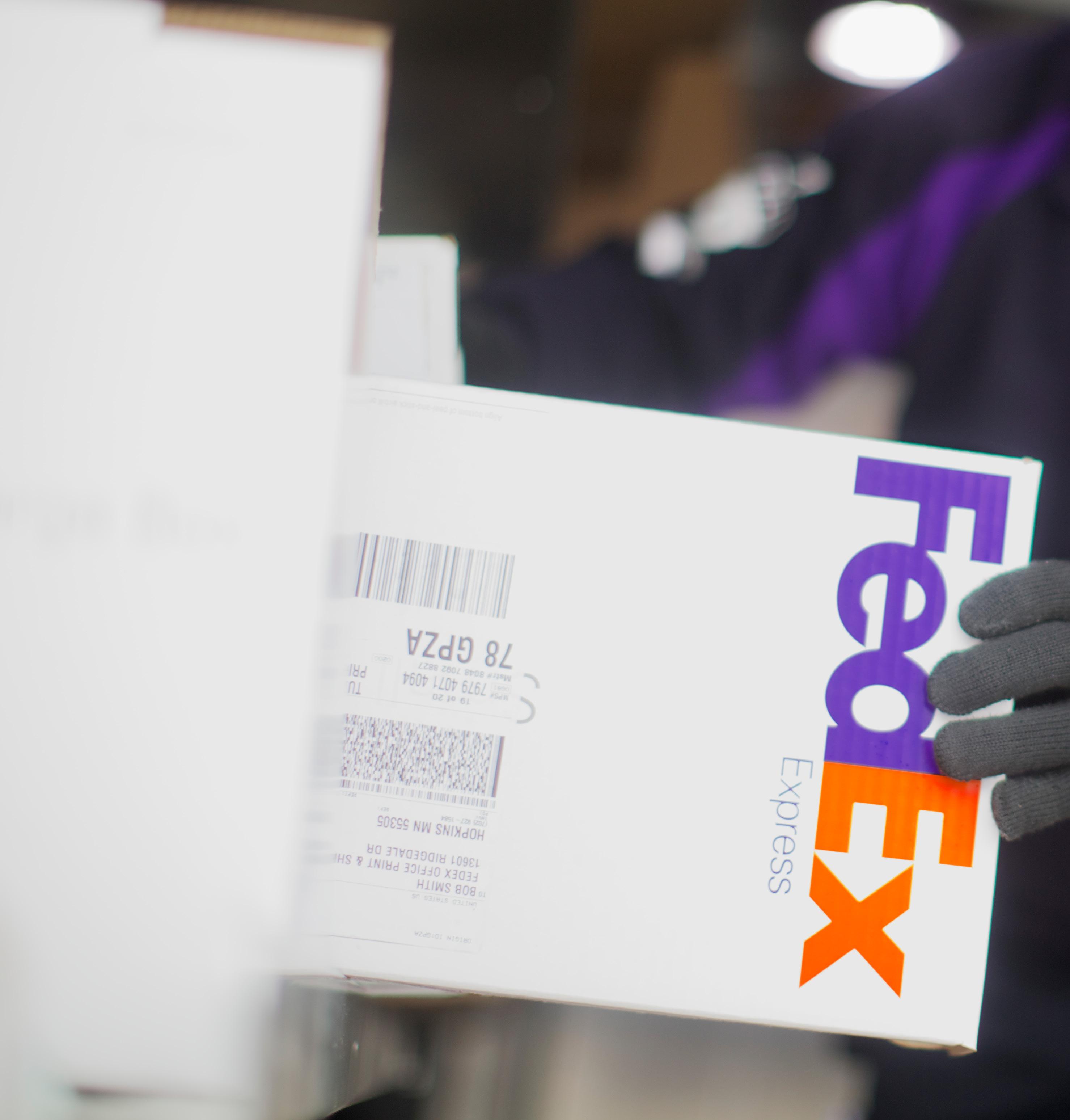
“A non-technical female in a male-oriented engineering-focused industry….success took grit, resilience and asking a whole lot of questions”
to drive the shape of procurement in the foreseeable future. So what does she think that looks like?
“The transactional, repeatable work that we did 30 years ago will and should be automated and as touchless as possible,” she says. “The focus of our talented teams has to be strategic, market-savvy, innovative, and value-driven so that we are

seen less as the back-office support group and more as the partners for the business.”
You can imagine procurement professionals around the world nodding in agreement with that.
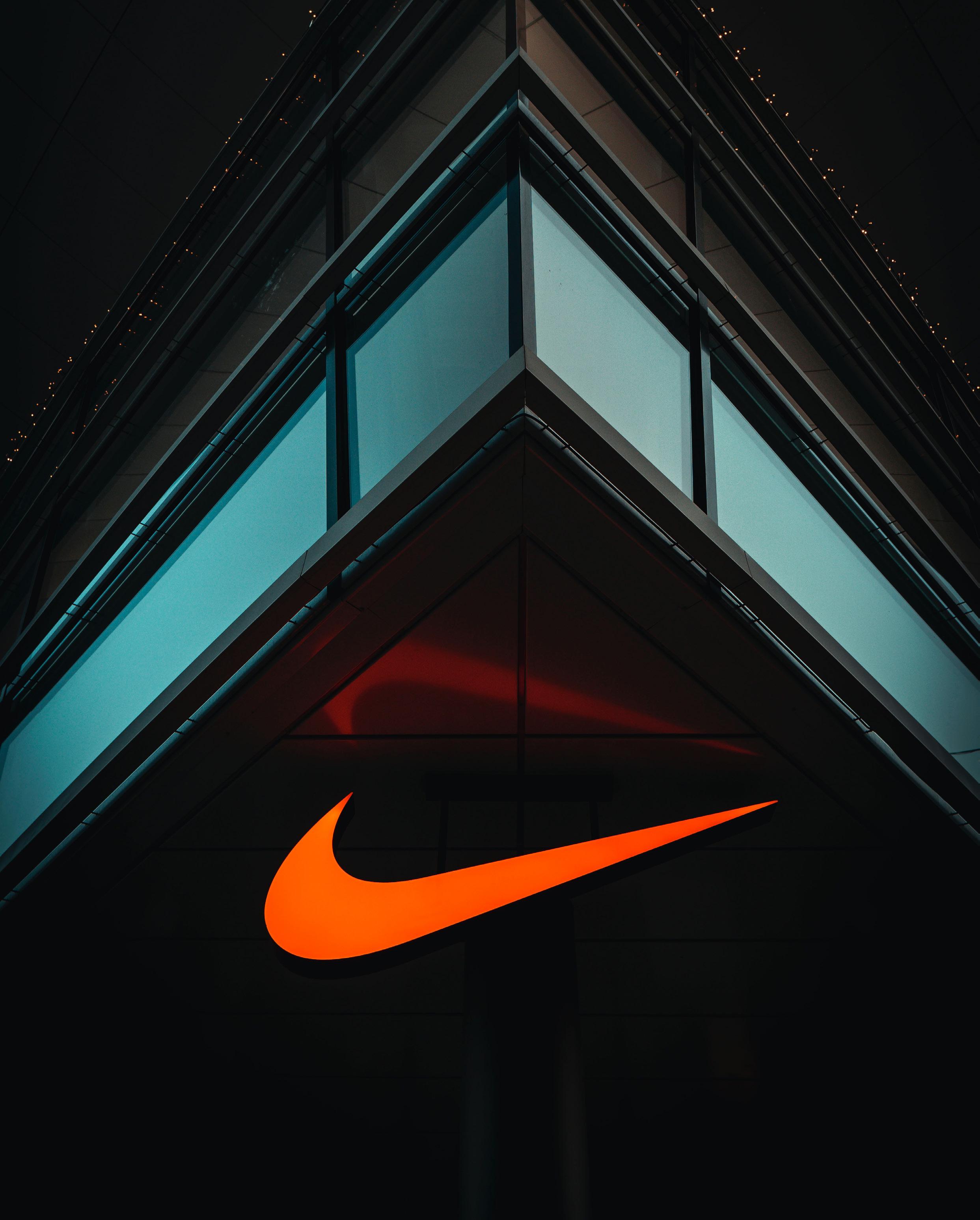
In the early stages of the pandemic, sportswear manufacturer and retailer Nike deployed radio frequency identification (RFID) technology to track products flowing through outsourced manufacturing operations. It also used predictive-demand analytics to minimise the impact of store closures across China. By rerouting inventory from in-store to digital-sales channels – and acting
early to minimise excess inventory buildup across its network – the company was able to limit sales decline in the region to just 5%.
But fast-forward two years, and Nike is in the midst of a global fire sale as it bids to clear an epic inventory glut that the company blames on late deliveries over the past two seasons, compounded by earlier ordering by retailers and faster-than-usual deliveries.










The company has admitted that, despite strong demand, it will follow a policy of “aggressive markdowns” to clear inventories, though this will likely impact margins this fiscal year.
Nike CFO Matt Friend said on the company’s quarterly call that inventory was
up 44% company-wide, driven largely by a 65% hike in North America, its largest market. Friend said Nike plans to “tighten buys in the second half of the financial year and liquidate excess inventory more aggressively beginning in the current quarter”, in the hope it better balances inventory in 2023.

Many clothes retailers are experiencing something similar, watching inventory pile up as inflation-hit consumers rein-in their spending.
“I hesitate to call it a bloodbath, but it’s going to be ugly in terms of the amount of discounting and markdowns,” Urban Outfitters CEO Richard Hayne said during a Q3 earnings.
In a post on LinkedIn, Brandon Rael – Business Transformation Leader with Capgemini Invent – said of the Nike situation: “It’s continuing its aggressive push with its direct-to-consumer (DTC) strategies, and, at the same time, is in an overinventoried situation where it has to review its wholesale partnership model.
“Nike is re-evaluating its wholesale partnership model while growing its DTC retail space. Its partnerships with Foot Locker, JD Sports, and others offer Nike an opportunity to manage its inventory challenges while extending its reach to customers, via well-established retail and wholesale models.
“Foot Locker and others have done an outstanding job of adding value to the Nike brand by providing a shop-within-a-shop customer experience.”
This ‘tale of two Nikes’ shows just how perilously difficult it is for businesses to manage inventory in a world in which market chaos is … groan … the ‘new normal’.
While the digitalisation of inventory management can be seen as a salve to such problems, it is no panacea. Here, Supply
Chain Digital speaks to Will Lovatt, General Manager and Vice President Europe with Deposco, an inventory visibility platform whose customer profiles range from rapidly growing small ecommerce operators through to global consumer packaged goods brands and leading-edge 3PL fulfilment operators.
Lovatt shares insights into the inventory management challenges facing today’s businesses and how some of these challenges can be met.
Nike is drowning in inventory. How can digitalisation help? Our proposition enables organisations to use inventory to satisfy customer demand, no matter where that inventory is located. The net effect is that, for the same inventory

“ WITH OMNICHANNEL, BRANDS ARE HELPLESS WITHOUT A WAY TO RECEIVE ORDERS AND PROACTIVELY IDENTIFY THE BEST INVENTORY TO SATISFY THAT DEMAND”
WILL LOVATT VP & GENERAL MANAGER, DEPOSCO EUROPE
investment, we are able to extend the reach and responsiveness of the network.
Nike’s consumer-facing ecommerce operations send stock via retail partners to satisfy its end customers. Digital solutions such as ours help organisations match customer demand to available inventory across the business, minimising overstocking.
How has inventory management changed since COVID-19?
When the bricks-and-mortar retail world initially closed for Covid, online sales grew explosively, so having an omnichannel fulfilment capability became a necessity for every retailer, consumer brand, or marketplace operation.

IBM’s 2022 Chief Supply Chain Officer study shows that CSCOs are embracing AI and automation technologies “to provide ecosystem interconnectivity, sustainable operations and operational predictability”. Almost half (47%) of surveyed CSCOs said they have introduced new automation technologies in the past two years to add predictability, flexibility and intelligence to their operations.
IBM found that innovating businesses are outperforming their peers on KPIs, enjoying 11% more revenue growth on average.
Sustainability has become a higher priority: The study focuses on how CSCOs are navigating significant supply chain disruption brought about by inflation, instability in the financial markets, recent geopolitical events, a global pandemic, climate change and more – and how they plan to future-proof their supply chains.
It is based on interviews with 1,500 CSCOs and COOs in 35 countries and across 25 industries.

With omnichannel, brands are largely helpless. They lack a way to receive orders from whichever channels and locations orders are placed and then proactively identify the best inventory across the network to satisfy that demand, As the pandemic grew, many businesses were left with excess pockets of inventory originally intended to serve now-closed retail operations, as well as customer orders left unsatisfied in channels where no inventory was available.
How do you make an omnichannel supply chain work well?
For an omnichannel supply network to operate effectively, it needs to fulfil three key requirements.
First, it must be sufficiently flexible to evolve as new channels open and sources dry up. Plus, new selling platforms – marketplaces and ecommerce frontends, for example – need to be integrated and served.
Second, it has to be connected in realtime to all viable sources of inventory – something that can only be achieved with the help of web-based IT services.
Finally, the company’s supply network must have deep knowledge of both the product and the sources of supply, so that the most suitable option is offered to customers based on location, timing, and local legislative requirements.
How can businesses best meet these challenges?
Primarily, organisations need to break away from the constraints of traditional retailserving supply chains to accommodate supply networks. They can do so through dynamic, customer-focused, demandsatisfaction solutions; these need to
WILL LOVATT VP & GENERAL MANAGER, DEPOSCO EUROPEdeliver a real-time interface that embraces every commerce touchpoint while also considering all inventory sources.
Is legacy software in omnichannel fulfilment a problem?
Yes, it’s a major issue. Batch updates and overnight refreshes between domains may have been adequate for a supply chain where customer interaction was limited to retail locations only. But the dynamic world of omnichannel fulfilment has to execute in sub-seconds across all customer-serving locations. Mismatches can lead either to heavy overstocking or the risk of double selling.
What role do strategies such as dark warehouses, micro-fulfilment and in-store inventory warehousing have to play?
Our solutions were born on the web and are architected to work in mixed omnichannel IT environments to serve our rapidly growing ecommerce direct-to-consumer customers.
We offer visibility across the inventory landscape, including traditional warehousing, retail stores, and various forms of fulfilment centres. Our customers also have the realtime ability to match source with demand.
It’s all about working at scale and complexity but delivering simplicity and rapid time-to-value

 PRODUCED BY: CRAIG KILLINGBACK
PRODUCED BY: CRAIG KILLINGBACK

From empty terminals in 2020, to serving over 50 million passengers in 2022, Heathrow Airport has weathered some mighty turbulence in recent years. Now the UK’s hub airport is building back, Heathrow’s procurement team stands ready to ensure the airport’s growth is efficient, responsible and meets the needs of every passenger
From the outside, running a procurement operation with the size and variety of London Heathrow airport is an incredibly complex challenge. For Paul Doherty – the Procurement Director at Heathrow Airport –and his team, their job becomes clearer when they focus on the most important person in the building.
“The passenger is central to everything we do, every decision that we make and every project that we launch. Every operational change or operating procedure that we do has the passenger at the centre of those decisions,” he says.
With passenger numbers steadily climbing back higher, a hundred thousand priorities are walking through the terminal doors every day, each of whom need to be given the best possible travelling experience.

‘It is really important to us that, from the moment the passenger enters the airport, their holiday starts. So we want them to be comfortable, we want them to be enjoying the experience that they have,” he says.
Paul speaks passionately about customer care, about how every member of staff at the airport should support a passenger if


they see them in any form of confusion or discomfort. That mantra permeates right from the very top of the executive team down to all of Heathrow’s colleagues - including the airport's operators via their service signatureswhich provide a framework for the passenger service proposition, to notice and care, share what they know and ensure the passenger’s problem is resolved before they leave.
This is just an example of the variety of tasks that present themselves daily in what Doherty describes as a ‘city of services’, which features an enormous range of diversity regarding what they have to deliver on a huge scale.
“I've just come off of a call talking to someone who is at the party conferences, understanding the political landscape. Later on, I'm going to go and talk about cleaning performance in one of our terminals. This afternoon I'm going to talk about algorithm development and security products.”
Because of the incredible breadth of the services he speaks about, becoming a “specialist at being a generalist” is a given –there are few jobs where you can start your day dealing with politics and end with cleaning regimes, successfully able to pivot between the two as well as engage with everything else within that. It also necessitates having experienced people in post who can cope with operating under the pressures of one of the busiest airports in the world.

PAUL DOHERTY PROCUREMENT DIRECTOR , HEATHROW
“ The passenger is central to everything we do, every decision that we make and every project that we launch”


A world class player in the mobility market, committed to empowering the freedom to move everyday thanks to safe, reliable, sustainable and innovative solutions that serve the common good.
Contact us
Rebecca Mupita, MD of Transdev Airport Services, says the future for the company will be green, and connected to local Heathrow communities

Rebecca Mupita is Managing Director of Transdev Airport Services and CCH Aviation Logistics, both of which are part of the Transdev Group, whose core function is delivering multimodal transportation services.
Mupita and her colleagues are based a stone’s throw away from Heathrow Airport, and provide innovative, sustainable passenger transport and fleet maintenance solutions for the aviation sector. “We deliver solutions that are aimed at providing clients and customers with complete transparency, so that they better understand their operational demands,” she explains. “With this insight, we can identify and tailor the right solutions to support.”
As well as managing and maintaining complex airport fleet and equipment, Mupita and her team provide scheduled and on-demand transportation services and manage airport bus and coach stations. Tailoring its services and solutions is just part of the company’s transformation journey,

as it continues its recovery from a brutally tough pandemic. “Covid hit Transdev very hard,” says Mupita. “It decimated the aviation industry.” In the post-pandemic era Transdev is not just rebuilding, but is “rebuilding green”, says Mupita.
“Reducing emissions is at the heart of our sustainability measures,” Mupita adds. “We are currently planning to deploy a new electric fleet at Heathrow Airport, and through our new technologies we are also designing passenger services that reduce unnecessary transfers, while enhancing the passenger experience.” And, she adds, the company will also continue to extend its outreach initiatives, working with local schools, colleges, and universities, looking to find the next generation of ‘journey makers’.
“We’re increasing our apprenticeship schemes to develop young talent,” says Mupita. “Typically, logistics isn’t a career young people think about going into. But we are looking to change that.”
Doherty speaks on the transformational challenges – caused in part by the pandemic – that Heathrow have undergone while continuously modernising and embracing new security technologies. “Our new security solution means you won't have to take your laptop out of your bag,” he says. “You can go through security and just put your bags through a scanner. It’s a much less intrusive journey.”
“We talk about a frictionless passenger journey, and it's just like a good doctor in the NHS: when you need us, we're there.”
Doherty’s route to being Director of Procurement started in a very different, but also incredibly demanding form of transport.
He worked in operations at the London Underground for seven years, but says he always found getting into the capital space appealing and, ultimately, took on a more junior role at Heathrow to expand his personal skill-set. From there, he progressed through different projects, including the airport's role in hosting London 2012 Olympics arrivals, baggage categories, heading up terminals and, when the pandemic arrived, closing down aspects of the capital portfolio before moving into the operational environment to focus on cost reductions and supplier management.
“We did that as caringly and as responsibly as we could with our capital supply chain partners, many of whom are still with us and working. Following that, I went over

Paul Doherty is the Procurement Director at Heathrow Airport, responsible for Operational, Infrastructure and Technology procurement.

Paul’s accountabilities centre around meeting the airport’s current and future business needs. His teams are focused on delivering value for money, data-driven insights and trusted advice to both internal and external stakeholders. Paul is passionate about empowering his teams to target continuous improvement and delivering results to advance the talent of the procurement team.
A constant focus for Paul is working with our supply chain partners and local community to ensure Heathrow’s strategic sustainability goals and targets are achieved to maintain the airport's licence to operate.

Where our data experts pinpoint where you can make the biggest carbon savings to accelerate your path to net zero.
This is the Science of Service
This is just the star t
mitie.com/scienceofservice

The exceptional, every day

Mitie prioritises decarbonisation and takes a flexible approach to sustainability through its Plan Zero, which supports its partner Heathrow Airport
As the UK’s leading facilities management and professional services company, Mitie is determinedly working on not only its own decarbonisation journey, but also supporting partners including Heathrow Airport. As Mike Sewell, Mitie’s Plan Zero Director, says, “if an organisation wants to drive real change in decarbonisation, it absolutely should be front and centre for their facilities management providers to be the party that’s helping them on that journey”. For partners like Heathrow Airport, Scope 3 includes their supply chain, which includes Mitie. Sewell’s approach to partner support is simple: “Just by operating better ourselves, we’re already helping reduce their Scope 3 emissions— and that applies to every single customer that we work with”.
Mitie has “committed to having net zero, from a Scope 1 and Scope 2 perspective, by 2025 and Scope 3 by 2035”. Mitie’s industry-leading Plan Zero initiative has three key focuses: eliminate carbon emissions from power and transport; eradicate non-sustainable waste; and enhance inefficient buildings.
For example, Sewell says that within Mitie’s operations the majority of emissions sits in our use of vehicles: “We’ve focused our efforts on decarbonisation of our fleet together with connected workplaces where we’re actually looking at better data connectivity, where we can actually monitor sites, understand sites and deal with things remotely.”
Mitie’s latest ESG report highlights its progress, centred around five pillars: Environment, People, Community, Responsible Supply Chain and Innovation. Among its sustainability successes Mitie reports a 33.4% reduction in emissions since the FY19/20 baseline year and how it has cut 11,445 tonnes of CO2 by investing in electric vehicles (EVs).



By prioritising its own decarbonisation journey, Mitie put itself in the best position to support partners and proactively work to reduce its impact.
As Sewell states: “Decarbonisation: it’s not a challenge for one organisation, one customer. It affects us all.”
1944 - Construction of London Airport's runways begins 1946 - London Airport Officially Opens
1955 - Her Majesty The Queen opens the Central Terminal Area and Control Tower 1966 - London Airport renamed ‘Heathrow’ 1969 - Terminal 1 opened 1976 - Concorde makes its first passenger flight 1986 - His Royal Highness Prince Charles and Princess Diana inaugurate Terminal 4 1987 - The British Airports Authority is privatised as BAA plc 2003 - Three Concordes make their final touchdown at Heathrow 2007 - A new air traffic control tower is operational – the tallest in the UK 2008 - Terminal 5 officially opened by Her Majesty The Queen 2009 - Major refurbishment of Terminal 4 2014 - New Terminal 2 re-opens 2015 - Terminal 1 closed 2016 - Heathrow celebrates 70th anniversary
to our operations teams to support them in removing the costs that we needed to be able to continue operating through the pandemic,” he says.
It resulted in him being offered the Director of Procurement in 2021, a role for which Doherty thinks the breadth of his experience across both the capital and operational sides of transportation has positioned him well, as having both pillars of experience gives a better, more holistic outlook on the role.
“I always knew the benefit of broadening my portfolio. I had relative success at quite a young age in the operational space and knew that to actually really understand the business, you need to understand both the capital and the operational side of the company,” he says.
The pandemic presented all sectors with genuinely unprecedented challenges, and Doherty believes that the legacy of that time is the biggest single challenge facing all airports: passenger numbers at Heathrow had consistently climbed in the decade leading up to the pandemic, before dropping to 22.1 million in 2020. This created a situation when scale had to be quickly changed to cope with a 73% decrease compared to 2019, while still keeping planes in the sky and passengers happy.
“Speaking as a Procurement Director, the pandemic is the primary challenge. Aviation took a substantive knock during the pandemic period that we have to take care of over the coming three to four years. It’s not just the debt in terms of commerce, it’s the debt in terms of having had to make difficult decisions around assets, services, our service proposition, our security proposition; having had to slow down pieces of work to make them affordable means that we now need to speed them up to make them deliver.”
“The playbook for the pandemic didn't exist. The thing that makes the UK proud







 PAUL DOHERTY PROCUREMENT DIRECTOR , HEATHROW
PAUL DOHERTY PROCUREMENT DIRECTOR , HEATHROW
about Heathrow as a piece of national infrastructure is that we run at a capacity that no other airport, globally, runs at. We run at 98% across our two runways, we have more air traffic movements during the day, we move and turn aircraft around quickly. We have operating procedures for if we have a busy day, we have an operating procedure for if something goes wrong during a day –we have an operating procedure for most things. Yet this isn't operating procedure, this is managing demand in a different way.”
Strategic partners and pillars to posts With demand fluctuating rapidly during the most acute months of the pandemic –followed by a gradual return to more familiar capacity levels – there has been pressure to scale engagement with suppliers and service providers around the Heathrow
“ We talk about a frictionless passenger journey, and it's just like a good doctor in the NHS: when you need us, we're there”
environment. This operates alongside a project called the Heathrow Partner Balanced Scorecard, which helps the procurement team choose the best strategic partners and convey the strategic aims of the business for prioritisation.
“It focuses on five main pillars: carbon reduction, social value inclusive of accessibility, inclusion and diversity, opportunities for local business, innovative solutions and behaviours. And that’s not just behaviours

“ The thing that makes the UK proud about Heathrow as a piece of national infrastructure is that we run at a capacity that no other airport, globally, runs at”
in terms of business-to-business behaviours, but also the behaviours between our supply chain and our passengers, should they encounter them, and also behaviours towards sustainability. So Heathrow’s role is incredibly influential and important in the supply chain, persuading them to contribute towards our aims.”

He describes the intention of creating a ripple effect with their partner organisations and the supply chains that support them, but making sure that that whole ecosystem is made up of organisations with sustainable practices built into their DNA as a service
provider, rather than simply raising their game to be part of the Heathrow environment.
“We are really keen that companies bring to bear, here at the airport, the best of what they're doing centrally. An account director reporting here at Heathrow, for example, will contribute towards their central numbers as a business.“
Doherty speaks about how the needle has moved rapidly on the subject of sustainability, due to matters such as the London living wage that are now built into contracts, yet wouldn’t even have been a discussion point a decade ago. He describes how sustainability is now a ‘licence to operate’ at an airport and how, if you do not have those strategies in place, it’s difficult to be part of the operation.
“It’s quite exciting how sustainability has kicked on and matured. It's absolutely the case that it is going to grow, not diminish. As an airport, we have to accept that we are historically polluters, so we have to take a responsible view of that. And we have an executive right now passionate about being responsible.”
These advancements in sustainability, and how it is inextricably linked to the supply
At Vanderlande, we’re committed to delivering sustainable solutions in every aspect of our operations. We do not want to do this alone, which is why we seek collaboration with our suppliers and customers like Heathrow Airport to maximise the impact of our efforts throughout the value chain.
When it comes to sustainability, there’s no doubt that close collaboration enriches discussions and allows all partners to learn from each other and align activities that support each other’s sustainability goals.
Want to know more? Read the blog about our partnership for sustainability with Heathrow Airport.

Learn more:

chain and procurement operation, play a pivotal role in Heathrow’s sustainability strategy. Heathrow 2.0 is their plan to connect ‘people and planet’ and to work to build a better, more sustainable airport. The broad strategy includes net-zero aviation, creating a great place to live and work, and having responsible business foundations. It’s a piece of work that shows how far the airport has come since they took the step to publish their first environmental policy back in 1992.
There is a raft of commitments from Heathrow to make them a better neighbour to both their locality and the wider environment. They are committed to cutting carbon in the air by 15% compared to 2019, their ground level emissions by an even more ambitious 45% and an air-side ultra-low emission zone by 2025 for all operational vehicles. The targets also include doing even more for the region in which they operate, providing 10,000 external jobs, apprenticeships and career opportunities for local people, as well as 15,000 workplace experiences.
This strategy also aims to have a positive impact throughout the sprawling sphere of influence the airport achieves via its strategic partners, being part of the London Living Wage Foundation and a good neighbour to other local businesses.
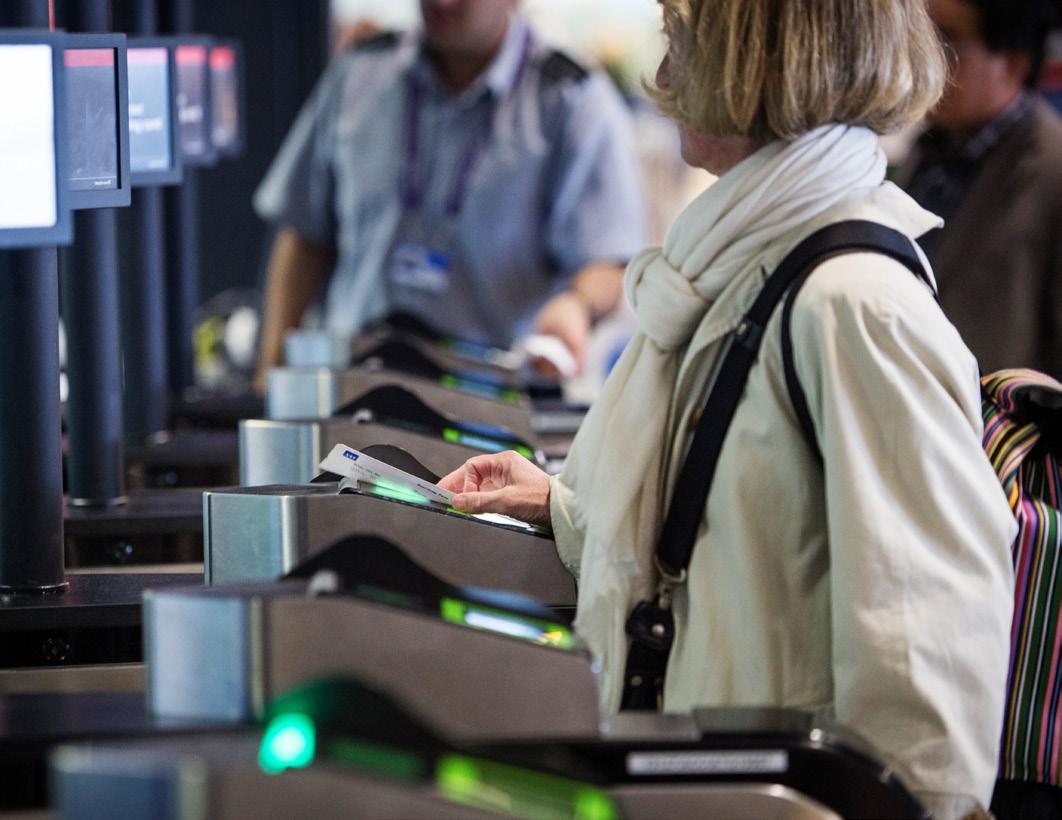
“I also personally have an objective to grow our small to medium-size enterprises from


2019 levels,” he says. “There are a number of initiatives and schemes we are doing both in the local chambers of commerce and through business summits to help us achieve those aims.” A statement that demonstrates Heathrow and its procurement team's passion passion to deliver on the commitments it has made.

Lessons to carry into the future and beyond It is this culture of collaboration that Doherty feels is the best route to building mutuallybeneficial relationships between Heathrow and their strategic partners. If they are working with other organisations who can innovate and deliver more than would normally be expected, they can produce better and wider outcomes than the ceiling setting a defined target could engender. He believes the biggest piece of learning for the whole management team was for them not to mandate but to collaborate, as they do not just want their partners to deliver up to a set limit, but instead to bring the best of what they can deliver to the airport, with a level of quality that is centrally ingrained within the business.
“We go back to the mantra: ‘if you can make it work at Heathrow, you can make it work anywhere’.”
Ultimately, Paul Doherty returns to the key purpose of every operational decision the airport makes, which is the experience of every person who walks through the terminal door with a suitcase in hand.
“The way in which we work with our supply chain is to always make sure that we are listening, collaborating and challenging ourselves to make sure that we don't miss the opportunity to get something even better for ourselves, for our passengers and for our airport community and stakeholders.”
The logistics industry has had to move quickly with the inexorable rise of omnichannel. So what have been the main challenges and how well are these being met?
WRITTEN BY: SEAN ASHCROFTThe supply chain landscape has changed more in the past three years than in the previous 30. Not only is digital transformation altering the fabric of supply but, thanks to the pandemic, omnichannel is now people’s preferred means of shopping.
In lockdown, consumers flooded online to find the goods they needed; online sales saw an estimated four years’ growth in just 12 months. This seismic shift in purchasing patterns has meant that the logistics industry has had to adapt quickly to help businesses meet the exacting last-mile demands of omnichannel delivery.
Here, we speak to two last-mile logistics experts for their take on how omnichannel has changed the logistics industry, and how well it
has done in meeting the unique challenges of our new-look world. Mahmoud Ghulman (MG) is Co-Founder and CEO of Nash, an online platform for businesses to manage, track, and integrate local, same-day deliveries into their operations. Rory O’Connor (RO) is CEO of delivery management platform provider, Scurri.
MG: Before Covid, running to the store to pick up what you needed was a daily task that we never really questioned. It was ingrained. But when the pandemic hit, that was no longer an option, and, suddenly, there was an acute need for omnichannel distribution – especially around last-mile.
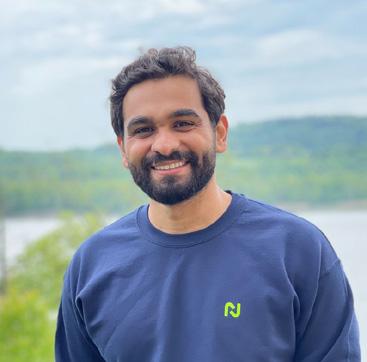
 Mahmoud Ghulman (MG) Co-Founder and CEO of Nash
Mahmoud Ghulman (MG) Co-Founder and CEO of Nash


The best logistics technologies will help any business take advantage of such a shift and implement omnichannel distribution without operational burden. Logistics tech is the bridge between businesses and consumer expectation.
RO: Pre-pandemic, omnichannel operations were still focused on a variety of distinct channels to engage customers. With the growing popularity of ecommerce, mobile, and social-media buying, the industry needs to unite customer experience across all channels.
The use of legacy fulfilment systems with segregated interfaces and inadequate visibility is slowing down the growth of fullyintegrated supply chains. The pandemic will have a lasting impact on consumer expectations and behaviours, as well as how businesses and logistics function.
How are logistics firms helping make omnichannel work?
MG: By building flexibility and customisation into solutions. There is no one-size-fits-all logistics model, and the tech to make logistics run smoothly needs to be as diverse as the industries and consumers who use them.
“IN FIVE YEARS, OMNICHANNEL LASTMILE LOGISTICS WILL BE THE BACKBONE OF EVERY BUSINESS”
MAHMOUD GHULMAN CO-FOUNDER AND CEO, NASH
To build for flexibility, you need to understand the behaviour of businesses and customers, for which you need AI and machine learning, and through which you can learn delivery and transport patterns, as well as begin parsing-out verticals.
Then you need to build customisation to legislate for the differences. For example, if you’re serving grocery stores your technology needs a blend of on-demand, same-day, long-term scheduled delivery or pick-up. If you’re fulfilling restaurant deliveries, you should recognise that catering
is an entirely different logistics model.
It’s scheduled more in advance than your average food delivery, and requires larger vehicles, power to keep the food warm for long periods, or even refrigerated trucks.
RO: Logistics companies are taking steps to adapt and onboard omnichannel practices by improving delivery experience. We’re seeing innovation that improves navigation for more efficient routing, crowdsourced drivers, and advanced capabilities that improve the tracking and management of deliveries, for example.
Conventional warehousing strategy, based on fragmented systems, is no longer as effective. That’s why many are opting to build high-tech omnichannel warehouses with improved capabilities to help create a more seamless process. The main benefits derive from managing data from multiple sources in one centralised platform to prevent issues with order fulfilment.
What are omnichannel’s biggest logistics challenges?
MG: Balancing logistics with reliability. For example, it’s one thing to offer on-demand or same-day delivery, but it’s another challenge to follow through on consumer expectation that the delivery arrives quickly and reliably.
Businesses offering these options can get stuck in two ways. Either their delivery

Decades-old RFID technology has emerged as a powerful driver of omnichannel retail offerings, Lindsey Mazza – Global Retail Lead, Capgemini Invent – told Supply Chain magazine recently.
RFID technology sprang from WWII radar tech, used by the British, American and German militaries to identify whether aircraft were friend or foe.
Today, RFID is helping retail companies shape omnichannel supply chain strategies, explains Mazza: “RFID has become so important to retail because in manufacturing, logistics and delivery networks, tracking and monitoring product location is critical.
“The pandemic forced businesses to rapidly adjust their priorities to meet new customer preferences, particularly the switch from in-store to online shopping. And the new retail experience is channelless, meaning commerce is everywhere, and consumers expect it anywhere.
“A reduction in the cost of sensors, as well as improvements in both range and readability, make RFID a renewed option for supporting retailers in creating data-driven, omnichannel experiences for consumers.”
RORY O’CONNOR CEO, SCURRI
services are in-house, which means they’re dependent on a handful of expensive drivers who aren’t always available or can only go so far. Or they use a large gig-fleet service, with great coverage and availability but with a level of customer service that might not reflect the business’s brand image.
The solution is to balance having a delivery service that reflects the brand's value with the availability and coverage of a giant on-demand fleet.

RO: One of the main challenges facing the logistics’ sector is responding to heightened customer expectations of delivery.
With diverse channels and customer touchpoints, all stakeholders are tasked with ensuring post-purchase customer experience is as seamless as possible.
Customers expect to choose from a range of delivery services and speeds. One of the single biggest disruptors of online customer experience is not being able to fulfil your delivery promise.

Taking control of delivery management allows you to switch between carriers quickly and in a frictionless way, avoiding loss of service and ensuring that customer support in the last-mile works by tracking orders through the full order journey. It puts you in control of exactly how you want to notify customers about the status of their orders.
What’s the future for omnichannel logistics?
MG: Omnichannel last-mile logistics will become the backbone of every business. Getting products from storefronts (digital and actual) to the doorstep was once a painstaking process, but not anymore. Fintech has made payments easy, and logistics tech will make the transfer of goods seamless.
Plus, we’ll see demand for omnichannel logistics grow as consumers want demand met wherever they are – at home, at the office or pick up in-store. Businesses that don’t adopt an omnichannel approach will be left behind.
RO: As consumers embrace omnichannel in growing numbers the lines between digital and physical touchpoints are becoming even more blurred. The challenge is to create a consistent, on-brand experience from start to finish. That’s why the last mile is absolutely crucial to the future of omnichannel logistics. It’s a key battleground for all stakeholders, and one beset by the greatest number of challenges.
Last-mile is still the most inefficient and expensive link in the fulfilment chain, so the future will see all market players embrace innovative solutions to improve it.
Ultimately, those that invest in a highly connected, cohesive omnichannel presence and create reliable, cost-effective delivery outcomes for customers will succeed.
 WRITTEN BY: TOM SWALLOW
PRODUCED BY: MIKE SADR
WRITTEN BY: TOM SWALLOW
PRODUCED BY: MIKE SADR



Anyone harbouring a passion for adventure and sustainability will no doubt have heard of the company leading the market for electrified pickup trucks.
Not only does Rivian boast sustainability credentials across its entire business, it’s also a business built with the planet at the forefront of all its activities. Yet, while there are many exciting aspects to highlight, the critical element of Rivian’s story is the “design and development of categorydefining electric vehicles”, in the words of the company’s Director of Indirect Purchasing, Brad Hood.

We often see the company through the consumer lens. Thousands evangelise the clean, robust, unique style of the Rivian R1T and R1S—its pioneering EVs, the pinnacle of the environmentally and socially responsible business.
Founded in 2009, the Rivian story began with a vision for sustainable mobility. As an automotive enthusiast himself, the company’s founder, RJ Scaringe, saw that the two things he lived for—cars and nature— were not compatible in the long-term. This conclusion formed the very basis of the company, which holds an integral place in the electrification of automotive.
Brad Hood, Director of Indirect Purchasing at Rivian, on the benefits of a ‘blank canvas’ and how the EV manufacturer implements sustainable procurement
“He created a product that was a more sustainable alternative to the fossil-fuelburning carried out by internal combustion engine vehicles. He really wanted to facilitate a transition to more neutral energy transportation, not only for our generation, but for our kids', kids’, kids,” says Hood.
“It's a multi-generational purpose that goes beyond any one of us, which is what drives the overall culture at Rivian: we're here for something bigger than ourselves.”

Of course, there’s more to Rivian vehicles than the fact they run on electric propulsion. The company prides itself on sustainable sourcing and leveraging a circular system, right from the design stage. Its batteries can be easily removed for either recycling or ‘second life’ applications. When it comes to the interiors, vegan leather and other animal-free materials are used, with mid-life repairability in mind.
Beyond the product itself, sourcing also involves the unique procurement of oceanharvested plastics for its dunnage containers and other packaging solutions. Such actions earned the company the 2022 Excellence and Reusable Packaging award from the Reusable Packaging Association.
“If we are working on an e-sourcing event or an auction, we can leverage these templates”
“We use the most sustainable products we can and when we went public, 1% of the company went to the Rivian Forever Fund,” says Hood.
“We think about how to operate responsibly within the plant. When we began the conversion of the old Mitsubishi plant to the new Rivian plant, we used some of the old steel to make tables, a mezzanine—and we even repurposed old robots as a door holder for the conference room.
“We reused things, and maybe went above and beyond. Instead of scrapping it, instead of getting rid of those materials, we thought, ‘how can we repurpose that and reuse them?’.”
As a new entrant to the automotive industry in 2009, Rivian was built with sustainability in mind. And being a new business gave the company a competitive edge to not only grow, but advance the use of new technologies and lean processes.
Hood explains that when he joined the organisation in 2018, the procurement function was significantly smaller than it is today, but this has allowed the company to take an approach that is driven by technology.
“When I joined, there were 500, 600 employees. There were about three people within our department,” Hood says. “Now, the total company size is more than 20 times that.”
“At the beginning, we had a shell of a manufacturing plant. Now, we're fully operational, building three different vehicles with multiple different variations in Normal, Illinois.”
TITLE: DIRECTOR OF INDIRECT PURCHASING
INDUSTRY: OIL & ENERGY LOCATION: DETROIT, USA
Brad shifted careers from manufacturing and production planning to procurement after graduating from Western Michigan University with a major in Integrated Supply Chain Management. After spending most of his procurement career in consulting, he joined Rivian at the tail-end of their stealth mode in 2018 to help build their procurement department. Rivian has experienced tremendous growth since then, which includes the indirect procurement team that Brad leads. This has proved both Rivian and Brad the opportunity to grow the procurement organisation in the same manner as Rivian talks about designing the vehicles, from a blank

Essex Weld Solutions is a global company servicing customers across North America.



Our focus is the development and global supply of custom and standard automotive racking products. Essex Weld Solutions is a “Full Service Manufacturer” of custom automotive containers from bins to racks. We offer Designs, Prototypes, and high-volume production. This ensures superior quality control, something our customers expect and deserve.
LEARN MORE


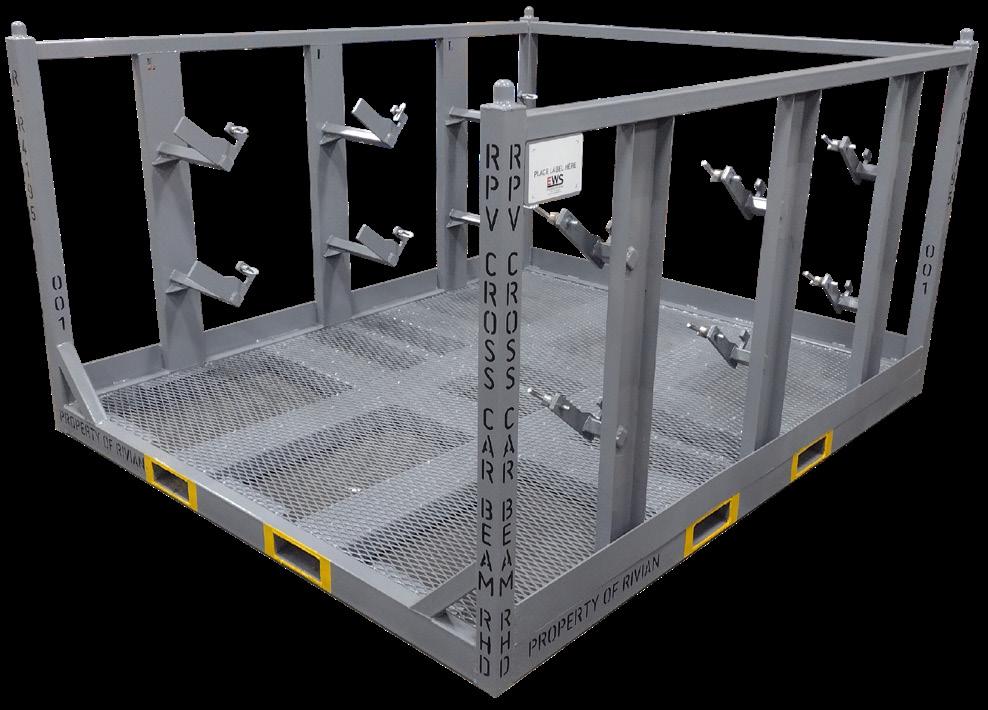
Essex Weld Solutions began with a handful of customers and a production plant in Essex, Ontario. From the start, people were our strength. We have selected a team with a focus on integrity and trust, which is the foundation that we have built our reputation on. Keeping our customers’ needs at the center of every decision is what has led us to strive for excellence in everything we do. These values have been instilled in all our team members ensuring we all work together towards these goals.

Twenty years later, we have expanded to multiple locations across three countries. Our Canadian plants include Leamington and Essex, Ontario. We also have American plants in Laurens, South Carolina and Warren, Michigan as well as one plant in Durango, Mexico. All locations boast on-site engineering and full production capabilities so that we can provide in-house concepting, designing, prototyping, and large-scale production allowing us to be a one stop shop for our customers’ projects.
Over one-hundred years of combined experience has taught us that investing in the latest manufacturing technology is necessary to provide top quality products. Our plate and tube lasers, break presses, robotic welders, and full powder coat system allow us to maintain high standards across all locations. Our manufacturing process is monitored from concept to delivery using

our own ERP system, Edata+, with real time inventory levels, production status, and barcode tracking labels. This enables us to maintain inventory of common materials at all locations and efficiently control quality and delivery timing.
Our innovative approach to the everevolving world of manufacturing means we never stop improving the service we provide our customers. As manufacturing shifts to a greater integration of robotic production lines, we have developed a Metrology team that exclusively handles the precise quality control required for those projects. These continuous improvement efforts allow us to expand our capabilities so that we can better serve our existing customers, and reach out to new ones, as their needs change, especially as the shift to Electric Vehicles continues.
The story behind sustainability Rivian entered the automotive industry at an interesting period. The company was very much undergoing its formation when major carmakers first started thinking about EVs, which, at the time, were seen as a ‘nice-to-have’.
With a passion for automotive and a desire to protect nature in all its glory, Rivian’s CEO, RJ Scaringe, set about building his dream: a vehicle with no limits and an adventurous edge that would allow drivers to explore harmlessly, reinvigorating their love for the environment.
The company first piqued interest with its two EV models. The R1T, its pickup truck model, and the R1S, which leverages the same great technology in an SUV body. In 2022, the company reached a major milestone with the announcement of it supplying electric delivery vans to Amazon—the initial quantity being 10,000, with potential for the e-commerce giant to expand this to 100,000.
Rivian cultivating a business on what was seemingly a blank canvas meant that the company worked through many challenges in its indirect procurement function to ensure that it remained true to its roots.
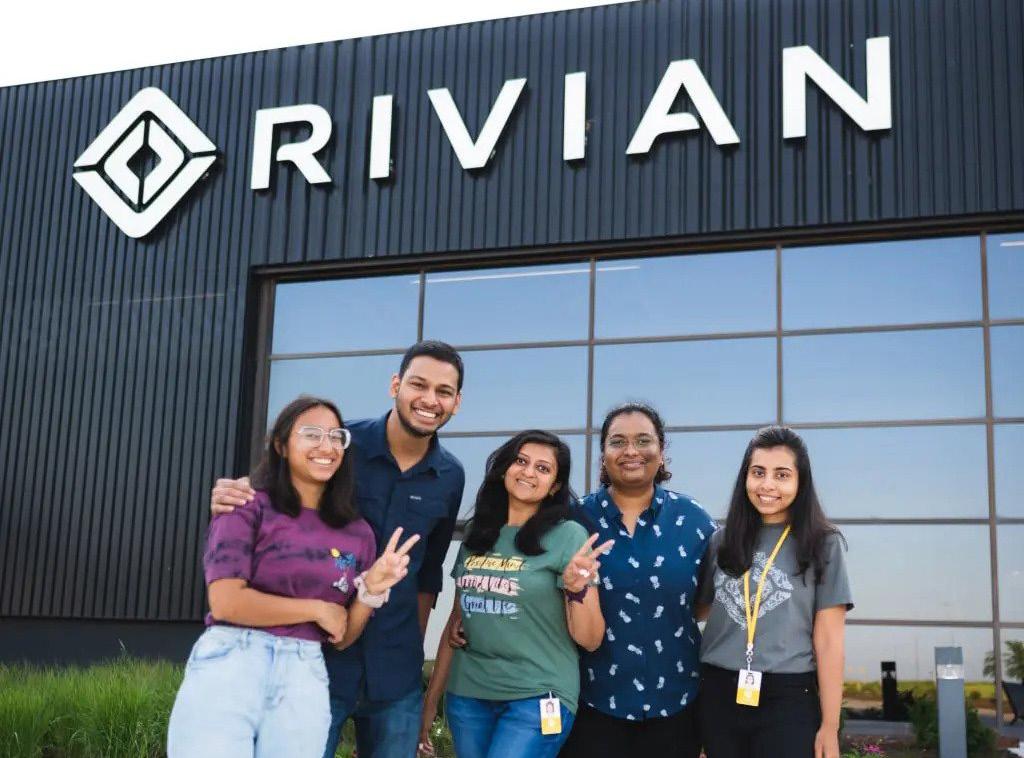

The solutions adopted by the company were pivotal. They allowed the team to focus on more hands-on tasks, alleviating the need for human input in the day-to-day processes.
“We had the opportunity to build an organisation that is truly best-in-class, from the ground up. We don't have to change any old behaviours; we can create new ones, and in the right manner, too. Balancing the two of those meant knowing
what we needed to do daily versus what was required to build a foundation for the future.
“This was the biggest challenge, balancing the short-term and long-term needs. There are so many day-to-day requirements, but we must be able to balance the day-to-day work, while building the foundation of the organisation we desire to build.”
Another major challenge that wreaked havoc on all supply chains—and inevitably affected Rivian—was the COVID-19 pandemic, which meant navigating a remote-working environment while scaling and taking on new team members across the globe.
 BRAD HOOD DIRECTOR OF INDIRECT PURCHASING, RIVIAN
BRAD HOOD DIRECTOR OF INDIRECT PURCHASING, RIVIAN
“We're fully operational, building three different vehicles with multiple different variations down in Normal, Illinois”

With data, automation, and AI, we help organizations transform and build value across the board. Explore how people and companies are reimagining supply chain networks at accenture.com
These trying times meant the company had to adapt to onboarding and training the team online, without knowing when new starters would come into contact with their colleagues.
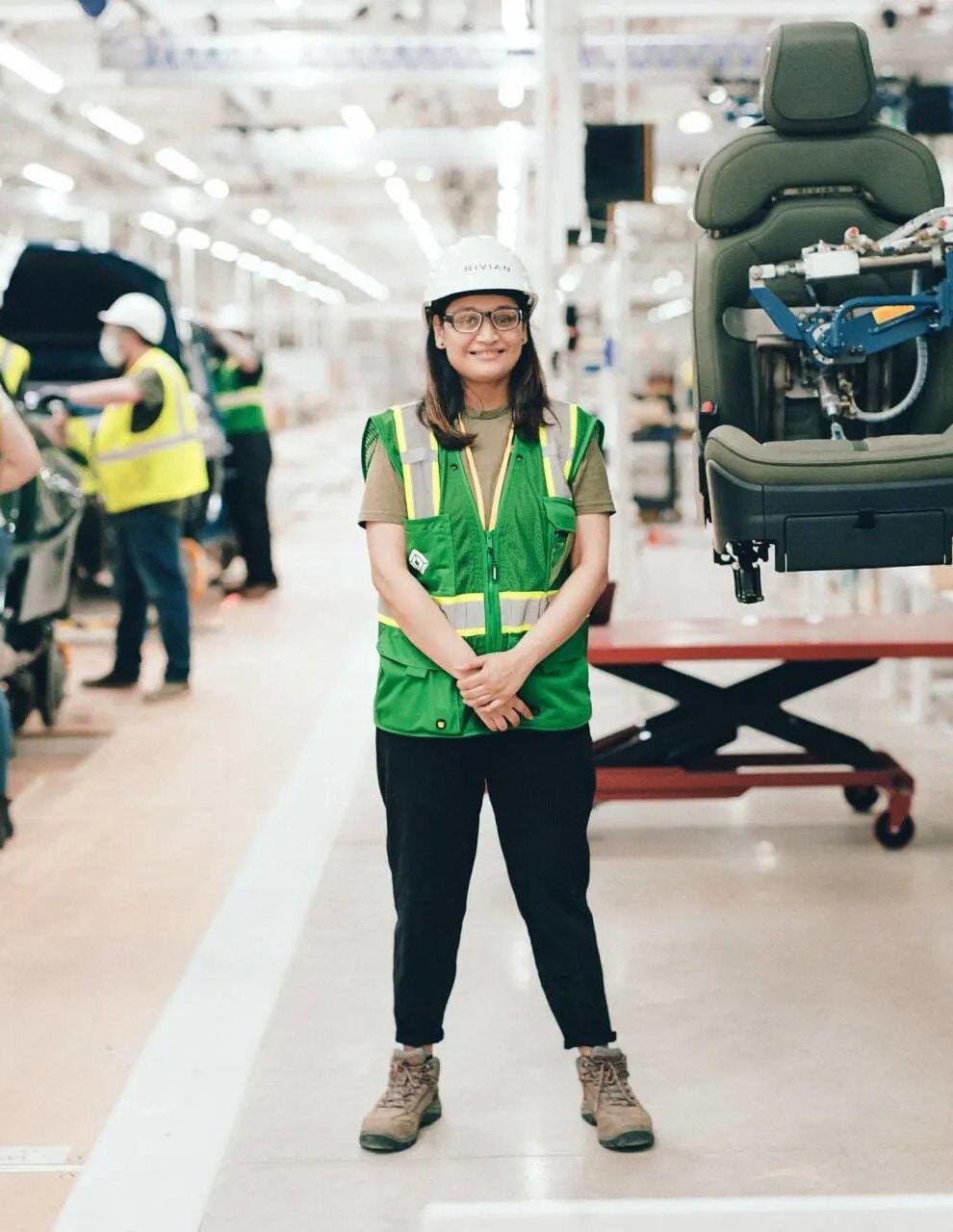
As a result of these challenges, the company adopted ‘category cards’ to create ease in the purchasing process. This is just one of the ways in which the company streamlines the onboarding process, automating indirect procurement processes to allow a smaller team to manage more purchases.

“When you log in, you see the category, you select that category, and it gives you a brief description to tell you if you can buy it from a catalogue—so we can drive more spend to a catalogue—or it gives you a direction to reach out to a purchasing manager or supplier,” Hood explains.
“That way, we can touch more spend with a smaller team, increasing the addressability of the spend and continuing to educate the rest of the organisation to drive spend to our preferred buying channels.”

Further sourcing platforms used by the company provide further standardisation of indirect procurement processes. This includes supplier negotiation preparation, which can largely be templated—as Hood explains.
“If we are working on an e-sourcing event or an auction,
we can leverage these templates. “Automatically, a quantitative proposal comes in and we can analyse that based on our previous price paid, other proposals, market intelligence,” says Hood.
“We can look at that pretty quickly and find any outliers, identify where the best quantitative values are and work with our stakeholders as we incorporate the qualitative aspects. These tools really allow us to work faster.”
While businesses would often apply the term ‘digital transformation’ to their operations, it seems Rivian is beyond this, ensuring that technology is embedded into all processes from the earliest possible stage as part of its strategic approach to growth.
“It's a multi-generational purpose that goes beyond any one of us, which is what drives the overall culture at Rivian”

“It can standardise things and reduce errors but, for us, it allows us to actually promote and enrich the daily operations of those working in data-entry roles. They've now gone into more category management roles and supporting student sourcing, as well as those roles where we can marry technology and experience,” Hood explains.
As the company looks to ramp up the production of EVs, technology will become an integral component in allowing the organisation to scale its operations and meet demand.
The company will continue to add value to its services sustainably, with
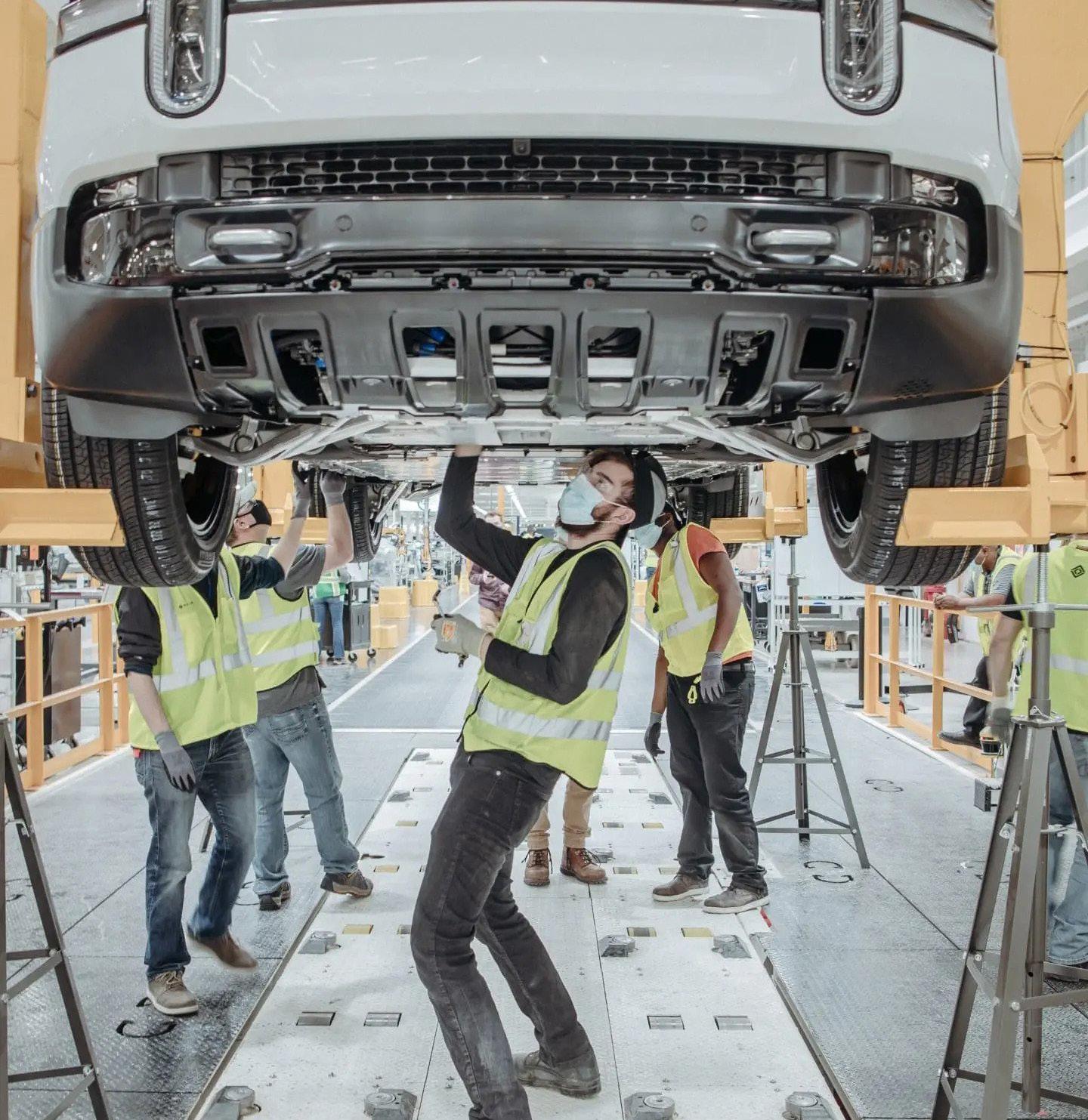

“We use the most sustainable products we can and try to be more sustainable with the materials of the vehicles”
sourcing playing an integral role in reducing emissions down the supply chain. As the company expands its own charging network, technology will allow personnel more time to explore renewable energy sourcing, making sure that Rivian customers are charging up with clean energy.


Meeting its strategy for success hinges on its use of data in the procurement functions to standardise processes and focus on saving costs, time, and limiting negative
climate impact—with the overarching aim of eliminating it. As such, the procurement team will look at supplier spend and consider whether its dollars are going towards the desired suppliers.
While much of the technology adoption and integration is carried out in-house, Hood explains that technology partners will be leveraged by Rivian to meet demands unique to its processes.
Hood says: “We understand what we want to do in theory—on a whiteboard—but how do we integrate that into the actual software that’s more commonplace?”
In trying to answer this question, the company has been able to push technologies to their absolute limits, which is a benefit to Rivian, but also the partner that supplies that solution—making Rivian a testbed ripe for procurement solutions.
Claims of Greenwashing can be hugely damaging for any brand, which is why it’s vital businesses are meticulous about their sustainability claims.
WRITTEN BY: SEAN ASHCROFTGreenwashing is a phrase that was coined by environmentalist Jay Westerveld in a 1980's essay in which he explored the practices of the hotel industry. He claimed the hotel industry was falsely promoting the reuse of towels as part of a broader environmental strategy when, in truth, it was a cost-saving measure.
Back then, greenwashing was a rarely mentioned phenomenon but, in recent years, the term has taken on huge significance, as organisations worldwide have set ambitious and very public net-zero carbon goals.
Sometimes – knowingly or unknowingly – businesses make claims around their sustainability credentials that fail to stand up under close scrutiny, and the accusations of greenwashing that arise from this can result in huge reputational brand damage.



The e2open connected supply chain platform provides the end-to-end visibility and collaboration you need to tackle unpredictability. Build trust and confidence with your channel, supply, logistics, and global trade partners. Take control of supply constraints through direct procurement and meet customer commitments in the face of disruptions and scarcity.
The connected supply chain. Moving as one™. www.e2open.com
E2open and the e2open logo are registered trademarks of e2open, LLC, or its affiliates.
CAMILLAOrganisations with large supply chains are more prone than most to falling foul of this. With value-chain vendors for large companies often numbering in their thousands, running the ESG rule over all of them is devilishly difficult.
But, with sustainability, the devil is very much in the details. This is why end-to-end transparency is so important in the supply chain, not just as a way to ensure operational resilience, but so organisations can exercise control over ESG compliance – especially in the deepest recesses of their supply chain, where non-compliance is most likely to be found.
There can be little doubt that greenwashing is a real problem. A recent report from global spend management specialist Ivalua suggests that 90% of organisations fail to drive green initiatives across the supply chain, with just 10% saying they always include sustainable practices in contracts and agreements.
The Ivalua Supplier Relationships Report surveyed suppliers across the UK, France, Germany and Switzerland, with a view to examining how collaboration can boost environmental initiatives.
Ivalua Chief Marketing Officer Alex Saric said of the report’s findings: “Firms need to ensure environmental efforts to cut carbon
emissions extend beyond their own four walls. Anything else is greenwashing.”
Working with suppliers crucial on sustainability
“For most organisations, emissions from their supply chain are several times greater than their own direct emissions. This means it’s critical they work with immediate and sub-tier suppliers to drive improvements in environmental practices.”

Saric then stresses that suppliers have a vital role to play in reducing environmental impact but that organisations have a responsibility to give them the right tools to boost green initiatives.
“This means regularly communicating with suppliers, assessing their efforts, and
“Avoid generic claims about your products and business that are not supported by data”
MJELDE COMPLIANCE & SUSTAINABILITY DIRECTOR, TRIMCO
Olivia Montgomery is Associate Principal Supply Chain Analyst at Software Advice, a subsidiary of Gartner. Montgomery produces reports and insights on smallbusiness project management, supply chain trends and technology strategies.
She recently told the Supply Chain Digital Show on LinkedIn that a Software Advice report showed a number of supply chain managers say their employer’s communication around sustainability “doesn't align with what is actually happening”.
Montgomery added: “Such messages must be accurate because accusations of greenwashing can severely impact a brand’s reputation, especially if they are trying to attract the newer or younger customers that are exceptionally engaged with sustainability. Often, you only get one shot to make sure messaging is honest and transparent.”
The report also suggests that many businesses are not disposing of returned products responsibly. “There’s room for improvement there,” Montgomery says. “Especially when you're focusing on not just cost savings and operational efficiency, but also sustainability, which is now super-important to consumers.”
providing them with flexibility to offer innovative solutions.”
He also says that, by taking a smarter approach to procurement, organisations “can facilitate collaboration and access actionable insights to drive continuous improvement and help hit CO2 goals”. There is also a business imperative tied to hitting sustainability targets, Saric points out.
“Environmentally conscious organisations can build their brand reputation, increase sales, and gain the edge over less-green competitors,” he says.
Fashion sector has historically poor ESG record One sector that historically has been plagued by poor performance around ESG is fashion, and Trimco is one of a host of companies that are helping the sector shake off this reputation.

A leading supplier of supply chain traceability solutions, Trimco helps international fashion and sports brands stay ESG compliant, avoid greenwashing and maintain a healthy sustainability agenda.
Camilla Mjelde is its Compliance & Sustainability Director, and she says there are certain behaviours businesses should follow if they intend to maintain impeccable sustainability credentials.
One is how they use language around sustainability.
“How do you pitch your sustainability efforts?” asks Mjelde. “If you’re using terms such as ‘Better for the environment’ or ‘More sustainable’, you are dangerously close to sounding like you’re greenwashing.

“To avoid falling foul of the watchdogs, avoid generic claims about your products and your business that are not supported by any data or proof points.”
Mjelde urges fashion brands to collect and monitor data related to sustainable-sourcing efforts and to keep this data up to date. “Stop
OLIVIA MONTGOMERY ASSOCIATE PRINCIPAL SUPPLY CHAIN ANALYST, GARTNER“Some supply chain managers say employer claims around sustainability don’t align with what is actually happening”
Mjelde adds that businesses must also avoid vagueness in business statements.
Proving claims is vital to avoid greenwashing charges “Make sure you can prove all the information if required,” she says. “For example, the claim ‘We used 30% less water in our drying house in China for our SportsLine in 2022 compared to 2021’ is a reasonable claim that can be proven and followed up.

require documentation, says Mjelde: “Failing to provide data for product claims is the most common reason companies find themselves accused of greenwashing.
“If you are making a specific product claim, then documentation needs to be traced across the supply chain, from raw materials to the actual finished product.”
She says non-profit group Textile Exchange is a key organisation in this area, having established “clear and strict rules” about what’s allowed to be said as part of a product claim.
Inter-departmental collaboration is also key in the battle against greenwashing. “Correct communication to the public is a PR and marketing job, while communication with customers is down to sales,” says Mjelde. “Everything needs to be done with complete information to hand, because inaccurate communications due to misguided marketing materials and misinformed customers can lead to greenwashing fines.”
She adds that collaboration between departments must be “seamless” to ensure that all claims are valid and backed up by data.
Staying up-to-date with current laws and regulations is another important requirement in the quest to avoid claims of greenwashing.
For example, the European Union will issue new environmental claims regulations and updates for the textile industry every year until 2025 and beyond.

“Stay on top of these and other changes, so you continue to comply,” advises Mjelde. “This is a big challenge, so make sure you invest in the right team, tools and partners to help you navigate the complexities of the latest regulations.”
Mjelde concludes by highlighting that Trimco seeks to keep customers up-todate on the latest EU regulations news. “This enables us to advise them and help them make the best decisions for their businesses,” she says.
“Firms need to ensure efforts to cut carbon emissions extend beyond their own four walls. Anything else is greenwashing”
 AD FEATURE WRITTEN BY: TOM SWALLOW PRODUCED BY: JAMES WHITE
AD FEATURE WRITTEN BY: TOM SWALLOW PRODUCED BY: JAMES WHITE

Supply chains have recently seen unprecedented challenges due to the uncertain global scenarios and ever-increasing sustainability demands. The manufacturing industry is embedded within the wider supply chain network and is, therefore, subject to enhanced exposure, but what does this mean for an industry that has historically operated in a globalized fashion?
Businesses are now struggling to balance globalization and localization of supply chain operations as they look to futureproof their operations. In either case, digitalisation is the critical enabler of growth. So how should manufacturers approach their digital transformation journeys?
This is where an innovation partner like HCLTech can lead the manufacturing supply chains toward a successful future. Shankar Gopalkrishnan who has extensive experience in driving change among manufacturers to deliver better outcomes, explains how manufacturing organizations can best leverage technology to ensure successful business outcomes.


TS: Globalization vs localization. What are the pros and cons?
SG: The manufacturing industry will continue to progress on the foundations of digital, flexible, and green, which have been the core pillars for globalization. This will allow manufacturers to create more sustainable products faster and cheaper. Globalization also allows companies to establish synergies between regions, industries, and trading systems.
 Senior Vice President, Head
localisation versus globalisation and the input of technology
Senior Vice President, Head
localisation versus globalisation and the input of technology
TITLE: SENIOR VICE PRESIDENT, HEAD OF MANUFACTURING
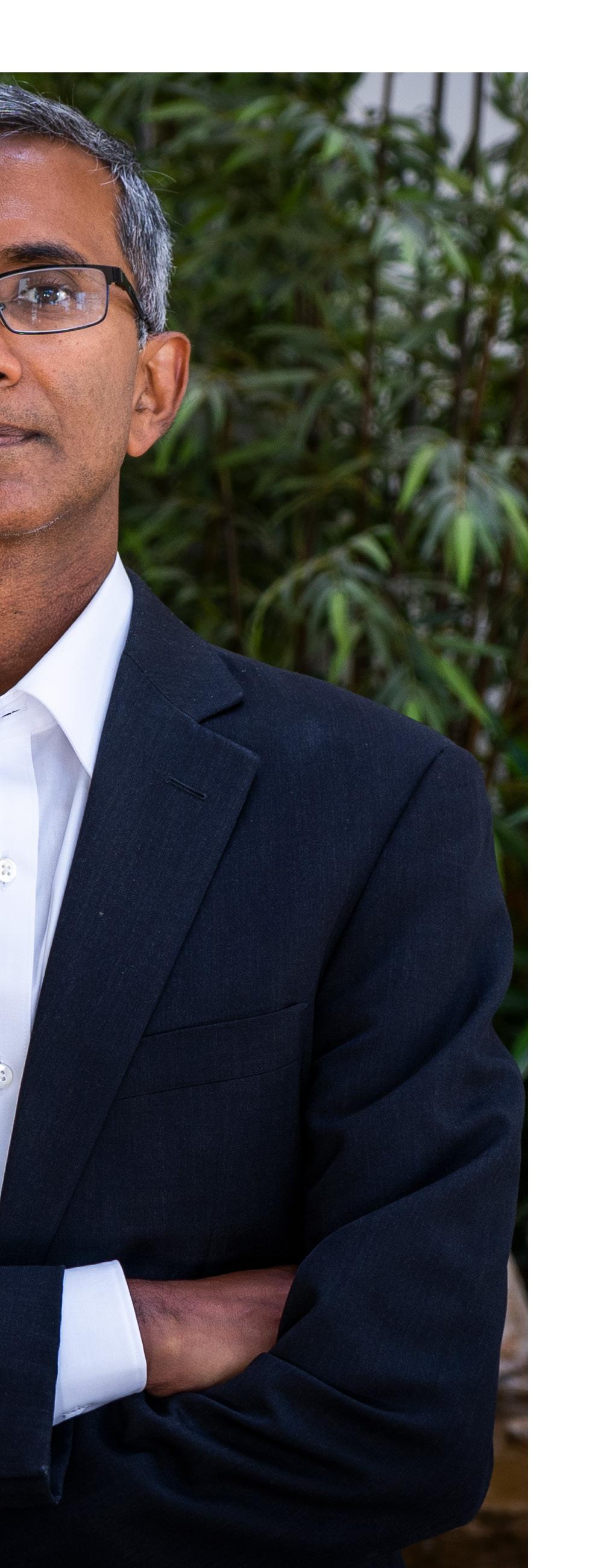
INDUSTRY: IT SERVICES AND CONSULTING

LOCATION: UNITED STATES
Head of Manufacturing and Utilities Vertical for business acquisition, global contracts, revenue and profitability growth. 25 + years of overall experience in Technology Consulting, Account Management, Business Development. Manage large teams under Global delivery model. Worked extensively on strategy formulation, solution identification and design, consultative solutions providing value based services to clients.
Extreme localization sounds right in the current situation. But when you consider the long-term effects, this approach will impact the product cost and fast-to-market product development, and disrupt the trade links and supply chains established over decades. The right equilibrium must exist in balancing localization efforts while improving and tightening globalization principles for promoting economic growth and vital business outreach to break into new markets.
TS: What has driven manufacturers to re-evaluate their sourcing strategies?
SG: The pandemic and supply chain constraints forced the manufacturing industry to rethink their sourcing strategies, with a focus on finding the right vendors to balance globalization and localization.
Strategic sourcing has pivoted to a new level, digging into all aspects that influence the value of sourcing. The traditional value drivers for strategic sourcing were built on the principles of cost, quality, scale and
overall score carding. But the events over the last two years have exposed startling deficiencies. Now the procurement organizations in the manufacturing industry are heavily focused on establishing new baselines aligning toward response, agility, speed, visibility, broader product value chain, risk management, and suppliers who can address resiliency.
Sourcing organizations are also trying to create more outcome-based partnerships where suppliers can take a complete TCO-based approach to defined business outcomes. We at HCLTech are seeing a lot of customers doing some fundamental changes to their strategies toward sourcing on these outlined parameters, but to scale this, the clients are looking for next-gen digital infrastructure and applications to enable their vision.
TS: Is it likely that there will be a strategic approach to combine globalization and localization?
SG: Globalization to glocalization, is a very novel thought process. But, building such an ecosystem will take significant time, people, and money. While such thought-provoking measures are adopted in the long run, it is very important that the ecosystem does its part in laying out and adopting new policies that increase supply chain resilience. There must be necessary measures to build the infrastructure and risk mitigation strategies to stress-test supply chains on a periodic basis.
Supply chain agility is essential for the manufacturing industry to keep up with customer expectations of personalization and convenience. But, in many ways, agility remains only a buzzword as manufacturers lack the ability to quickly integrate local providers, adapt inventory, and rejig the value chains.

To change this, the manufacturers must adopt a strategic transformational mindset, creating the right balance to strengthen their local competencies alongside integration with the global hub through industry 4.0 and digital levers. The transformation of the systems used for production, transportation, and consumption would require a new way of thinking to enable manufacturers to scale further.
The globalization vs localization debate Gopalkrishnan explains that, until now, global supply chain networks have created
“GLOBALISATION
ALLOWED COMPANIES TO ESTABLISH
connections between regions and opened up more possibilities for manufacturers.
“Globalization has allowed companies to establish good collaborations between industries and different regions, as well as a trading ecosystem. But I think the challenges that we are seeing today are due to the supply chain issues—as well as the pandemic and geopolitical crises—forcing organizations to look at establishing local ecosystems,” says Gopalkrishnan.
In this process, stockpiles have been created to maintain some equilibrium to bridge this gap. In this scenario, a business strategy around localization against globalization makes sense.
While the case for localization seems the strongest option for supply chains, Gopalkrishnan also highlights that there are other variables that determine the success of supply chains in the current risk landscape.
Resilience and the health of the supply chain are essential metrics that we need to continue to measure and monitor as we move forward. Localization in the current scenario makes sense, but if you look at it from a long-

“WE

HCLTech is a next-generation global technology company that helps enterprises reimagine their businesses for the digital age. Its technology products and services are built on four decades of innovation, with a world-renowned management philosophy, a strong culture of invention and risk-taking, and a relentless focus on customer relationships. HCLTech also takes pride in its many diversity, social responsibility, sustainability, and education initiatives. Through its worldwide network of R&D facilities and co-innovation labs, global delivery capabilities, and over 219,000+ ‘Ideapreneurs’ across 52 countries, HCLTech delivers holistic services across industry verticals to leading enterprises, including 250 of the Fortune 500 and 650 of the Global 2000.
Although it has a large footprint in the manufacturing space, HCLTech is the service provider of a multitude of organisations spanning various industries, including consumer goods, aerospace and defence energy and utilities, travel, and the public sector.
The firm is heavily focused on providing innovation capabilities to its customers through its large portfolio of digital solutions, in which application modernisation, technology and cloud services, cybersecurity product engineering, digital business, start-up ecosystems and industry ecosystems are core offerings.
SHANKAR GOPALKRISHNANterm standpoint, we are already seeing that it is increasing the cost of products and will also impact the time for products to come into the market.
Since global disruptions are the key factors driving manufacturers’ decisions, this is also the main focus of HCLTech as it operates within four manufacturing industry subverticals: Automotive, Industrial products, Chemicals and Electronics. As a result of these disruptions, manufacturing companies are paying close attention to their supply chains and doubling down on the costs involved in production, while also creating contingency plans for material sourcing and transportation to limit potential downtime.
In particular, Gopalkrishnan says that firms are looking into transparency across their end-to-end value chains and alter their strategic sourcing approach toward better
“OUR MVISION FRAMEWORK IS CONSTRUCTED TO SUPPORT THEIR TRANSFORMATION JOURNEY BY LEVERAGING OUR BUSINESS DIGITAL OPERATIONS AND THE ENGINEERING PILLAR”
risk management. We are seeing some fundamental changes in sourcing strategy to scale this entire ecosystem—right from the current traditional model to a nextgeneration sourcing model— focusing on visibility, speed, agility and robust infrastructure and applications to align to that vision.
The new outlook on the supply chain, particularly in the eyes of manufacturers, is to consider all aspects of sourcing instead of targeting individual areas. This means a holistic approach to sourcing has become a necessity in risk mitigation.
Weighing up the benefits of both globalization and localization of supply chains is somewhat an endless debate. Thus, the proposal of Gopalkrishnan and the team at HCLTech is to consider what he calls a ‘glocalization’ model.
Creating more of an agile environment continues to be a challenge for a lot of manufacturers. It’s important they change their thought processes and move into

a transformational mindset, which requires a balance of local and global competencies, through Industry 4.0 and digital transformation levers.
The benefits of digital in the supply chain
Global business has been the major catalyst for many organizations, driving them towards operational excellence, which provides a strong case for a globalized manufacturing outlook. But, to reach new heights and become more innovative, Gopalkrishnan says that the focus should turn toward the state of the market leveraging a more proactive approach to market disruptions. This is where manufacturing companies are utilizing the latest industry 4.0 capabilities—along with the internet of things (IoT), to establish their digital transformation based on data.
“This will allow them to become more transparent in their operations, consistent and market-responsive. On this line, we are establishing and helping some of our
manufacturing customers to create their digital plan, pivoting beyond the digital divide that is currently evident in the overall value chain. We’ve set up what we call ‘Manufacturing Vision’ or ‘MVision’, which can truly help them achieve unprecedented levels of digital adoption and become data-driven organizations” says Gopalkrishnan.
As a well-established digital solutions provider for manufacturers around the world, HCLTech created a comprehensive framework for the manufacturing industry through MVision which is built on the principles of a hyper connected digital-enabled enterprise. The MVision framework allows organizations to adopt and deploy solutions across the entire value chain, focusing on people, process, and technology. MVision has been constructed to provide visibility from shop-to-top floor by integrating the broader ecosystem of

customers, partners, and employees. The integration allows organizations to tap into opportunities to increase top line through new business models and improve bottom line by breaking silos. The MVision transformational framework is built on four fundamental pillars –
• MVision for Business
• MVision for Digital
• MVision for Engineering
• MVision for Operations
The first pillar, MVision for Business helps define and execute digital process and digital strategies to enhance customer, partners, and employee experiences. It aims to build systems that drive business transformation to create process optimization, experience, and product orientation.
The second pillar, MVision for Digital helps design and build the platforms that use AI, ML, and other capabilities for creating mechanisms within our customers’ technology footprint to empower their digital transformation journey through our MVision for Business.
The third pillar, MVision for Engineering focuses on assisting manufacturers in accelerating product development by leveraging their latest technologies, monetizing their product services, and providing immersive customer experiences.
The fourth pillar, MVision for Operations provides an integrated applications and infrastructure services in a high velocity, software driven agile operating model
At the core of MVision framework, is MVision Nucleus, powered by the critical components of industry 4.0 that focuses on creating an intelligent and connected ecosystem
through connected assets and connected products. This drives digital transformation across the connected value chain of the manufacturing industry.

The first goal to consider when implementing the four pillars revolves around smart manufacturing principles. As companies see the opportunities arising from industry 4.0, they require the expertise to get the most out of their connected solutions. The next area is supply chain visibility, which is a critical capability for all businesses as they strive for sustainability, while minimizing risks in their value chains. HCLTech is heavily involved during the implementation stage to ensure careful alignment with their digital plan.
HCLTech is determined to invest in clients’ roadmap and aim to help adopt new technologies with complete transparency.
“RESILIENCE AND THE HEALTH OF THE SUPPLY CHAIN ARE ESSENTIAL METRICS THAT WE NEED TO CONTINUE TO MEASURE AND MONITOR AS WE MOVE FORWARD”
The need to shorten supply chains in the face of ongoing global uncertainty and disruption is a pressing issue for many organisations, especially for multinational manufacturing companies that have come to rely on cheap labour in South East Asia.

China, in particular, continues to be hobbled by an economic downturn, power shortages and ongoing lockdowns resulting from its zerotolerance approach to COVID-19. China’s days as the world’s manufacturing engine room seem to be numbered, as businesses seek to relocate manufacturing to other nations in Asia, such as Vietnam, or nearshore or reshore it closer to home.

Supply chain disruption and uncertainty is increasingly seeing businesses plug production interruptions with additive manufacturing technologies

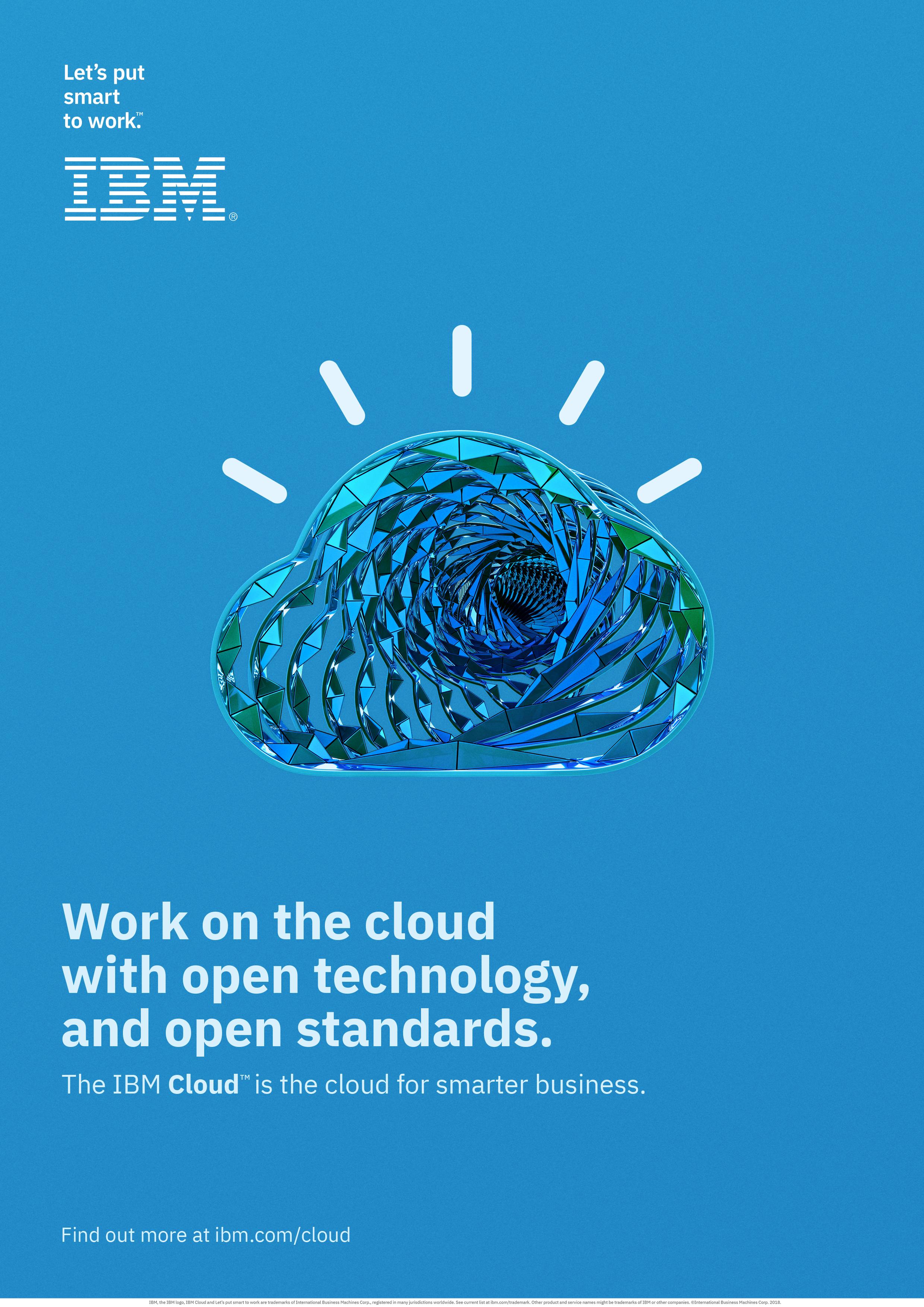 DENNIS UNKOVIC US LAWYER & AUTHOR
DENNIS UNKOVIC US LAWYER & AUTHOR
There are, however, other means of shortening supply chains – one of which is 3D printing, also known as additive manufacturing (AM).

AM technology started out as a way to produce prototypes with no machine tooling, but, over the past decade, it has evolved rapidly. An early drawback was that the process worked only with plastics; now, though, substances that can be printed include powders, resins, metals, carbon and even human flesh.
In a report exploring the status of 3D printing – called The Mainstreaming of Additive Manufacturing, co-author Jörg Bromberger, Director of Strategy & Operations – points out that AM technology
can generate any 3D component that will perform better and cost less than conventional manufacturing methods.
3D printing allows for massscale customisation
He also highlights there’s no need for moulds or fixed tooling, and that it also allows for mass-scale customisation. Such simplicity of fabrication, he continues, reduces timeto-market and the need for spare-parts inventories, enabling the on-demand production of items from digital files in the field. Bromberger cites the example of carmaker Mercedes-Benz, which uses AM to produce spare parts for its classic vehicles.
The tech has the huge potential to help businesses reimagine manufacturing-based supply chains, and Bromberger feels that the technology is approaching the point where it is becoming disruptive: “When can
“3D printing makes it possible for a printed product to be infinitely more complex in structure”
a technology that has long been touted as a disruptive game changer for supply chains be said to have truly come of age?”
His answer? When it’s a multi-billiondollar industry – which AM is; a $14.7bn industry, to be precise, that boasts a 22% annual growth rate.
“Forty years after the development of the first commercial 3D-printing machines, the sector is extremely dynamic, with more than 200 players competing to develop new hardware, software, and materials,” says Bromberger.

AM, he says, can produce products that are beyond traditional manufacturing methods. Those already widely using the technology include manufacturers of consumer and industrial goods, the defence and aerospace industries, automotive companies, component suppliers and the healthcare and dental industries.
Innovation driving improvements in AM tech
Rapid innovation, according to Bromberger, is driving major improvements in the performance of AM technologies: “The latest generations of AM machines allow for the creation of stronger parts by controlling the alignment of fibre reinforcements using magnetic fields.
“Plus, the range of materials available for AM systems continues to expand, now including high-strength aluminium alloys and medical-grade polymers.”
AM systems are getting faster, too, with Bromberger citing improvements to software and post-processing technologies “that are further streamlining the end-to-end journey from concept to finished component”.
Disruption of any sort comes when advances in technology meet mass demand for that technology – and AM is now approaching this point.

Earlier in the year, General Motors, Siemens, and Airbus Defence and Space joined industrial manufacturing company Stratasys for a roundtable to discuss 3D printing.
The participants relayed their experiences of 3D printing over the past two, challenging years.
Among those taking part were Octavio Pichardo Romero, Senior Manager of GM’s production plant in San Luis Potosi, Mexico, and Philip Emmerling, AM Business Development Manager with Siemens Mobility.
Romero said: “For many years, GM plants in Mexico have used 3D printing for making production parts for highperformance vehicles, including metal parts for the Cadillac V series.
“However, in the pandemic, we used it to 3D-print spare parts for equipment on
our assembly line, ensuring production could continue when parts needed to be replaced. We were able to avoid line closures that would have cost around $1,000 per hour.”
Siemens Mobility also used 3D printing to overcome pandemic-induced supply chain interruptions.
“At Siemens, we produce certified metal and polymer 3D-printed parts for customers worldwide, especially in the rail business,” Emmerling said. “3D-printing technology is very important for us in the maintenance of trains, where our goal is to carry out on-demand printing for tailored product solutions. We now use AM to optimise the supply chain, especially with maintenance, where there is a need for fast, quick and reliable solutions for spare parts.”
Indeed, some industry experts believe we have already passed that point: noted lawyer and author Dennis Unkovic, for example, says the supply chain was broken not by COVID-19, but by disruptive factors already in play, such as 3D printing. In fact, Unkovic goes on to say that 3D printing will permanently change the global supply chain as we know it.
“Supply chain will be upended by 3D printing,” he says, “And it will be a reality sooner than most expect.”

Unkovic – who’s been named in the Best Lawyers in America list for the past two decades – details how 3D printing will disrupt supply in his explosive new book, ‘Transforming the Global Supply Chain: Cyber Warfare, Technology, and Politics'.
One-time US Senate legislative counsel Unkovic has been a supply chain lawyer for 35 years, handling international business transactions, mainly between the US and both China and Japan.
Unkovic reminds us that established manufacturing models built on cheap Chinese labour have been coming under pressure for many years. “Labour costs in China have continuously risen over the past 25 years. This is forcing companies outside China to rethink how and where to locate their sourcing of products and components.
“This provides perfect economic conditions for 3D printing because it requires little labour and it makes sprawling operating plants in China far less attractive.”
Complex goods perfect for 3D printing
Unkovic also believes that the increasingly intricate nature of mechanical and electronic components plays into the hands of 3D printing.
“If you need to buy a simple component in quantities of thousands or millions, then
“The
JÖRG BROMBERGER DIRECTOR OF STRATEGY & OPERATIONS, MCKINSEY
traditional manufacturing makes sense. But complex products are, by their nature, composed of many sub-components, and 3D printing makes it possible for a printed product to be infinitely more complex in structure.

“The pandemic made global suppliers and consumers more aware that timeliness is critical in moving goods from one place to another, particularly from one side of the world to the other.”
Unkovic says that the pandemic showed us that a product manufactured in China isn’t guaranteed to arrive in the US or anywhere else in a timely fashion.
“Companies that desperately need key components are incentivised to look to 3D printing to fill the gaps,” he says.
He also points out that today’s consumer is less happy to buy massproduced goods, increasingly looking for personally tailored products instead.
“A strength of 3D printing is that any item can be redesigned or changed in subtle or significant ways without the cost of major retooling,” Unkovic says. “3D printing was once slow and limited, but it has now advanced to the point where multi-jet fusion printers can produce thousands of parts at speed, while server farms can now power hundreds of 3D printers that are available for use from dedicated suppliers.”
Certainly, major moves are being made on the AM front. Recently, General Motors, Siemens, and Airbus Defence and Space joined major industrial manufacturing company Stratasys for a roundtable to discuss 3D printing, and we are starting to see far more of these kinds of events.
It seems Unkovic and Bromberger might be gazing into a future that is already here.
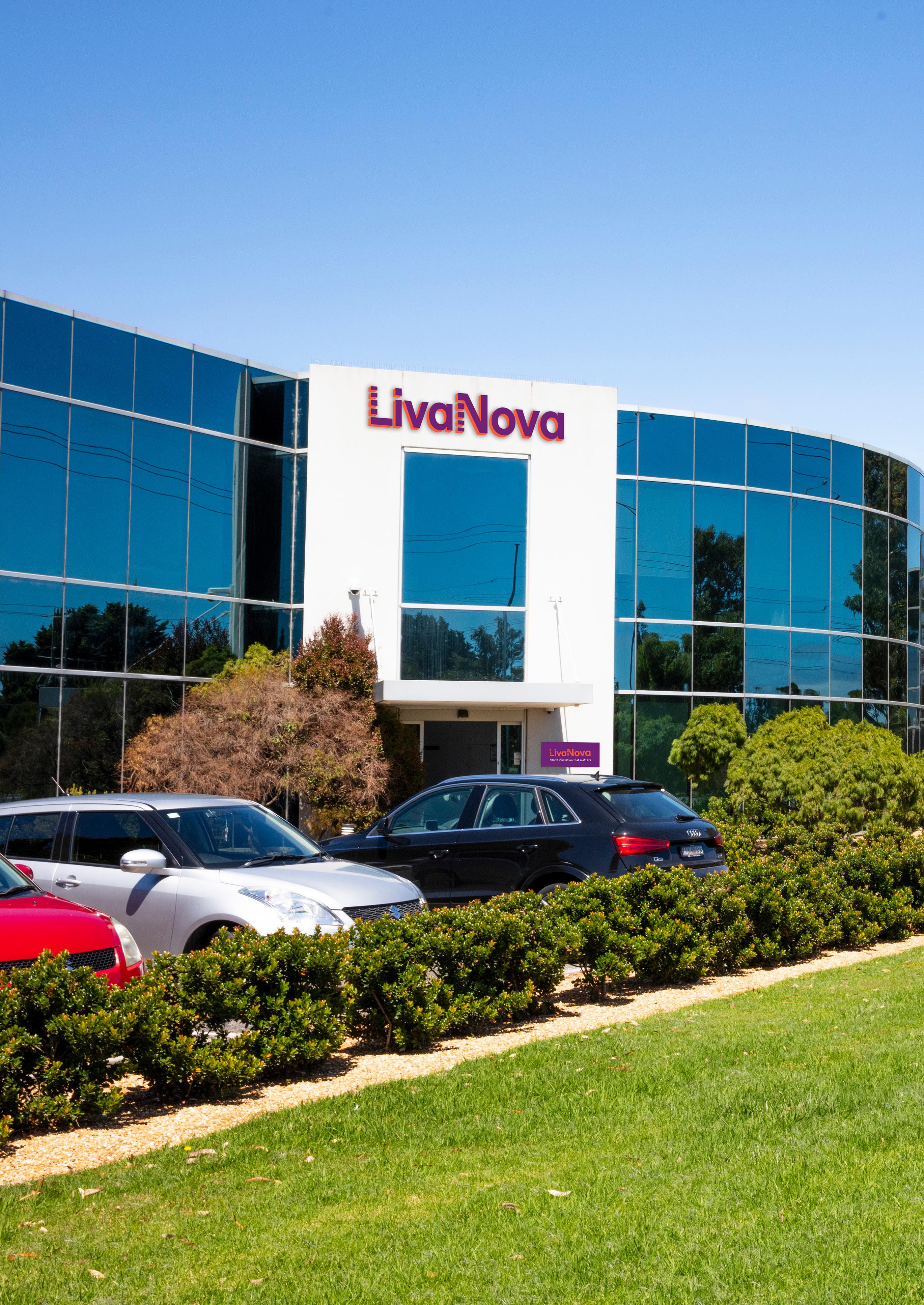

LivaNova is a global medical technology company built on decades of experience and a strong commitment to their patients. Their focus is on transforming lives with products and therapies for the head and heart, operating in Cardiopulmonary, Neuromodulation and Advanced Circulatory Support technologies.
For LivaNova, it’s health innovation that truly matters
Their diverse product portfolio and pipeline include the following therapeutic areas:
• Advanced Circulatory Support
• Cardiopulmonary
• Difficult-to-Treat Depression
• Drug-Resistant Epilepsy
• Heart Failure
• Obstructive Sleep Apnea
Their Chief Procurement Officer (CPO), Jérôme Lesenechal, has spent his entire career in Procurement, coming from 17 years’ experience in Automotive, through multiple categories, before joining LivaNova in February 2018.
Lesenechal leads the global Procurement team in charge of strategic sourcing activities, both for indirect services and for direct material, as well as new product development.

LivaNova’s CPO, Jérôme Lesenechal, chronicles what it takes to provide life-changing medical services through technology, procurement and innovation

When LivaNova needed a medically certified touchscreen computer to communicate with their new revolutionary perfusion system monitors they turned to Teguar, who assembled a team of product design specialists and developed a custom computer meeting every single requirement of LivaNova’s requests.

Medical computers manufacturer Teguar on why its latest work on LivaNova’s heart & lung machine was so rewarding
It might be said a healthy bottom line is the most gratifying thing for a business leader, yet for organisations working in the medical sector, saving and improving lives offers rewards that are on another level entirely. Teguar builds medical and industrial computers, and its CEO, Jonathan Staub says one recent project in particular “felt extremely important” – its contribution to the development of the hardware component of the Essenz Patient Monitor, a medical device that is used by clinicians during Cardio-pulmonary bypass procedures.
The project saw Teguar working with LivaNova, a global medical technology company that specialises in products and therapies for the head and heart. LivaNova tasked Teguar with providing the hardware
component of the Essenz Patient Monitor, a medical device that provides continuous, advanced and insightful data to show the key parameters at all times during a case. “Cardiopulmonary bypass perfusion supports patients during open heart surgical procedures, by taking over the function of the heart and lungs,” Staub explains.
Teguar developed an all-in-one touch-screen PC that met the exacting specifications that all medical electrical equipment have to satisfy, for the performance of highly invasive procedures. But as well as this, Staub says it was hugely important that the PC was also pleasing on the eye. “We pride ourselves on the elegance of our products,” he says. “Elegance is an important part of who we are and what we do.”

Product not approved in all geographies. More information on the Essenz Patient Monitor as well as important safety information available on the LivaNova website.
Among the important services Teguar provides to customers is long-term availability of computer components – vital for healthcare equipment that customers might not be able to afford to replace for many years. The company also has “an experienced and agile” global team that can meet customers’ needs.

So what was it about the LivaNova opportunity that drew Teguar in?
“LivaNova’s mission is to support perfusionists and their patients during lifesaving procedures,” says Staub. The Essenz Patient Monitor is the realisation of this mission.
“That we could be a crucial part of the development of such a cutting-edge medical computer was an exciting opportunity and a challenge to us.”

“This means our responsibilities go from clinical studies to spare parts management, through serial production and corporate services,” he says.
The relationship between a MedTech company like LivaNova and their suppliers is, of course, crucial: in the end, the quality of those relationships will determine patient outcomes.
JÉRÔME LESENECHAL CHIEF PROCUREMENT OFFICER, LIVANOVA“Suppliers share our values,” says Lesenechal, “especially our purpose to improve the lives of patients (which speaks to one of our core values, ‘patients first’).
“I consider myself as accountable for the healthcare supply chain, and our suppliers are doing so, too.”
Supplier relationship management, in MedTech and beyond, has been growing to a level of importance higher than ever before. Contract obligations or Purchase Price Management are not enough to manage ongoing supply chain disruptions anymore, and it’s not only about the power dynamic between the company and its suppliers.
"There is an urgent need to extend the company's borders to external partners,” Lesenechal says, “because together, we are stronger and more creative in anticipating and fixing problems.
“The CPO especially needs to orchestrate brainstorming sessions with suppliers; this can be to get support for a
“I CONSIDER MYSELF AS ACCOUNTABLE FOR THE HEALTHCARE SUPPLY CHAIN, AND MOST OF OUR SUPPLIERS ARE DOING SO, TOO”
difficult-to-source component, to drive a game-changing design evolution, or to influence business decisions.”
Lesenechal expresses that he has, on several occasions over the last few years, seen that the value coming from that type of co-working is very high, compared to a standard purchase price discussion.
Regarding internal stakeholders, he believes that procurement must play a strong role in Product Lifecycle Management.
From supplier selection in a new product design phase to the phase-out of another one through the proactive management of the obsolescence risk, Lesenechal maintains that procurement’s partnership with R&D and marketing can have a massive impact on the sourcing agility, as well as the profitability per product – and that this is what procurement must drive.
Developing second sources, having a dynamic process of redesign for electronics, and revisiting specifications to make them easier to source are key.
“What we call ‘Sustaining R&D’ must now be fully integrated into procurement´s strategy, as well as to the daily management of supply issues,” he says.
People development ‘beyond resilience’ Resilience is becoming quite a common topic, and not only in business circles.
“Resilience remains super important, and management must keep working on it, but I
TITLE: CHIEF PROCUREMENT OFFICER
INDUSTRY: MEDICAL EQUIPMENT MANUFACTURING
LOCATION: MUNICH, GERMANY
Jérôme Lesenechal was named CPO of LivaNova in August of 2020. His role includes leading the global team responsible for the success of Liva Nova‘s Material and Services Procurement, ranging from contract negotiations to supply chain remediations, delivering consistent operational results for LivaNova customers.

In January of 2021, his role was expanded to include Replenishment Process transformation to answer to the global disruptions in Supply Chain. With this added responsibility, he works with teams across Production Planning, Tactical Purchasing and Logistics to continue the modernisation of critical supply processes that team members use to deliver a reliable and predictable replenishment.
“Procurement can leverage its new image and influence to move from an ‘instructions-taking’ department to a ’decision-making’ one.”
Before this, Jérôme was Global Director of Procurement for New Product Development at LivaNova, where he led multi-year sourcing projects to increase LivaNova‘s portfolio. He began his career in the automotive industry at Peugeot SA by leading multiple categories, as well as global sourcing activities.
believe the new profile of a strategic buyer must go beyond that, to reach a kind of ‘extreme ownership’,” he says.

Lesenechal understands that, first, procurement needs to realise that its role is now a key to success in troubled times. “Yes, it comes with many responsibilities, but it is also a noble purpose to secure the healthcare supply chain. Procurement must be super proud about that!”

Second, he holds that procurement can leverage this new image and influence to move from an ‘instruction-taking’ department to a ’decision-making’ one. He says: “For those who were able to navigate across the 2020-2022 period
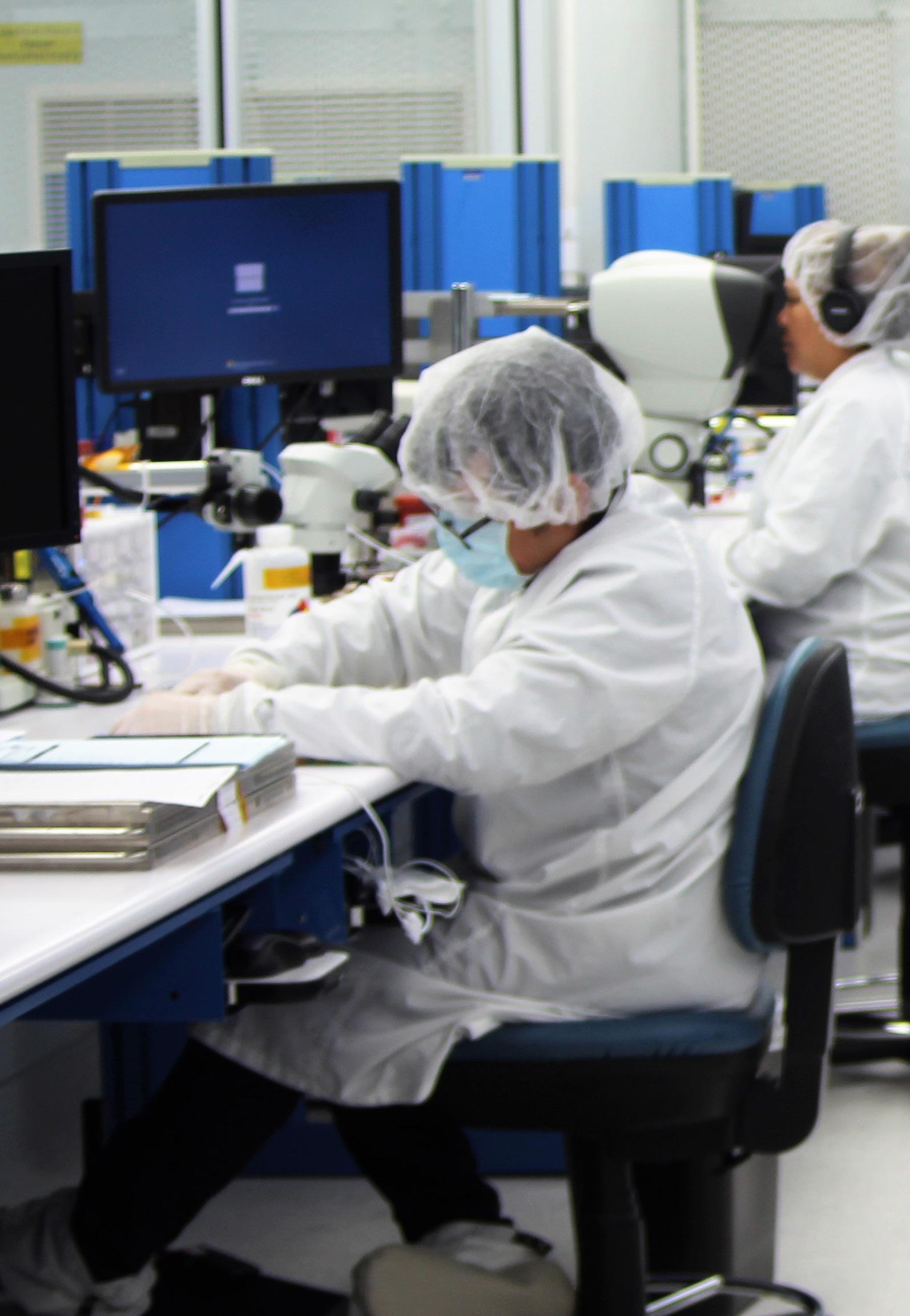
with success, the gain in credibility to the executive leaders opens new possibilities of challenging the status quo.
“Then, the coaching that procurement can provide to a cross-functional team can be very valuable, for example to speed up the implementation of a new design, giving the supplier a seat in this cross-functional team. The ‘new-gen buyer’ is now a mix of programme manager and marketing influencer, on top of the traditional skills of negotiations and strategic leadership.”
On one side of the value stream, it’s important for procurement executives to leverage the suppliers’ own market intelligence to predict the unexpected. Lesenechal thinks that all these risk assessments and information are very valuable intelligence that can be used at
the highest level of the company to orient the global strategy.
On the other side of the value stream, you have the customer, or ‘the user’. Here, too, there is a need to develop and quickly

“AS LONG AS WE STAY CLOSE TO THE PATIENTS, THE USERS AND THE CLINICIANS TO UNDERSTAND THEIR NEEDS AND TRANSLATE THEM INTO SPECIFICATIONS, THE MEDICAL DEVICE INDUSTRY WILL KEEP ITS HIGHPERFORMANCE STANDARD”
JÉRÔME LESENECHAL CHIEF PROCUREMENT OFFICER, LIVANOVA
reinforce the relationship with the company's sales organisation, and with the final user.

“You will collect amazing data (about competition, about new needs, new market insights etc) that can influence your procurement strategy,” says Lesenechal. “I can tell you that you behave very differently when you know that a hospital has been waiting months for oxygenators for children, or that your main competitor is not predictable with its delivery plan anymore”.
Another layer of complexity is for LivaNova to procure, and thereby provide, these critical medical services, whilst balancing that against its Net-Zero ambitions.
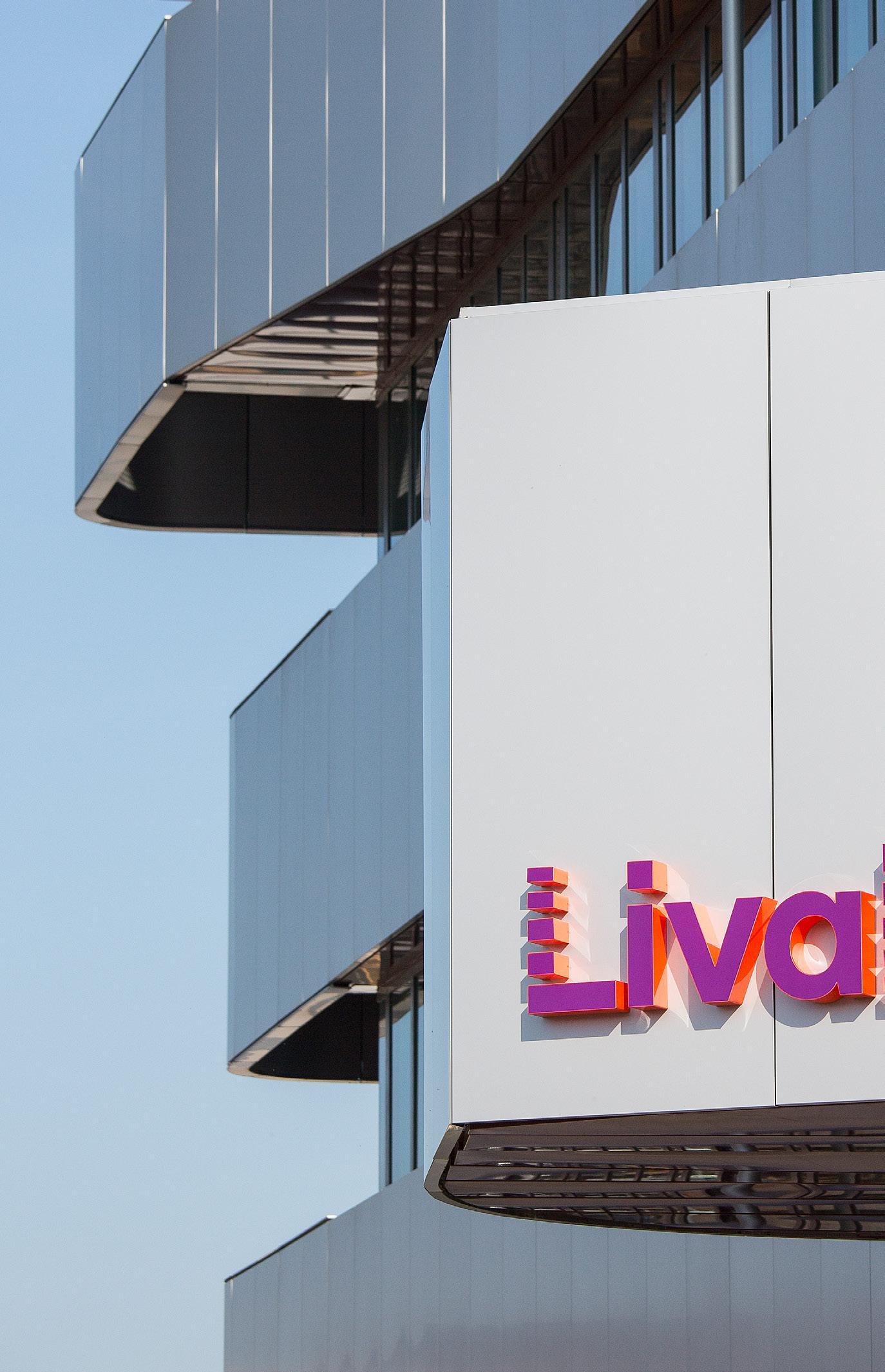
And procurement is not only screening the current state: LivaNova also includes ESG considerations in each decision, in collaboration with corporate leaders.
Suppliers represent a large portion of their products’ bill of materials (BoM), and their customers also rely on them to control supplier engagements.
LivaNova’s next step will be to set up targets together with their suppliers internally, (travel, company cars, etc) for the commodities that are under management by procurement.
Continuous improvement on processes such as logistics can also help considerably. Redesigning the packaging, revisiting the supplier’s footprint to avoid long lead-time logistics – every decision can decrease the carbon emission of their sourcing activities and make their BoM more compliant with new and emerging regulations.
“FOR THOSE WHO WERE ABLE TO NAVIGATE ACROSS THE 2020-2022 PERIOD WITH SUCCESS, THE GAIN IN CREDIBILITY TO THE EXECUTIVE LEADERS OPENS NEW POSSIBILITIES OF CHALLENGING THE STATUS QUO”
Customers are prepared to reward companies that make ESG a central part of their mission.
“Procurement needs to act in a similar way and award business to the best suppliers in ESG,” says Lesenechal. “I believe that selecting a supplier with a very good rating can lead to better business for LivaNova and make us even more competitive in tenders.
“Given the way we need to balance deviations with additional action items to put us back on track, it’s easy to see why procurement needs to develop the right battle plan with stakeholders and suppliers.”
LivaNova’s partnership with Teguar LivaNova’s partnerships are crucial to helping them achieve their goals. One of their main partners is Teguar, an industrial and medical computer company.
Jonathan Staub (CEO of Teguar) and Lesenechal have been working very closely for many years to drive a new development.
The collaboration keeps LivaNova’s configuration as standard as possible, both to contain costs and to ensure the right design-to-source.
Lesenechal says: “There is no way that LivaNova or Teguar can influence market trends in consumer goods technology like laptops, but, together with the cross-functional team, we were able to limit customisation and other exotic specifications. This leads to better profitability on both sides, as well as better material availability for the sub-components.
“I need here to underline the great collaboration with our marketing and our programme management. Our team always managed the relationship with a dynamic and constructive approach.
“On its side, Teguar always challenged our requirements and design changes in the right way – and this is exactly what I expect from all my suppliers – helping us to bring to the market a product that will be sustainable both in terms of supply and costs of goods.”
Lesenechal is confident that LivaNova´s pipeline will match with customers’ expectations. “As long as we stay close to the patients, to the users and to the clinicians in order to understand their needs and translate it into specifications, the medical device industry will keep its high-performance standard.”
LivaNova’s products and therapies are used worldwide. With a presence in more than 100 countries, their team of approximately 3,000 talented people works to improve and sustain patients’ quality of life each and every single day.
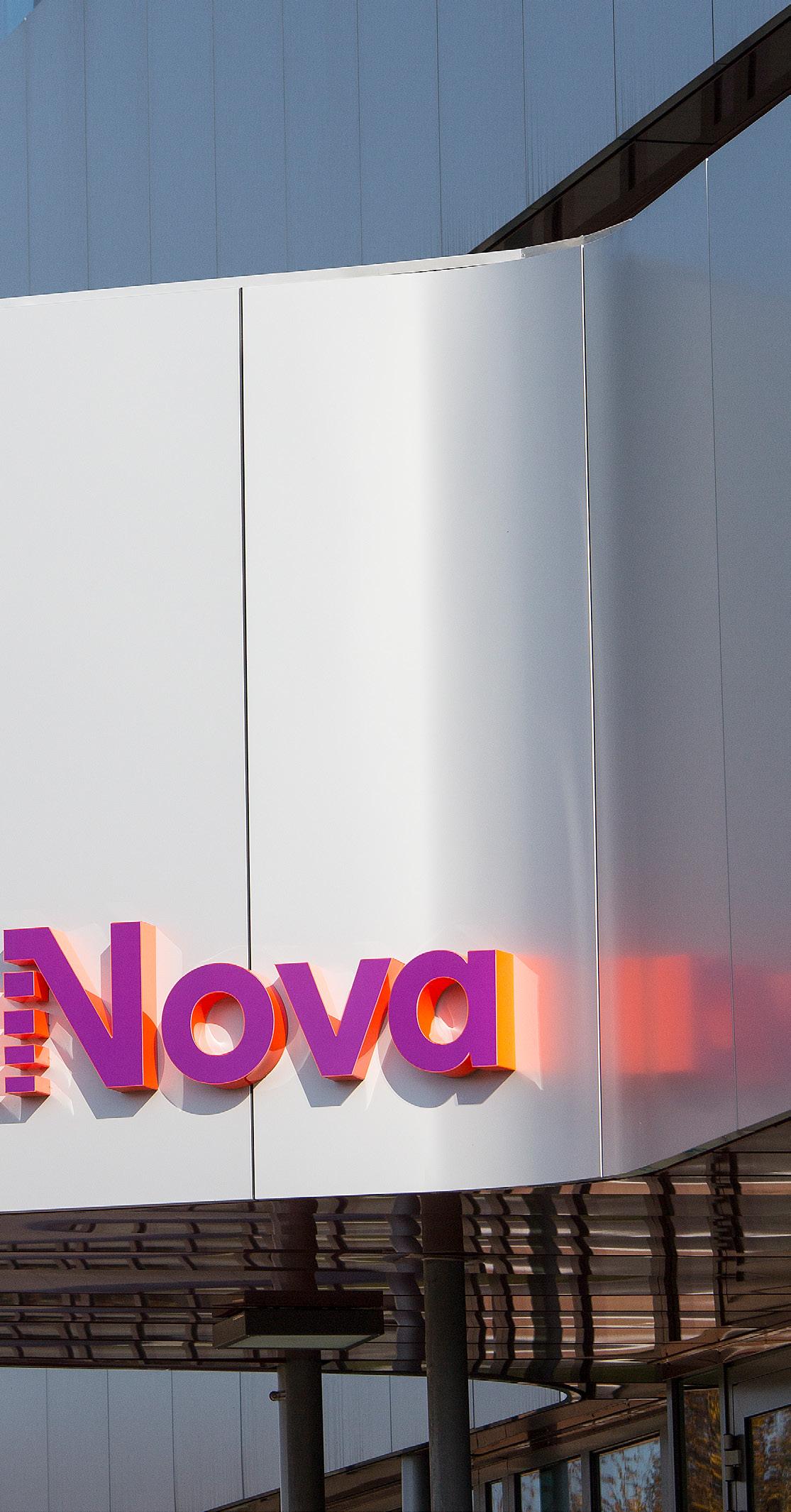

Orienting to the future, Lesenechal says: “I believe the supply chain disruptions will remain my biggest focus in 2023, especially in electronics, costs containment and logistics management.
“We will continue our transformation of the replenishment process, and reinforce our partnerships with our strategic suppliers further. More than ever before, the integration of our suppliers into the company's strategy can make a difference in the design of sustainable products that fit with the market's expectations and in remaining predictable in lead-times despite all the headwinds.
“The last discussion I had some weeks ago with perfusionists and scientists from Belgium convinced me that these are procurement´s main missions for the near future. I am confident that LivaNova´s pipeline will match with customers’ expectations. As long as we stay close to the patients, to the users and to the clinicians in order to understand their needs and translate them into specifications, the medical device industry will keep its highperformance standard.”

 JÉRÔME LESENECHAL
JÉRÔME LESENECHAL
Major changes in technology, as well as the industry as a whole, are opening doors for important transformations.
In closing, Lesenechal says: “Areas we expect to grow or continue to grow in importance in the Medical Device industry are: 1) direct-toconsumer engagement, which has been a key for pharmaceuticals for years, but is just starting to gain traction in our market; 2) a continued shift toward less invasive/wearable diagnostics that can be used in the home setting; 3) better connectivity between implantable devices and patients and physicians with apps and the cloud; 4) more effective ways to meet with and train physicians remotely, including the use of AR/ VR technology; and 5) a continued shift toward more investment in clinical evidence to drive awareness, adoption and reimbursement”

“WHAT
CHIEF PROCUREMENT OFFICER, LIVANOVA
 WRITTEN BY: SEAN ASHCROFT
WRITTEN BY: SEAN ASHCROFT
Supply chains are targeted by cybercriminals for 'back door' attacks on global brands. Here are 10 leading cybersecurity companies keeping supply secure
Cybersecurity is near the top of most CIOs’ list of priorities. Supply chains often comprise thousands of vendors, many of which might be vulnerable. Hackers often target such vendors as a means of insinuating their way downstream or upstream into a multinational company, who is their ultimate target – the so-called backdoor attack.

Zscaler provides enterprises with a cloud-based security platform built on zero trust principles. Zscaler mainly caters to U.S.based enterprises with 10,000 or more employees. Recently, the company showcased security detection capabilities available through its Zero Trust Exchange cloud security platform and the CrowdStrike eXtended detection and response (XDR) platform - helping customers correlate security data from multiple sources to identify new indicators of compromise (IoCs) and suspicious signals that show cyberattacks may be underway.
VMware was founded 20 years ago, and is a leading provider of multi-cloud services for all apps, enabling digital innovation with enterprise control. Headquartered in Palo Alto, California, VMware is committed to building a better future through the company’s 2030 Agenda.

The company acquired CloudHealth in 2018 and expanded it in 2019 to provide deeper integration with VMware workloads, alongside public cloud. CloudHealth provides cloud governance features to help organisations align security and regulatory compliance.



Born in Jeff Bezos’ humble garage, Amazon – like Alibaba in China –helps entrepreneurs sell to online shoppers.
The company is now striving to build resilience into its supply chain by predicting disruptive factors and events, such as extreme weather cycles, via technology. Its forecasting programmes are enabled through a partnership with Oracle Supply Chain. What’s more, Amazon continues to expand its private fleet of long-haul and lastmile delivery trucks, reducing its reliance on UPS and FedEx.
Crowdstrike provides cloudnative endpoint protection software. Its platform, Falcon, goes beyond simple threat detection by automatically investigating anomalies removing the guesswork from threat analysis. Crowdstrike counts three of the 10 largest global companies by revenue among its clients. The company was founded in 2011 and is headquartered in Austin, Texas.

Powered by the CrowdStrike Security Cloud, the CrowdStrike Falcon Platform leverages realtime indicators of attack and threat intelligence to deliver hyperaccurate detections, automated protection and remediation.



Join us at Join us at Procurement & Supply Chain Procurement & Supply Chain Live in London Live in London.








Cisco is a software development company that offers its own security platform, SecureX. This cloud-native platform includes XDR capabilities and integrates the Cisco Secure portfolio with its customers’ security infrastructure, speeding detection, response, and recovery.




It delivers a consistent, built-in experience across customers’ products, giving them unified visibility, intuitive automation, and robust security for their entire security portfolio. Cisco Secure enables customers to defend against threats and safeguard the most vital aspects of business with security resilience.
Trend Micro is a leader in cloud and enterprise cybersecurity. It has around 7,000 employees across 65 countries, with its cyber security platform protecting 500,000+ organisations and 250+ million individuals across clouds, networks, devices, and endpoints. The platform delivers central visibility for improved detection and response, with a powerful range of advanced threat defence techniques optimised for environments like AWS, Microsoft, and Google. Trend Micro is driven by decades of security expertise, global threat research, and continuous innovation.

AI-based Darktrace has the ability to interrupt in-progress cyber attacks with its technology. It can fight against attacks including ransomware, email phishing and threats to cloud environments and critical infrastructure. The company has over 6,500 customers worldwide that rely on Darktrace’s digital immune system to avoid cyber disruptions.
Darktrace, founded in 2013, applies Self-Learning AI to enable machines to understand the business in order to autonomously defend it. The company is also headquartered in Cambridge, UK, with 1,700 employees and over 30 offices worldwide.




CyberArk is a global leader in identity security. In 1999, CEO Udi Mokady introduced a patented digital vault technology, the company provides a comprehensive security offering for any identity – human or machine – across business applications, distributed workforces, hybrid cloud workloads and throughout the DevOps lifecycle.
CyberArk has gone on to lead the market in securing enterprises against cyber attacks that take cover behind insider privileges and attack critical enterprise assets. The company delivers innovative security solutions that help leaders become more proactive to cyber attacks.
Headquartered in San Jose, CA, the McAfee Corporation is an American global computer security software company. Purchased by Intel in February 2011 to become part of its Intel Security division, McAfee is a worldwide leader in online protection. Its key attributes are to focus on protecting people, not their devices. The cybersecurity business boasts over 108 million customers in 182 countries worldwide.
McAfee’s suite of products include its antivirus software, which can be used to scan PCs for viruses and protect them in realtime detecting all kinds of malware, such as ransomware, spyware, adware and more.

With cloud-native data protection from McAfee Skyhigh Security Cloud and threat defence from McAfee Cloud Workload Security, customers can transform cloud risk into business acceleration. The company’s cyber solutions are designed to integrate threat defence across devices, IT infrastructure and the cloud.

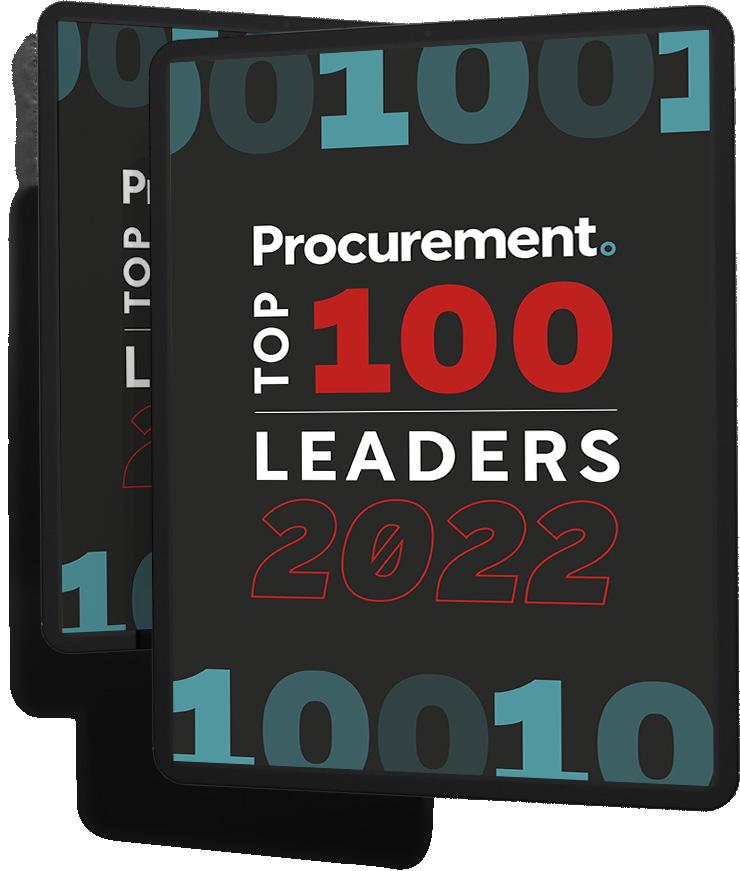





With its headquarters in Santa Clara, Palo Alto Networks is an American multinational cybersecurity firm . Its platform includes advanced firewalls and cloud-based offerings that extend those firewalls to cover other aspects of security. Created in 2005, it today boasts over 85,000 worldwide customers in more than 150 countries. Its mission is to be the cyber security partner of choice, protecting our digital way of life. By delivering an integrated platform and empowering a growing ecosystem of partners, the company protects tens of thousands of organisations across clouds, networks, and mobile devices. Palo Alto’s technology enables customers to secure any cloud, automate security operations, stop zero-data threats in zero time and secure hybrid workforces.

“Its mission is to be the cyber security partner of choice, protecting our digital way of life”

 WRITTEN BY: TOM SWALLOW
PRODUCED BY: CRAIG KILLINGBACK
WRITTEN BY: TOM SWALLOW
PRODUCED BY: CRAIG KILLINGBACK
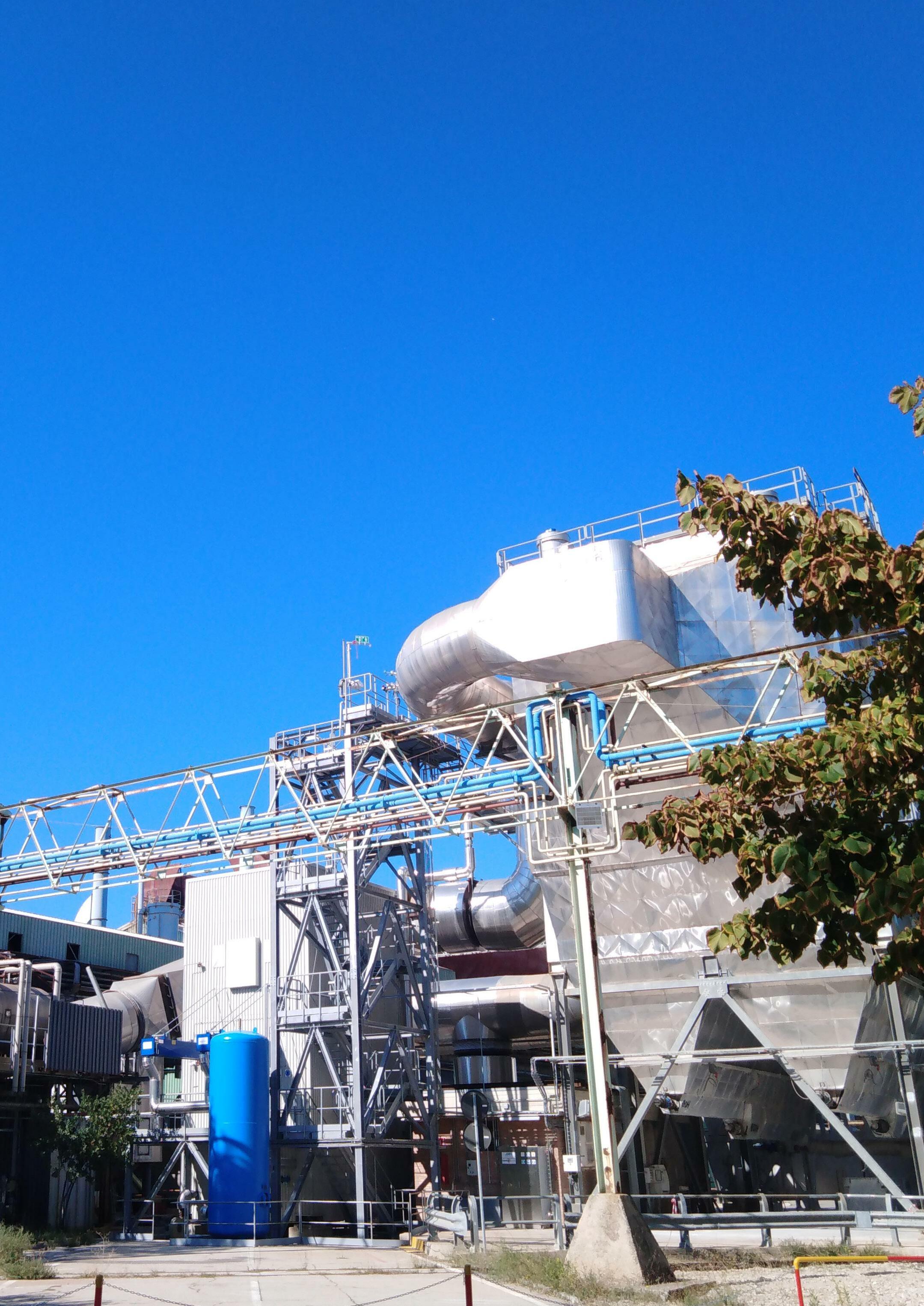

John Wilgar, Chief Procurement Officer at NSG Group, talks about the fundamental changes the company is making to its procurement function to become more diverse and sustainable
What exactly is so exciting about glass? Well, apart from being one of the most versatile materials on the planet, it links to any and every industry you can think of. From the windows of a house, skyscraper or aircraft to protecting drivers under a transparent umbrella that screens them from the elements, glass is pretty much everywhere in some form or another.
As an integral component of innovation in the 21st Century, glass is also key in facilitating some of the major technological shifts that require devices like phones, tablets, computers, and even safety cameras mounted to the inside of vehicles behind the car windscreen.
With innovation more widespread, the industry is scaling up growth while reducing its environmental and social impact, contributing to all innovative processes in between to ensure that materials are fit for a more sustainable future of construction, technology, and automotive manufacturing and, quite frankly, any industry.
Somewhat ironically, glass must be transparent, and the same must be said when sourcing materials, particularly in terms of sustainability. As far as sourcing goes, sustainability doesn’t come without

understanding the impacts of the industry and, more importantly, how to fix them.
This is what was learned by John Wilgar, Chief Procurement Officer at NSG Group, who leads the procurement function of the business and is committed to sustainable change, adopting all necessary technologies to do so.
Founded towards the end of the First World War in 1918, NSG Group is one of the world’s largest manufacturers of glass and glazing products for the automotive, construction, and electronics industries— priding itself on this fact, in addition to being one of the major suppliers of glass to cars across the globe.
Part of the Sumitomo Group, NSG is becoming more invested in the development of glass products to meet the growing demand of the renewable energy sector, especially that of the solar energy network.

Another of the major trends supported by the organisation is the shift to electric mobility (e-mobility), which sees companies adopting more and more technological
JOHN“SUPPLIERS LIKE SHELL ARE REALLY KEY IN ENABLING SOME OF OUR IMPORTANT PROJECTS AND ARE ALSO ABLE TO HELP US SCALE THESE ACTIONS”
WILGAR CHIEF PROCUREMENT OFFICER, NSG GROUP
solutions to reap the benefits of an allelectric power system that’s capable of supporting more advanced solutions housed behind transparent glass windscreens.
The transformation of NSG starts with the programme named ‘Shape to Shine’. Beginning back in late-2020, the initiative is partly a response to the knowledge gained from COVID-19 and other disruptions.
As Wilgar explains: “The ‘Shape’ phase lasted around 18 months and, towards the end of that period, we began to focus more on the ‘Shine’ agenda, which is about asking ‘How can NSG contribute to a more positive future?’.”
This led to the organisation’s current strategy for procurement, which is governed by the core values of the business. A digitalfirst approach enables the company to instil its values.
“We began to establish a really clear and cohesive strategy for digital transformation to aid procurement in the company,” says Wilgar. “We’re evaluating how to get more from the digital tools we have today, such as SAP Ariba, but also looking for new tools that can support us in areas like supplier connectivity or supplier risk management.”
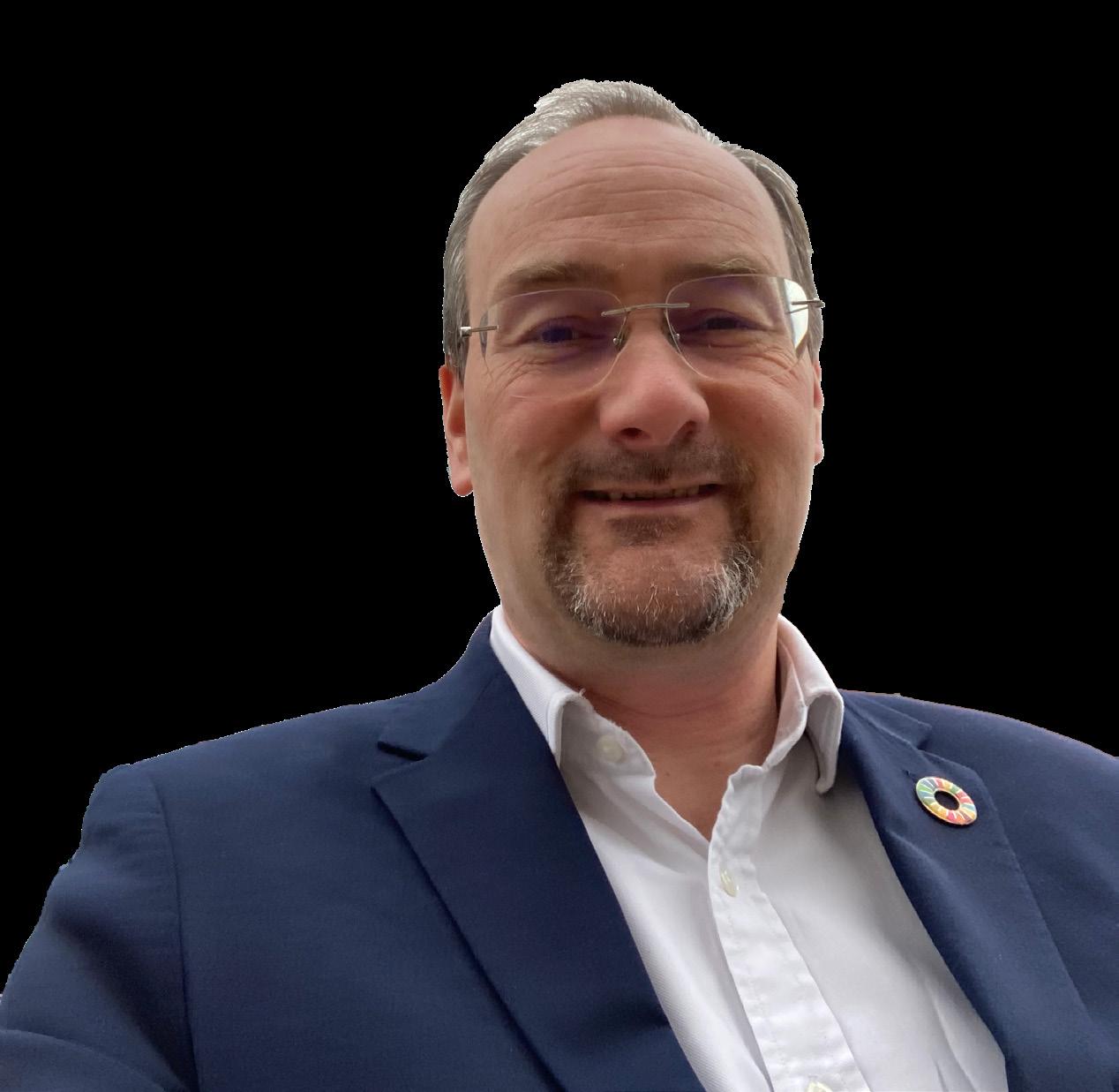
Secondly, NSG’s procurement team is looking at its operational approach, which is traditionally driven by a set procurement matrix, to provide greater opportunities to optimise its processes through standardisation and centralised procure-topay (P2P) activities.
“We centralised those, more than 10 years ago, into shared service centres, but we believe there is scope to improve other processes, such as sourcing, category management, and supply risk management,”
TITLE: CHIEF PROCUREMENT OFFICER
INDUSTRY: GLASS, CERAMICS AND CONCRETE
LOCATION: LIVERPOOL, UK
Wilgar has worked for Pilkington plc and NSG Group for twenty years, joining the group in 2003 as Head of Automotive Procurement in Europe. Prior to that, John held a number of procurement roles in General Motors, working closely with GM partners such as Isuzu, Renault, and Fiat.
Since 2003, Wilgar has held various roles in capital procurement, direct materials, indirect materials & services, energy, supplier development and process & systems.
John is passionate about enabling people to reach their full potential and about sustainability.
Wilgar originates from Ireland, is married to Jo with three grown up children—Owain, Niamh, and Rhys.


For businesses balancing continuity with decarbonisation goals, having a dependable and flexible energy partner has never been more important. That’s why Shell Energy is working with customers to meet the energy challenges of today, while investing in the energy solutions of tomorrow.
For businesses balancing continuity with decarbonisation goals, having a dependable and flexible energy partner has never been more important. That’s why Shell Energy is working with customers to meet the energy challenges of today, while investing in the energy solutions of tomorrow.
Shell Energy provides solutions tailored to the needs of businesses across a wide range of industries. These include the reliable delivery of gas, power and renewable energy, as well as carbon credits to help compensate for emissions.
Shell Energy provides solutions tailored to the needs of businesses across a wide range of industries. These include the reliable delivery of gas, power and renewable energy, as well as carbon credits to help compensate for emissions.
In Europe, Shell Energy is working with thousands of companies to meet their energy needs competitively, while helping guide them through the energy transition. This means powering their business in a way that is more resilient, as well as helping them reduce their carbon emissions.
In Europe, Shell Energy is working with thousands of companies to meet their energy needs competitively, while helping guide them through the energy transition. This means powering their business in a way that is more resilient, as well as helping them reduce their carbon emissions.
“We’re delighted to add NSG Group to a customer portfolio that includes global brands and national local businesses,” says Giorgia Arnaboldi, Senior General Manager B2B for Shell Energy in Europe.
“We’re delighted to add NSG Group to a customer portfolio that includes global brands and national local businesses,” says Giorgia Arnaboldi, Senior General Manager B2B for Shell Energy in Europe.
A deal to supply NSG Group with natural gas is an example of how working together on one solution can unlock new opportunities. NSG Group manufactures glass which, among other things, goes into the manufacturing process of photovoltaic panels used by solar power developer Silicon Ranch, of which Shell is the majority shareholder.
A deal to supply NSG Group with natural gas is an example of how working together on one solution can unlock new opportunities. NSG Group manufactures glass which, among other things, goes into the manufacturing process of photovoltaic panels used by solar power developer Silicon Ranch, of which Shell is the majority shareholder.
“It means the natural gas we supply to NSG Group in Italy is part of a bigger picture, which ultimately supports the generation of renewable solar power in the US market,” explains Giorgia. “It’s a perfect example of how one collaboration and one solution can lead to another.”
“It means the natural gas we supply to NSG Group in Italy is part of a bigger picture, which ultimately supports the generation of renewable solar power in the US market,” explains Giorgia. “It’s a perfect example of how one collaboration and one solution can lead to another.”

“We
as renewable electricity and alternative/low carbon fuels. NSG Group is increasingly turning to our supply partners to support our decarbonisation efforts and we are excited to work closely with Shell Energy as part of this strategy.”
as renewable electricity and alternative/low carbon fuels. NSG Group is increasingly turning to our supply partners to support our decarbonisation efforts and we are excited to work closely with Shell Energy as part of this strategy.”
John Wilgar, Chief Procurement Officer at NSG Group John Wilgar, Chief Procurement Officer at NSG GroupTo learn more watch the video or click
To learn more watch the video or click
Watch interview with Giorgia Arnaboldi, Senior General Manager B2B for Shell Energy in Europe“We believe this is an important platform to establish further opportunities together in areas such
believe this is an important platform to establish further opportunities together in areas such
says Wilgar. “I envisage centres of excellence for these processes in the near future.”
A further area NSG is acting upon is the physical footprint of the organisation. When looking at emissions reduction, the procurement team is tasked with indirect procurement functions to reduce realestate footprint and emissions, which results in the shift of premises globally and most likely a reduction as teams work more from home.

“In procurement, we are progressively changing our offices around the world to be more suitable for hybrid working and space efficiency,” says Wilgar.
This is also helped by NSG’s commitment to the Science-Based Targets initiative (SBTi), allowing the company to drill down into its Scope 3 emissions to meet rigorous sustainability milestones.
“We have a target to reduce our overall emissions 30% by the year 2030 and reach carbon neutrality by 2050 – importantly this includes Scope 3 emissions in our supply chain. We launched a sustainable supply
chain programme earlier this year, and this will help us address the Scope 3 challenge, but it doesn’t end with carbon reduction,” says Wilgar.
“We are also looking at the environmental impact of our suppliers, what they are doing to address waste and water consumption, and their actions on human rights.”
Wilgar also addresses the importance of personnel as a key pillar in sustainable digital transformation, noting that diversity, equity, and inclusion (DEI) plays a critical role in driving forward transformation and hitting its targets. Although diversity is a critical aspect of human resources from a social perspective, it is also something he has to
OF OUR SUPPLY BASE—AS AN ICEBERG”
consider when training or upskilling staff in a digital world.
“It’s really about creating the conditions for our people to realise their full potential and promote a fully diverse, inclusive workforce in procurement,” Wilgar says. “For example, we implemented a female focus group to help us understand the barriers for women to progress to top positions in the function.”

“We’ve been expanding our mentoring and trainer training programmes, including things like mental resilience to support our people through very difficult and challenging periods. We also make sure each person in procurement has a personal development plan.”
Today, around a third of our global Procurement team are women with around a quarter in management positions. This has to change—a more diverse team will better reflect the world we live and operate in and enable us to bring more and better ideas forward”
One of the points discussed with Wilgar— one that rears its head in many sustainability discussions—is around cost. At an integral point of the supply chain, much of the precedence is taken by cost optimisation and ensuring viability of products from a financial standpoint. But, as sustainability is often a costly shift to make, it’s interesting to see how businesses like NSG are able to transition to new and greener pastures,
particularly when, like NSG, 50% of spend is tied in the upstream supply chain.
One of the important activities that Wilgar must undertake is foresight; seeing the costs and understanding the wider global implications of the company’s sustainability agenda.
“I try to visualise the impact and value of procurement and of our supply base as an iceberg: the traditional financial measures are clearly visible above the waterline, but

increasingly, the greater part of this impact and value is below it,” says Wilgar.
“In other areas like supplier innovation, speed-to-market risk management, and sustainability, suppliers—both current and new—will contribute greatly to these new aspects of value creation for the company.”
This is where he highlights Shell Energy as a key partner in the activities at NSG. Shell Energy is a key enabler of the company’s targets and broadening its scope for other aspects, such as energy security and carbon reduction.
Specifically, NSG has been working to introduce alternative fuels such as hydrogen that will power the production of glass as well as biofuels as drop-in replacements for their fossil fuel counterparts. It is in areas such as these that partners like Shell can help NSG accelerate on its path to decarbonisation.

“Suppliers like Shell are really key in enabling some of our important projects, bringing technical capability and in some cases financing. They are also able to help
us scale these actions on a global stage to realise our potential in different regions,” says Wilgar.
“We’re very pleased to be working with them initially in Europe, but hopefully in other regions in the future. Shell is a company that shares our core values for doing business in an ethical way and contributing to the communities in which they work.”
With many fruitful years to come, NSG will delve further into the capabilities of technology for streamlining procurement, allowing the team to take a more strategic approach to sourcing sustainable alternatives, and adhering to its SBTis.
Growing the team and the technology it uses will allow NSG’s procurement colleagues to specialise in certain areas of the business to establish a much higher level procurement function and take the helm on further strategic processes like category management, risk management and mitigation, sustainable sourcing, and so on.
“It’s also my goal that the makeup of our procurement function is much more diverse than it is today. Not only in terms of gender, but in other aspects, such as ethnicity, sexual orientation, or importantly, diversity of thought,” says Wilgar. “Today, around a third
“WE CENTRALISED PROCURE TO PAY ACTIVITIES MORE THAN 10 YEARS AGO INTO SHARED SERVICE CENTRES, BUT WE BELIEVE THERE IS SCOPE TO IMPROVE OTHER PROCESSES”
of our global Procurement team are women with around a quarter in management positions. This has to change – a more diverse team will better reflect the world we live and operate in and enable us to bring more and better ideas forward”
JOHN WILGAR CHIEF PROCUREMENT OFFICER, NSG GROUP“The same principles apply to our supply base. My hope is that the impact and value of procurement—and, indeed, our supply base—is measured more in terms of those below the waterline activities and less on the purely traditional financial measures.”
This holistic view of sustainability in procurement will allow NSG to address all areas, from environmental impacts through technical innovation in the industry to meeting social needs both at work and beyond.
With the automotive industry ingrained into him, Wilgar fully appreciates the pressures that lie ahead, but is also excited for the e-mobility revolution, which will provide more challenges and opportunities for NSG. Electrification has become a testbed for technology that ties in with the demand for a supplier of both theoretical and physical transparency.
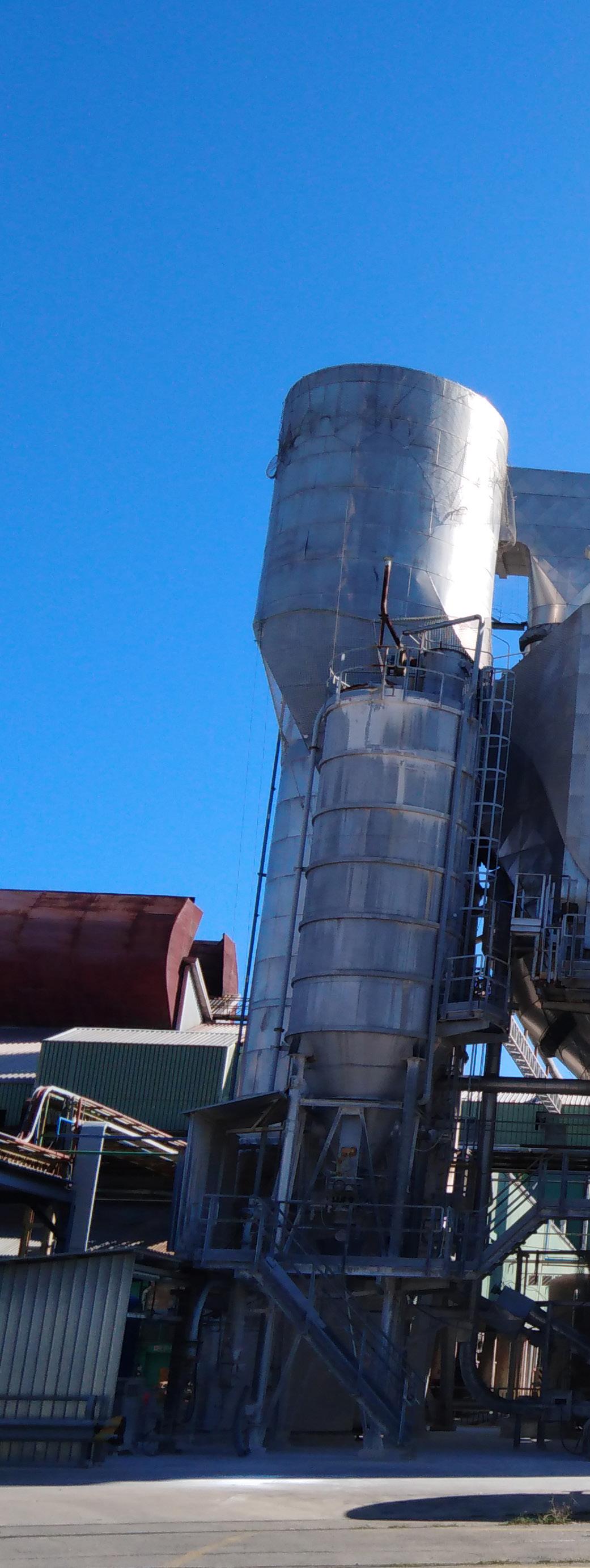
“WE’RE EVALUATING HOW TO GET MORE FROM THE DIGITAL TOOLS WE HAVE TODAY, SUCH AS SAP ARIBA”
Almost half of NSG Group’s total carbon emissions are in the supply chain. To achieve its Science-Based targets NSG must engage fully across the entire value chain.
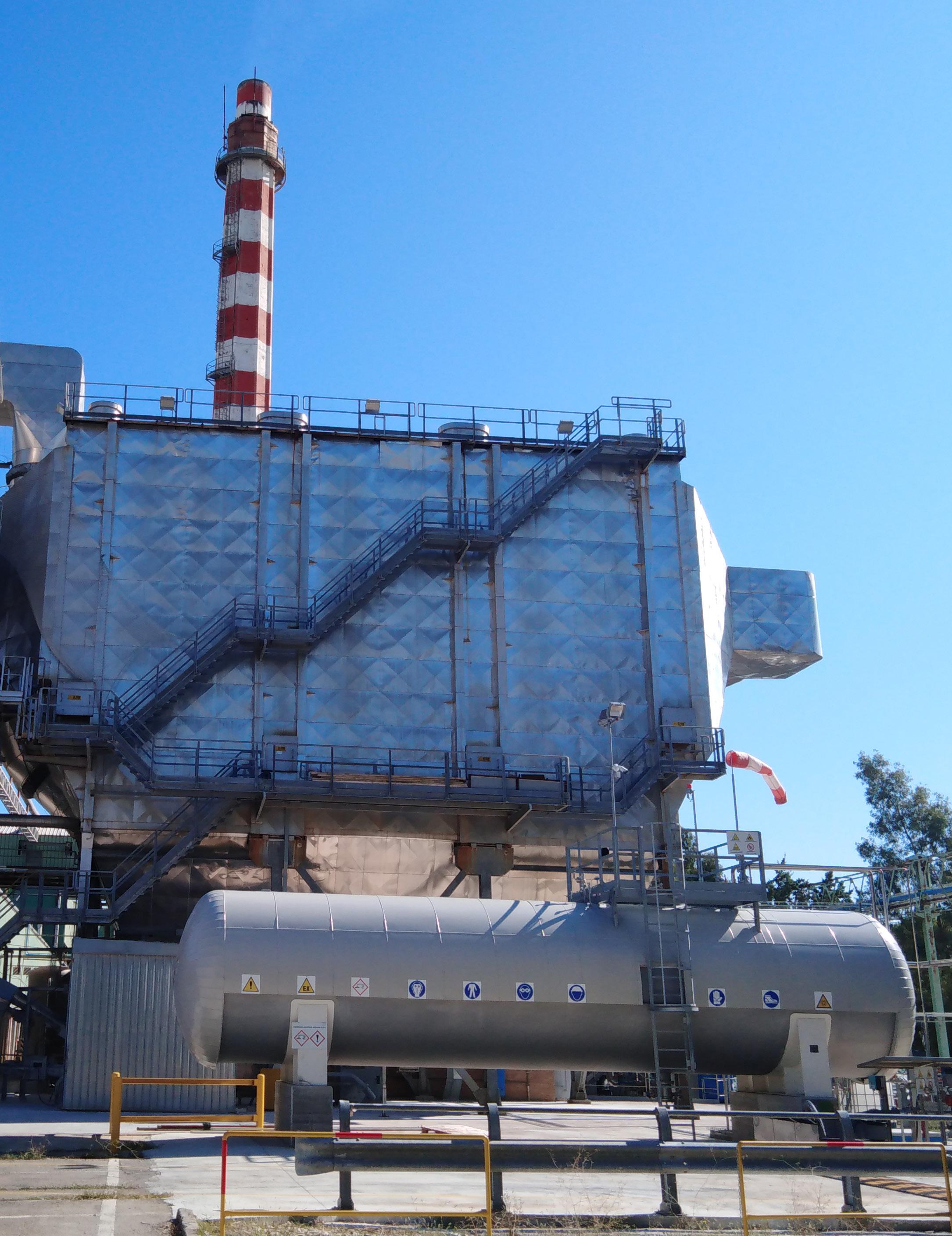

 WRITTEN BY: TOM SWALLOW
PRODUCED BY: KRISTOFER PALMER
WRITTEN BY: TOM SWALLOW
PRODUCED BY: KRISTOFER PALMER
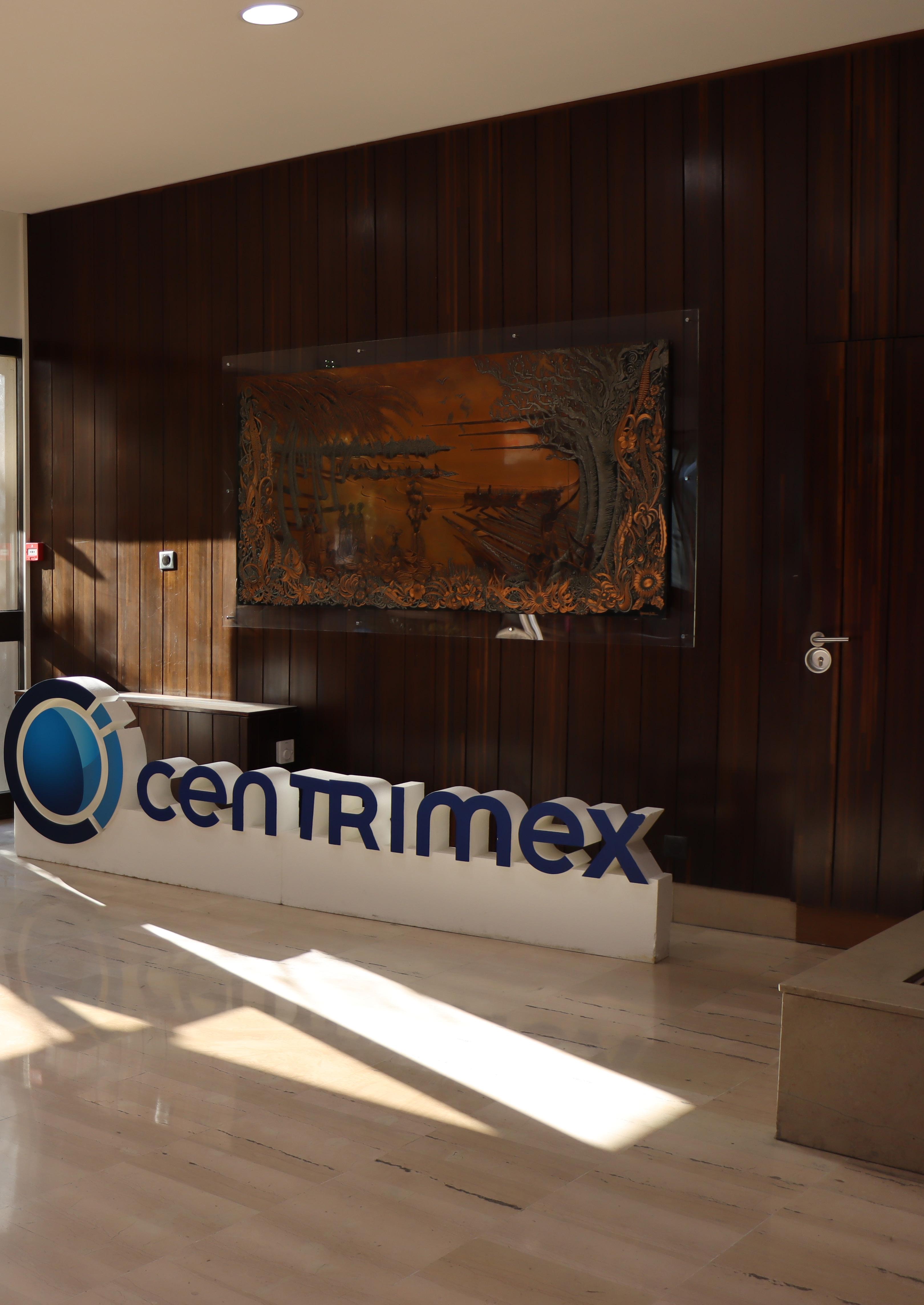
It’s safe to say that, if supply chain firms were leveraging the capabilities they have today, the process of change would be made that much simpler. In fact, it would allow businesses to positively thrive among adverse circumstances and come out stronger, faster.
Planning contingencies is no easy task, and one that’s often required at short notice — yet it’s where the use of real-time data really shines. The ability to track shipments and foresee disruption is a luxury that’s used at Centrimex, a freight-forwarding organisation that is committed to great service through dedication to even better visibility.
The company’s vision is to provide high quality services adapted to the customers’ needs, at the right price, and with a seamless experience to the customer. But, in an environment where disruption is rife, Alexia Schmitt, Chief Transformation and Information Officer at Centrimex, has a critical role to play. This particular role is responsible for getting goods from point A to point B by maintaining visibility — visibility that is driven by real-time data.
The aim of the business is to manage clients’ freight, from the shipping process to all of the documentation and processes required to ensure that goods are able to cross borders.
“The core mission is to manage services around the whole transportation process, with the best level of service for the customers,” says Schmitt. “This means

Driven by data, visibility is a key part of the Centrimex approach to customer experience and creating a more collaborative working environment

bringing the expertise on geographical areas to customers, as well as the specific requirements for documentation or declarations that requires know-how and experience to meet specific and legal obligations.”
As the company continues to grow and offer exceptional freight-forwarding services, this starts with customer focus — ensuring that clients receive the best possible service throughout the shipping process and maintain confidence in the business.
“The first step is to understand the customer’s expectations. This is something that the company has been working on over the last two years through customer surveys and interviews with a sample of customers,” says Schmitt. “More than a hundred customers were individually interviewed so we could better understand what is important to them, because, despite working with our customers on a daily basis,
ALEXIA SCHMITT CHIEF TRANSFORMATION & INFORMATION OFFICER, CENTRIMEXit's important to know exactly what the key criteria are for them to trust a freight forwarder.
“Understanding the customer expectations is a step we’ve achieved and allows us to deliver the best customer experience.”
Throughout the survey process, Centrimex was able to gain key information from its customers, which raised the issue of ‘time-toanswer’ — basically meaning customers were in need of much faster communications on a consistent basis.

“
When I joined Centrimex, the knowledge and the use of data was very basic”

LOCATION: FRANCE
Graduating from an engineering school in agronomy, Alexia Schmitt started her career in manufacturing, then the supply chain area, where she acted as a consultant, managing different projects in various companies and business areas. After eight years, she took the opportunity to move to an IT role, first in the Soft Drinks industry, then in the Cosmetics and retail area, where she undertook several IT management positions over almost 15 years.
2.5 years ago, she joined Centrimex to embrace a launch and steer the Digital Transformation of the Company.

Ingenia develops a specific approach using coaching tools to determine clear objectives and accurate data that bring value to your business.


“Pain points of the shipping process raised by our customers are related to the time it takes to receive a response to a request,” she says. “For example, when a new quote is requested by our customer, the first criteria is to get the answer quickly.”
“If we take two days or three days to answer, it’s no good for the customer. So time is a key focus in the sales process. That's the reason we've been working to understand customer data and, through a specific project, we consolidate customer data into our database.”
Thanks to its in-depth customer research, Centrimex has been able to consolidate and better-use data to be more proactive for its clients. In freight-forwarding, the company
was able to address the time it takes clients to receive updates on their freight, achieving this by providing them with technology that could do just that.
Combatting a lack of visibility and the time to access it was the reason behind Centrimex’s tracking solution: Click & Track.
“We’ve focused on these two pain points over the last two years to deliver services around that,” says Schmitt. “That was an important initiative, which then facilitated the use of the tracking solution.”
“The Click & Track service provides alerts on the possible issues during a shipment — both to the customer but also to our teams. When an issue arises, there are situations where you can find alternatives or options to fix the problem with the shipping line,” she explains.
Click & Track services have been revolutionary for the company. Not only does it provide solutions to its customers’ needs, the business can also leverage data to ensure that
it reaches any potential concerns before the client and come up with alternatives at a faster rate.
“The Click & Track service answers customer expectations on visibility, sending notifications at the key steps of the shipment but also — similar to Amazon’s approach — they receive a link to a webpage where they can follow the different steps of the journey of the shipment,” says Schmitt.
“The internal team also gets the alerts very quickly and works with the providers to fix the issues if possible. It's not possible in some cases, like that of the evergreen boat in the Suez Canal. But, in other cases, you can work with the shipping line to find solutions. This was really the purpose of the Click & Track service, which was launched more than a year ago and we’ve had very good feedback from the customers.”
Tracking goods is a way of leveraging real-time data from customers and their shipments, with further details from
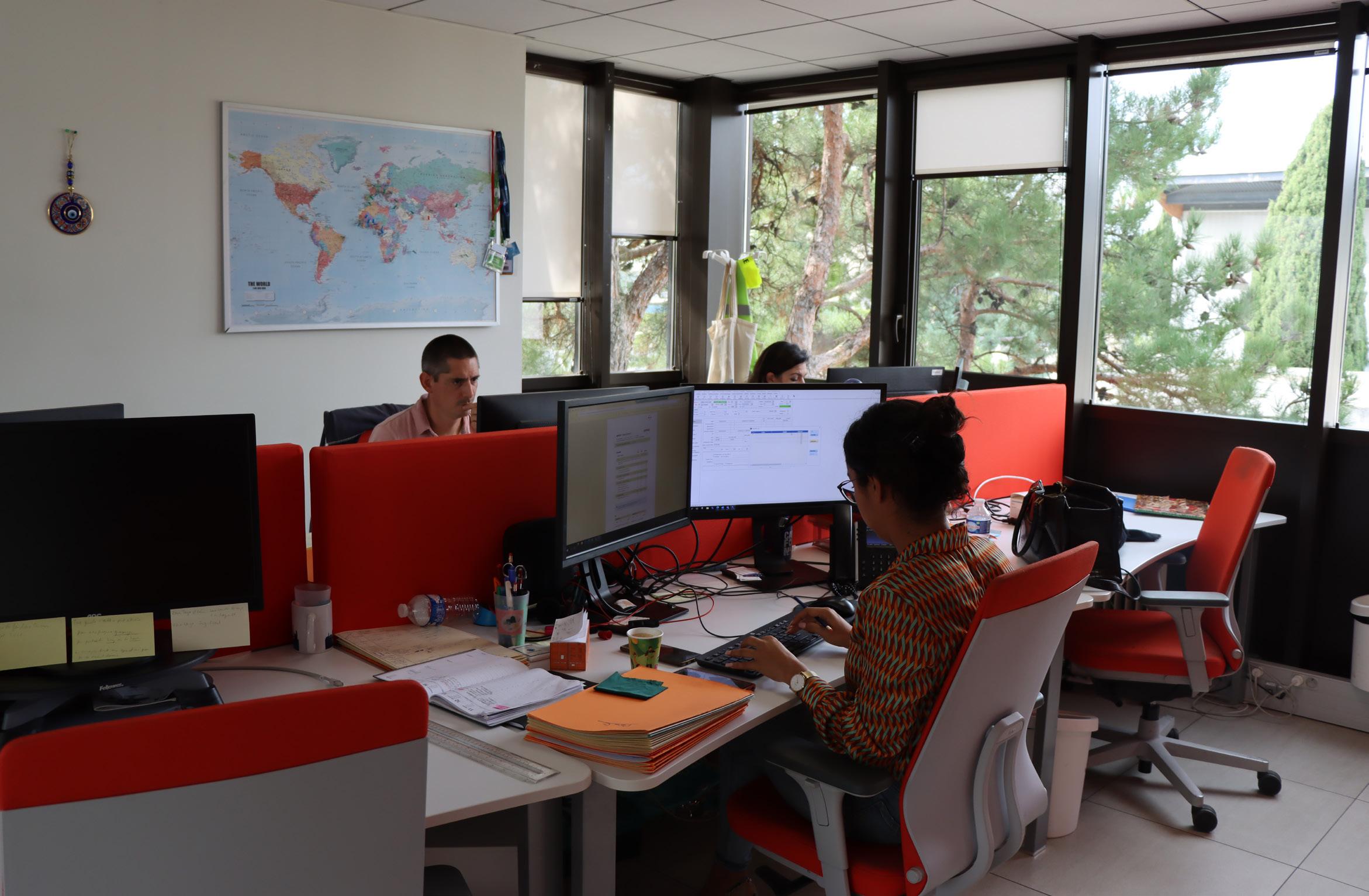
shipping lines to confirm the stage at which consignments are in the transit process. This is limited to downstream movements from the point of Centrimex’s interaction with goods, which covers the entire process from when products leave the warehouse to when they are received by the customer.
However, part of the success in managing downstream processes is related to managing upstream pre-departure of shipments.
“The Click & Track service will focus on the downstream—the journey itself. But, for the customer, it's important to get information for the upstream part. Say the shipment preparation is the booking, is it confirmed by the shipping line? Is there any delay in this booking? There are different steps to prepare the shipment before the goods are loaded on the ship,” says Schmitt.
“Through a collaborative platform, you can give visibility to the customer on these different steps. It's a very straight forward approach, we give the customer complete transparency to help build trust within our relationships. We are actually rolling outa wider collaborative platform allowing us to gain a global view of the shipment, upstream and downstream, including sharing documents easily with the customers.”
To ensure a successful journey for every consignment that goes through Centrimex, the company underwent its own transformation process, with one of the key components for a solution that meets its customers’ needs being data.
In just over two-and-a-half years, Schmitt has worked with the company to transition from minimal data usage to incorporating it into the wider strategy of the business; it’s effectively become part of Centrimex’s offering.


“When I joined Centrimex, the knowledge and the use of data was very basic. So the first task was to consolidate the data to get a better understanding of it. And we’ve improved customer data through the implementation of a CRM solution.” These developments were necessary for maintaining a watchful eye over all goods. Schmitt goes on to explain how access to key performance indicators (KPIs) is critical for personnel to support clients. As data becomes a more integral part of the business on a daily basis, it opens up even more doors for efficiency and customer satisfaction.
“We are able to see a 360-degree view of the customer. That means, when I visit a customer, I'm able to get all the data on them. What were the outcomes of the last visit? What are the KPIs with this customer? The data and invoicing situation? Well, any important customer KPI is available to us in order to deliver the best service.
“Globally speaking, we worked on consolidating it in a data warehouse to share the same KPIs among the company, givingall employees in the company access to their KPIs to improve their performance and develop their business.

“This was a very important project over the last two years. We still have much to do, but the first step is to know the data, and then to use the data for predictive input and analysis.”
To roll out the wider use of data, the company leaned on partners for the provision of those solutions that supported its strategy. INGENIA Consulting also supported the company’s transformation — a partnership previously formed by Schmitt in a past stage of her career.
“I had already worked with the INGENIA team, so I knew the company,” she says. “They are data experts-though it's a quite small company, they have developed and
maintained the knowledge and expertise on data technologies, such as Power BI or the ETL part which is crucial in the data scope.”
“Choosing the right solution partner is very key. We have partners that will support the implementation or the development of in-house solutions. To choose the right partner, they must have a good understanding of the challenge, working closely with our partners and our teams to gain that understanding.”
As the company moves forward, its efforts to consolidate data will continue, while more emphasis will be placed on visibility for both the clients and the Centrimex team. As the use of data becomes embedded in the business, it can look to automate processes to achieve a new level of speed and insight for its clients.
Schmitt, meanwhile, believes automation will free up more personnel to focus on future developments and reach a new stage of its transformation journey.
“We are introducing automation as much as possible where there’s no real value. This is really to focus the teams on the value rather than just recording data in a system. So, automation will be a major challenge for the next 12 to 18 months.”

ALEXIA SCHMITT CHIEF TRANSFORMATION & INFORMATION OFFICER, CENTRIMEX
“ The Click & Track service will focus on the downstream — the journey itself”




 WRITTEN BY: GEORGE HOPKIN
WRITTEN BY: GEORGE HOPKIN

There are some charitable institutions in the UK that feel as if they are part of the fabric of society. The Royal British Legion is one such institution.
From providing expert advice and guidance to recovery, through to transitioning to civilian life, the Royal British Legion provides a lifeline for serving personnel, veterans and their families, supporting them in the face of hardships, injuries and bereavements. The RBL is the champion of Remembrance and is, of course, well known for the annual Poppy Appeal and its emblem, the red poppy.
And behind the scenes, procurement plays an essential part in the RBL’s work, helping ensure the organisation manages supply chain risk while maximising value for money from donated funds.
Last year saw the RBL mark its 100th anniversary with events that cast light on its proud past, highlighting its preparedness for a second century of service in a centenary celebration that focused on the future, along with the challenges and contributions yet to come.
The RBL was born out of the First World War, when four organisations came together to fight injustices and financial hardship faced by those returning home after service.
Founded as a campaigning organisation, the Legion fought for the fair treatment of those who had given so much for their country – and for whom it provided much-needed welfare and comradeship. At the same time, it committed to a pledge of Remembrance for the selfless service of the Armed Forces’ community.

The RBL’s strength derives from its network of members, volunteers, partner organisations and supporters. In its centenary year, events and activities provided key opportunities to recognise and thank the many charity partners, community associations, elected officials, and government agencies and services at all levels, whose valuable support makes it possible for the charity to do its work.
Centenary events held nationally, regionally and locally enabled the Legion to tell its story and recognise its people, past and present, while schools across the country held their own events commemorating the iconic institution. It
also gave the organisation an opportunity to emphasise its renewed strategic direction: placing those who need and support the Legion at the heart of all it does.
Procurement is an essential function within the Royal British Legion, helping to ensure the organisation manages risk within its supply chain and maximising value for money from donated funds. It’s an integral part of the RBL’s strategy and underpins its strategic priority of Operational Excellence.
In line with its function and aims, the organisation is committed to ensuring

I am a senior procurement professional with almost 20 years’ experience spanning both private and third sector roles. Passionate about selfdevelopment and developing teams/ talent, I am currently the Head of Procurement & Contract Management at the Royal British Legion, the UK’s largest armed forces charity. I manage a team of six professionals who manage our spend under three distinct categories –Corporate Services (IT, FM, Estates, HR, Legal, etc.), Fundraising, Remembrance and Marketing (Creative, Events, Print, etc.) and Operations (Care Homes, Recovery, Grants, Welfare Services, etc). We are working through a challenging


Working together as an extension of The Royal British Legion, our helplines ensure that veterans and their families receive the support that they need seven days a week.



its procurement procedures take an ethical approach, ensuring fairness and transparency while working with partners who adhere to legislation, including modern slavery and GDPR.
Procurement procedures also compel the RBL to acquire quality goods and services promptly, providing value for money based on a balance of criteria that’s specific to each requirement.
The RBL’s commitments minimise risk from its supply chain. Though it is not publicly funded – and therefore not subject to public procurement regulations – the organisation reflects best practices in its approach to sourcing all goods and services.

“Our procurement strategy supports the wider Royal British Legion strategy in supporting all serving and ex-serving personnel, as well as their families, in a reflection of the Legion's key priorities,” says Wayne Bell, the Legion’s Head of Procurement and Contract Management,
who joined the Legion in 2019 following more than a decade of procurement industry experience in his native South Africa.
The RBL’s campaign priority includes: Those We Serve, which ensures prompt, high-quality service provision that makes the best use of donated funds; Championing Remembrance, which supports the Legion’s Remembrance marketing teams to find and work with partners who will raise the organisation’s profile, helping them engage younger and more diverse audiences whilst seeking out new opportunities; Working Together, which engages suppliers as true partners passionate about the Legion’s cause; and, finally, Operational Excellence, which supports stakeholders whilst safeguarding the Legion’s expenditure and reducing unnecessary risk.
New Contract Management System supports RBL managers Contract management has been a particular focus for the RBL. In the past, the organisation has had limited contract visibility, further hindered by a lack of tools to support it. “Through collaboration with our IT department, we have built our own, fully-functional Contract Management System using SharePoint, which includes push notifications, dashboards, and other functions,” says Bell. “Our contract managers will have access to the Contract Management System, and we will be supporting and training them on how to manage contracts effectively.”
Earlier this year, the RBL also addressed issues around spend visibility. Again, it fell short of achieving the live, detailed visibility of supplier spending needed to understand, manage and analyse it. “On the back of a budgeting and reporting software that was purchased, we can now slice and dice our




spending as required from a procurement perspective,” says Bell.
Procurement training was disrupted in 2020 by the outbreak of COVID-19, subsequent lockdowns and ongoing restrictions. Nevertheless, the RBL is addressing this education shortfall by developing a suite of training programmes with the organisation’s L&D team. These are designed to equip buyers and contract managers with the skills for effective decision-making regarding buying and managing contracts.
“It’s difficult to manage what you can’t see, and we have been far too reactive in the past,” says Bell. “The combination of our Contract Management System and the visibility of our spend will be catalysts for us as we stepchange to be more strategically proactive.”
Without a capable team, it’s very difficult to be effective in procurement, says Bell – an acknowledgement that prompted him to rebuild his department in 2020. “We are fortunate that we’ve been able to recruit a team that is passionate about who the Legion are, what the Legion does and the contributions we make, but who are also skilled so that we can be effective in what we do,” says Bell.
Successful procurement operations also rely on positive collaboration with both internal and external stakeholders, something Bell is focused on in a bid to improve stakeholder relationship management at the Legion. “When we all collaborate effectively, we ultimately contribute towards supporting our beneficiaries,” he explains.
A broad range of services are coordinated by the RBL, including recovery support to currently serving and ex-serving personnel who are wounded, injured, or sick. The same support is also available for those who are experiencing multiple challenges such as unemployment, mental health problems, financial issues and alcohol abuse.

The Legion’s flagship recovery programme is the £27mn Battle Back Centre at Lilleshall in the West Midlands. It provides sports and adventure activities designed to promote self-confidence and improve motivation during recovery, increasing the effectiveness of the process.
The organisation also offers services designed to aid ex-Armed Forces personnel in finding employment. The Legion’s employment support helps those coming towards the end of their service to prepare for more traditional forms of employment and civilian life, in general. Not only does it ensure this, but it supports the wider family during the process, too. Funding for additional training or education is also available through the organisation’s employment grant scheme.
What’s more, much-needed guidance on business plans, finances and tax requirements is provided to those budding entrepreneurs looking to start their own business. Specialist assistance helps put together a business plan, source funding and identify mentors.
The RBL understands the allencompassing impact of housing issues on mental health and wellness, so it provides housing support and advice on a wide range of related issues. Included within this is advice and support to those who are homeless or imminently facing
Number of Employees
homelessness. As part of this work, the team disseminates guidance on housing applications to local authorities and can support challenges to statutory decisions on grant funding, housing allocation and eligibility.
When combined, each of these strands of support and outreach aids the Armed Forces community in maintaining independence, reintegration into society, community connections, and staying safe within the home via small adaptations, from installing personal alarms or support with funding for new equipment to working with family members about what to expect.
In the UK today, one in six people over 80 has dementia and, by 2025, more than a million people could have the condition. Inevitably, former service members feature in these figures, so the Legion provides care in the shape of purpose-built dementia units at four of their six residential care homes in Somerset, Warwickshire, Norfolk and North Yorkshire.
The Legion also has a team of specialist Admiral Nurses – a scheme developed in partnership with Dementia UK – who work in the community. Currently operating in
Lancashire, the West Midlands, Hampshire and Somerset, they offer specialist support, information and advice to the family carers of people living with dementia within the Armed Forces community.
Tackling money problems can be an emotional burden, so the RBL helps ease this financial pressure for thousands of serving and ex-serving personnel every year. The organisation’s financial team provides specialist compensation advice, help with debt and emergency situations, and can offer support during grant applications.

“WE ARE FORTUNATE THAT WE HAVE BEEN ABLE TO RECRUIT A TEAM THAT IS PASSIONATE ABOUT WHO THE LEGION ARE”
ROYAL BRITISH LEGION
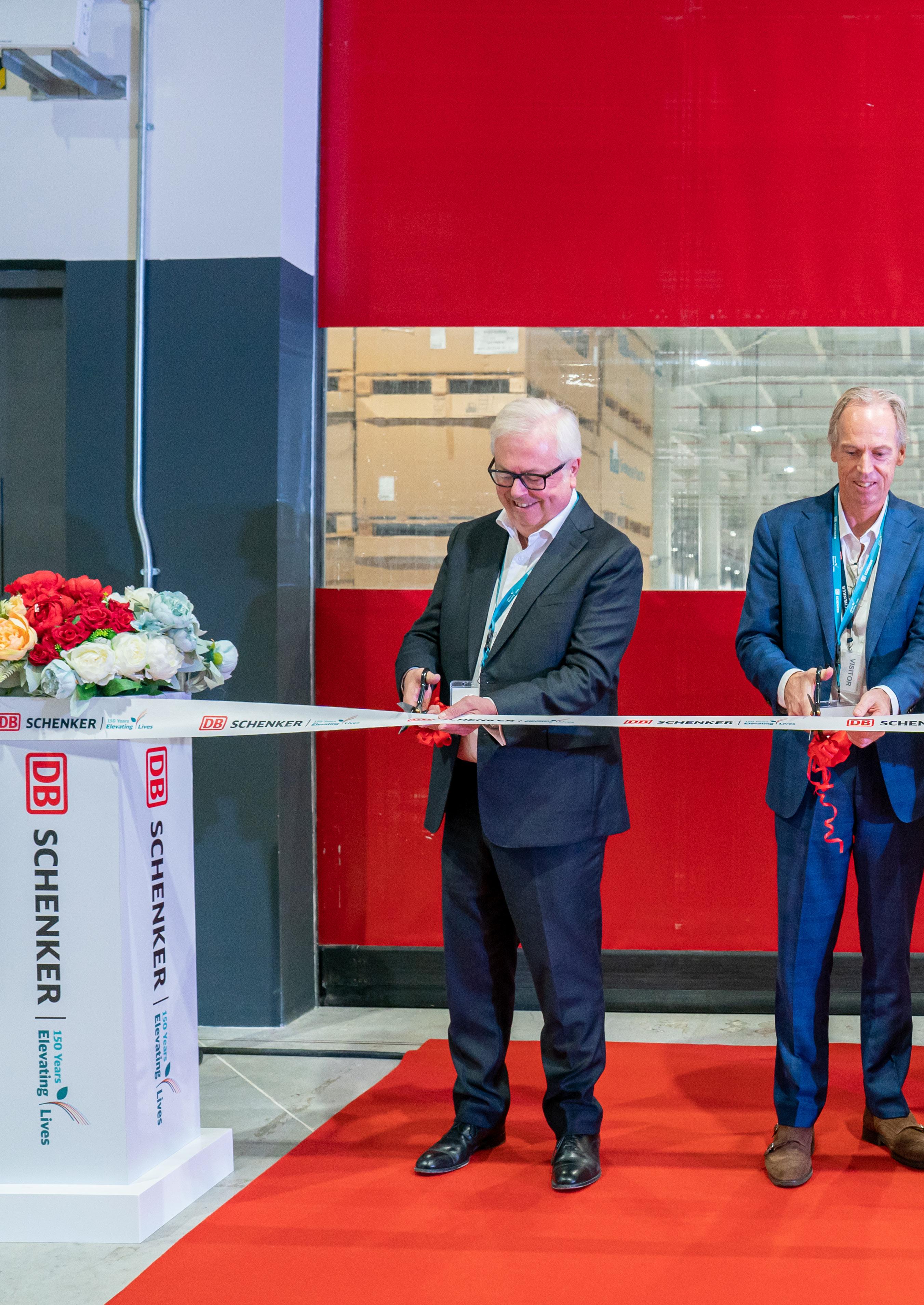 WRITTEN BY: SEAN ASHCROFT
PRODUCED BY: MUHAMMAD WAQAS
WRITTEN BY: SEAN ASHCROFT
PRODUCED BY: MUHAMMAD WAQAS


No one can deny the ineffective nature of UN COP conferences in the global quest for netzero carbon emissions by 2050. The goal of the recent COP27 event in Egypt was to build on the progress of previous conferences – of which there’s very little – and move the planet forward on the challenge of tackling climate change.
Yet the fact remains that words and talk are not enough. The planet is growing hotter by the day; the warmest 20 years on record have been the past 22 years, according to the World Meteorological Organisation, and it’s causing utter destruction in some of the poorest countries already.
Good intentions will do nothing to stabilise erratic weather patterns. Heatwaves, floods, severe storms, and rising sea levels due to the melting polar ice will continue unabated if talk isn’t translated into action – not only soon, but on a global scale, too. Parts of Fiji threatened already by rising sea levels have started strategising the moving of villages to alleviate flooding concerns, and it’s not long before other countries will have to follow suit.
In the wake of annual COP events, too many businesses sit on their hands, adopting a ‘wait-and-see’ approach to what will be required of them, legally, in terms of tackling carbon emissions. Others blanche at the costs associated with such action; they instead choose incremental progress.
The trouble with this approach is that it creates inertia at a time when the clock is ticking ever-louder on net-zero targets. Before long, we’ll be at a point of no return.
DB Schenker is, in this respect, unique: one of the world’s leading logistics service providers, it is a multinational company that understands the time for talking about sustainability is long past. Anyone who has seen – or read about – its logistics hubs’ development programme in Dubai will know that this is a company that prefers to be judged by its deeds on helping safeguard the future of our planet, not its words.

DB Schenker’s brand new sustainable logistics hub in Dubai is a marker of the company’s net-zero commitments

The company’s latest renewable-powered mega logistics’ hub in Dubai is known as DLC 3 and is the third in a series of such hubs, following the completion of DLC 1 in 2016 and DLC 2 in 2019. This third hub completes the company's expansion phase in the UAE.
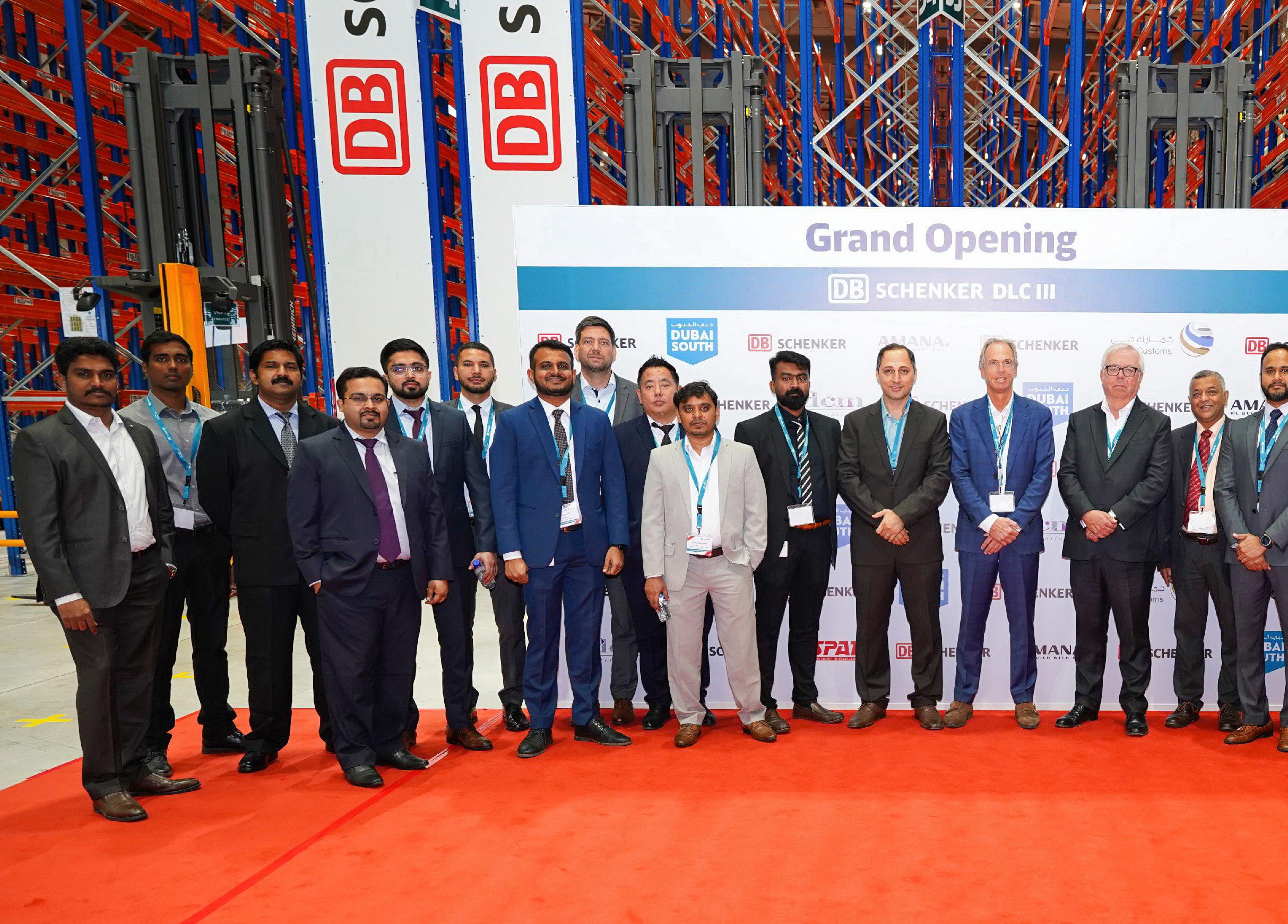
The 35,000sq/m DLC 3 is a warehouse that’s fully powered by solar energy. It’s also temperature controlled and offers total space for 90,000 standard European pallets.
“The solar systems installed at the facility provide the full energy demands for a vast expanse of warehouse and office space, saving a further 4,000 tonnes of CO2 emissions annually,” explains Ako Djaf, VP Contract Logistics SCM & Distribution, ME&A, for DB Schenker. “This is equivalent to planting over 400,000 trees.”
Djaf adds that, prior to construction, the company made a conscious choice to adopt environmentally-friendly technologies and
to use sustainable building materials. This, he says, meant a CO2 emissions’ saving of an estimated five tonnes.
It means that Schenker has become a frontrunner in the region regarding sustainability and innovative technologies, and that it is supporting the UAE’s Net Zero 2050 initiative.
Scenker committed to being net-zero by 2040 “Sustainability is a key mandate at DB Schenker,” says Djaf. “This is driven by our ambitious goal to become a carbon-neutral company by 2040. This is why, in the Middle East & Africa regions in recent years, we have invested so heavily in new facilities that make our operations sustainable.”
But the construction of this “expansive green logistics’ centre” also increases the capacity and scale of DB Schenker’s global network.
The company serves its multinational customers, who are global leaders in the FMCG, Fashion, Electronics and Automotive industries.
Its growing footprint in the Middle East and Africa regions is helping international companies expand their global reach, by providing access to a high-potential region that is the gateway to Africa.
TITLE: VP CONTRACT LOGISTICS ME&A
LOCATION: UNITED ARAB EMIRATES
Ako Djaf has worked in the logistics industry for more than 20 years. Since joining DB Schenker in 2005, Ako has held many leading positions in Central and Eastern Europe. As of 2012 to present, Ako is Head of Contract Logistics for the Middle East & Africa region.


In his current capacity as Head of DB Schenker’s Contract Logistics division in the Middle East and Africa Region, Ako oversees all DB Schenker Contract Logistics & Distribution activities across the Middle East and Africa and is responsible for setting its strategic directions and goals.
He is a member of the DB Schenker Global Logistics Steering Committee and a member of the DB Schenker regional board of directors.
AKO DJAF VP CONTRACT LOGISTICS ME&A, DB SCHENKER“In the Middle East & Africa we have the sun to thank for the region’s access to renewable energy”
This makes the company one of the fastest-growing logistics service providers in the region, expanding the total area of its operating logistics centres by more than 350,000m/sq in the past seven years.

Schenker’s Dubai warehouse and logistics hub facilities are located in the Logistics’ District in Dubai South. This is a 18km/ sq district designed to facilitate the rapid

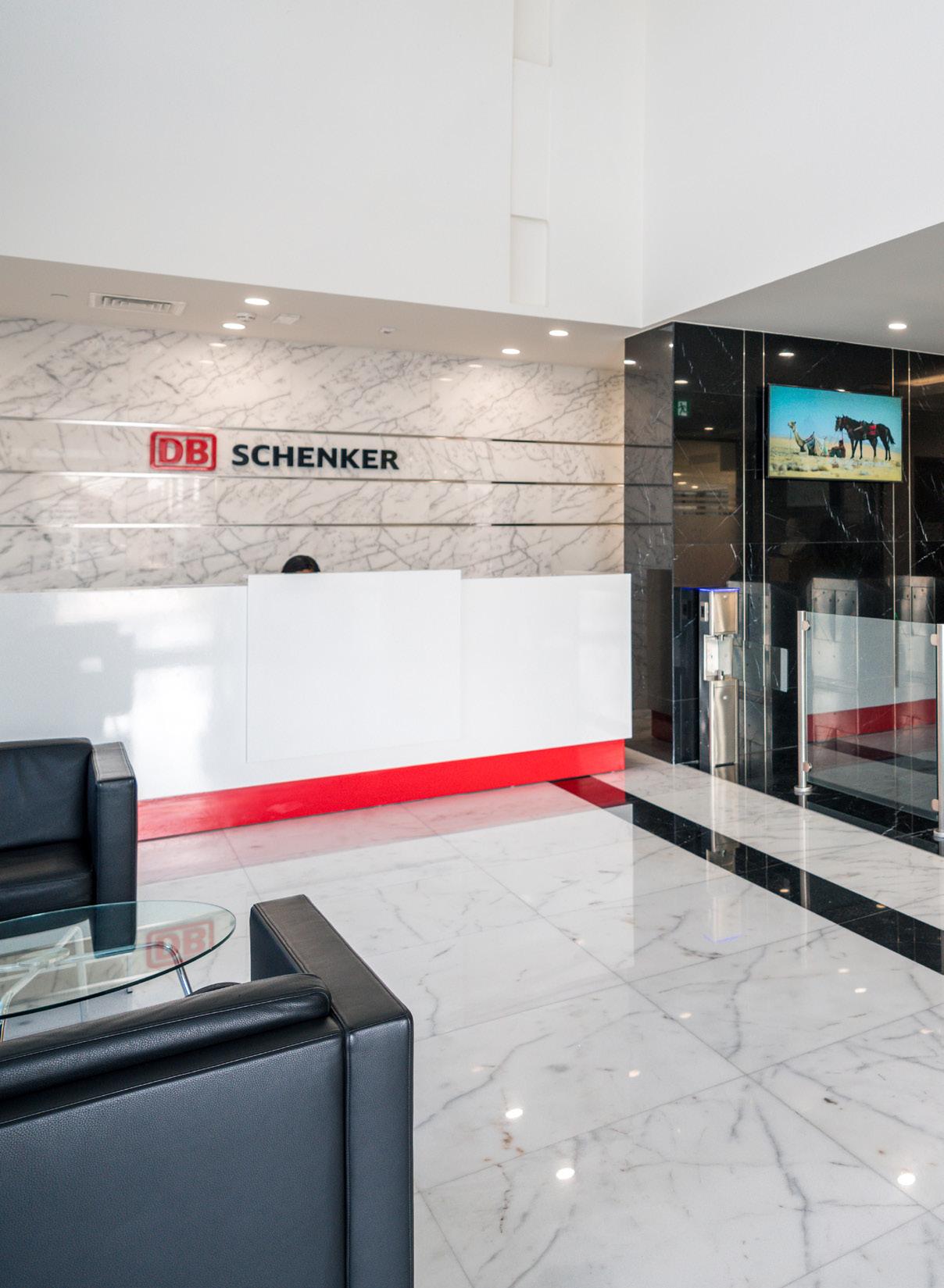
“As with any major project, having the right partners on board is crucial”
movement of goods through a busy logistics corridor, allowing cargo to be moved from port to airport in just 20 minutes, for example.
Its advanced infrastructure is perfect for companies like Schenker, as it helps support a seamless flow of goods, products, and services.
“DLC 3 leverages connectivity to land, sea, and air freight transportation modes,” says Djaf. “As with the first mega green warehouse DLC 2, the new centre further cements our sustainability commitment and agenda, not just in the region, but globally.”
“The three-phase growth plan we established in 2015, totalling 84.000 sqm of warehouse space, was an important strategic decision. All three facilities are close to Al Maktoum International Airport and Jabel Ali Port, one of the most important transportation hubs globally.
“Global and regional players benefit from the seamless, multimodal connectivity between road, air and sea transportation. This makes us the first choice for top-tier customers.”
The Dubai hub means the company can provide customers with warehousing solutions across a variety of industries, including consumer, automotive, industrial, and luxury products such as fashion items and accessories.

It provides a wide array of warehousing solutions, ranging from storage options for industries who work with dangerous goods to B2C ecommerce delivery services.
New Schenker Dubai logistics hub is state-of-the-art DLC 3 for example boasts a 5,000m/sq mezzanine floor, designed for various value-added service activities, and features state-of-the-art warehouse management technology, including AI, robotics and automation.
“In the Dubai South Free Zone, there is a lot of paperwork to be completed for the Dubai Customs Authority and other bodies,” says Djaf. “And we have automated much of this to improve efficiency.”
DLC 2 and 3 employ around 300 employees each, with staff working around the clock in three shifts, seven days a week.
“We offer different types of warehouse services, including picking-packing, but also value-added services,” says Djaf, who has drawn on his long experience with DB Schenker to keep its Dubai expansion on track.
Djaf – who studied industrial engineering with business administration in logistics and production – has been working in the logistics industry for 20 years, holding leadership roles in central and east Europe, as well as in the Middle East and Africa, throughout his career.

Currently, he is responsible for the development and results of all contract logistics and distribution activities in the ME&A region.
One of his first leadership roles with DB Schenker was in Russia, where he spent seven years being responsible for country development.
“It was an exciting time in Russia back then, and we were able to achieve many milestones in terms of development,” he says.
But nothing could prepare him or his team for the COVID-19 pandemic. Although, thankfully, the world is now largely in postpandemic mode, the shadow of COVID does still linger over Schenker’s Dubai operations, as managing the threat of further outbreaks is an ongoing issue.
Schenker works hard to keep COVID-19 outbreaks at bay “Logistics is, by its very nature, a peopleintense business,” says Djaf. “This presents

operational challenges across warehousing and contract logistics, particularly with regard to preventing COVID-19 infections.”

He says Schenker has installed strict regulations regarding pandemic environments within its Dubai facilities: “We avoid infections by breaking teams down into groups that never mix. So if there’s an outbreak, it will not compromise the business. There are enough disruptions happening in the supply chain as it is, without that.”
In terms of delivering the DLC 3 project, Djaf says that, as with any major project, having the right partners on board is crucial, both in terms of delivery and ongoing success.
”We needed companies who share the same ambitions as us,” explains Djaf. “We wouldn’t have reached these milestones without our strategic partners.”
One key partner was the Amana Group, a conglomerate of companies that services the construction sector in the region, specialising in sustainable construction methods and green building solutions.
Another was design engineer specialist DCM International, which designed and project-managed DLC 3.
DCM designed and project managed the DLC 2 and DLC 3 complexes, which includes DB Schenker’s regional headquarters. The HQ is constructed of precast concrete, while the distribution centre is a steel-frame building that is serviced by 36 loading docks. The warehouse is fitted with roof-mounted solar power generation, which produces 95% of DB Schenker’s power requirements.
“The concept designs with which DCM presented us are exactly what they delivered in the end result, on time and on budget,” says Djaf. “This is a rare thing in the industry, and makes DCM stand out in the region as a reliable guarantor for well-executed design and construction project management.”
“Global and
players in Dubai benefit from the seamless multimodal connectivity between road,

Djaf says that the new Dubai developments will help drive innovation for its customers, as well as helping it increase the efficiency of its operations.

As for the ME&A region that he oversees for Schenker, Djaf is bullish.
“It has tremendous potential in terms of business development and also sustainability,” he says. “We have the sun to thank for the region’s access to renewable energy. The governments of the UAE, Saudi Arabia and Egypt are just a few of those who are investing heavily in projects to create solar cities,which will be run on solar power.”
Djaf believes this will give them an economic edge, because they will have access to competitively priced energy, which he says is crucial for businesses like DB Schenker.
"This is one of the reasons that the region is proving attractive for foreign investors, who comprise the majority Schenker’s customers,” Djaf says.
“Many multinational companies are locating more and more in the region. They see it as a platform for distribution from a geographical point of view. It is very attractively positioned, connecting Africa with Europe and the Asia Pacific region.
“This is why I see the region growing very strongly in the coming years, even in the face of all the disruption we are seeing at the moment.”
“The Dubai hub means we can provide customers with warehousing solutions across consumer, automotive, industrial, and luxury products”
VP CONTRACT LOGISTICS ME&A, DB SCHENKER
